STUDENT LIFE
Student Voices
 Read Less
Read Less
How do you spend your days at KMD? Students speak their mind.
>> Read More
How do you spend your time at KMD?
What are your dreams for the future?
An honest conversation with five students.
What are your dreams for the future?
An honest conversation with five students.
Yoh Hiramatsu
Korea
First-year doctoral student
Real project: CREATO!
Korea
First-year doctoral student
Real project: CREATO!
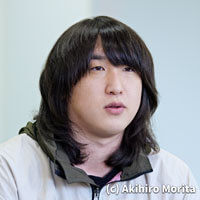
Emiko Kamiyama
Japan
Second-year master’s student
Real project: Network Media
Japan
Second-year master’s student
Real project: Network Media
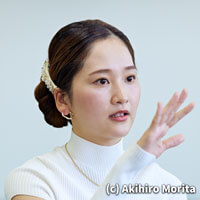
Ximing “Elizabeth” Shen
China
Second-year doctoral student
Real project: Embodied Media
China
Second-year doctoral student
Real project: Embodied Media

Haruka Onoda
Japan
Second-year master’s student
Real project: Embodied Media
Japan
Second-year master’s student
Real project: Embodied Media
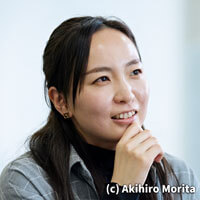
Masaya Shimizu
Japan
First-year master’s student
Real project: Embodied Media
Japan
First-year master’s student
Real project: Embodied Media
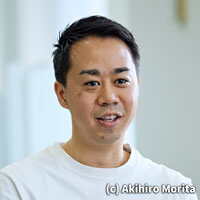
Please tell us about your backgrounds and what you hoped to achieve when applying for KMD.
Yoh: I was active as an acupuncturist after graduating from a medical university. Outside of work, a friend introduced me to e-sports competitions which left a big impression on me. This got me thinking that perhaps I could do something with my expertise to get involved with e-sports, and after studying physical care and management of athletes in graduate school I decided to enroll in KMD to further advance my research.
Emiko: I have been working as a stage actor for about 10 years, and as I continued to perform, I grew more interested in exploring the nature of communication in performing arts. I enrolled at KMD because I thought that by doing so I would be able to acquire fresh perspectives and novel approaches to communication by studying alongside people from different nationalities and diverse backgrounds.
Elizabeth: I studied economics at university in England. I didn't know what I wanted to do or what I was even capable of after graduating. I was, however, interested in MedTech, or the use of IoT and other technologies in medicine. I came across KMD while looking for a school to pursue this field.
Haruka: I graduated from an art school and was working as a designer at a company that produces miniature models. I grew frustrated when I hit a roadblock due to my own lack of knowledge while planning an exhibition involving AR and other cutting-edge technologies. When I sought to turn this frustration into an opportunity to learn, I came across and was blown away by the works of Tetsuya Mizuguchi, who creates next-generation synthetic musical experiences. When I learned that Mr. Mizuguchi is a project professor at KMD, I decided to enroll.
Masaya: I first became interested in enrolling during the COVID-19 pandemic while working remotely from home as a designer for an architectural firm. The situation inspired me to revisit the role that architecture ought to play in society. While revisiting that topic I came across the works of Tetsuya Mizuguchi, which ultimately fueled my desire to design architecture that has a greater impact on people, as well as explore the intersection of architecture and media design and the expansion of the field as a whole.
Yoh: I was active as an acupuncturist after graduating from a medical university. Outside of work, a friend introduced me to e-sports competitions which left a big impression on me. This got me thinking that perhaps I could do something with my expertise to get involved with e-sports, and after studying physical care and management of athletes in graduate school I decided to enroll in KMD to further advance my research.
Emiko: I have been working as a stage actor for about 10 years, and as I continued to perform, I grew more interested in exploring the nature of communication in performing arts. I enrolled at KMD because I thought that by doing so I would be able to acquire fresh perspectives and novel approaches to communication by studying alongside people from different nationalities and diverse backgrounds.
Elizabeth: I studied economics at university in England. I didn't know what I wanted to do or what I was even capable of after graduating. I was, however, interested in MedTech, or the use of IoT and other technologies in medicine. I came across KMD while looking for a school to pursue this field.
Haruka: I graduated from an art school and was working as a designer at a company that produces miniature models. I grew frustrated when I hit a roadblock due to my own lack of knowledge while planning an exhibition involving AR and other cutting-edge technologies. When I sought to turn this frustration into an opportunity to learn, I came across and was blown away by the works of Tetsuya Mizuguchi, who creates next-generation synthetic musical experiences. When I learned that Mr. Mizuguchi is a project professor at KMD, I decided to enroll.
Masaya: I first became interested in enrolling during the COVID-19 pandemic while working remotely from home as a designer for an architectural firm. The situation inspired me to revisit the role that architecture ought to play in society. While revisiting that topic I came across the works of Tetsuya Mizuguchi, which ultimately fueled my desire to design architecture that has a greater impact on people, as well as explore the intersection of architecture and media design and the expansion of the field as a whole.
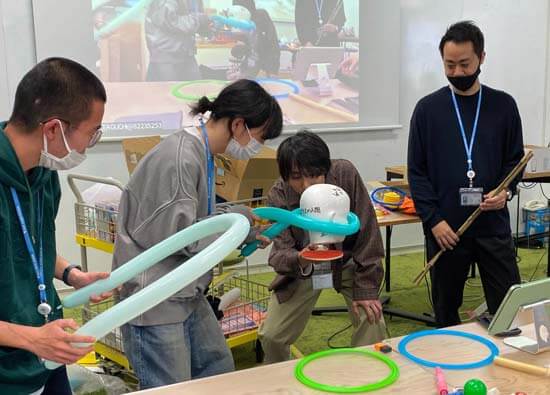
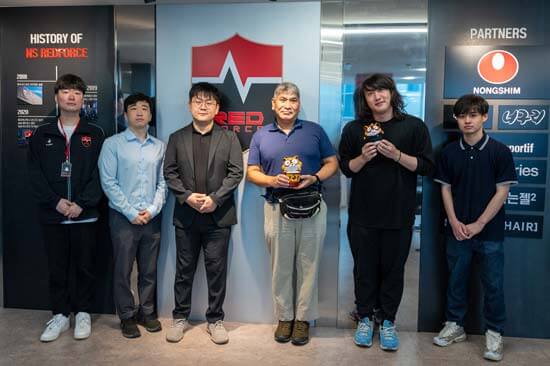
Please tell us about your day-to-day activities and the research you conduct as part of your Real Projects.
Yoh: I am currently balancing working as a practitioner at a university-affiliated acupuncture clinic and a lecturer at an e-sports vocational school with my research on healthcare management in e-sports. Academic research on the field of e-sports is still in its infancy, so I am researching comprehensive management models with the goal of contributing to the healthy development of the industry.
Emiko: In addition to my research, I also facilitate programs streamed online as well as contribute essays to newspapers. I am currently seeking to establish a methodology for streamlining communication in performance instruction that anyone can put into practice while exploring methods of instruction using digital technologies.
Elizabeth: I am currently a 3rd year PhD student, so my days are filled with writing reports and my thesis. I usually spend most of my time in the Cybernetic Being Lab, KMD's research base in Takeshiba, where I conduct research to support Dementia Eyes, a program that uses AR technology to simulate the visual difficulties experienced by dementia patients and those with similar conditions.
Haruka: I am also in the Takeshiba lab from morning to evening on weekdays, working on experiments, papers, and research reports. I am researching the use of VR to simulate changes in bodily perception—technology that makes one feel as if their body has become smaller or larger. I hope to find practical applications for this type of technology that allows users to shift their perspective in next-generation entertainment.
Masaya: I split my time between working in the Hiyoshi campus library, conducting research at the Takeshiba lab, and advancing my architectural design work. I want to try to add value to architectural spaces through designs that seamlessly integrate technology to stimulate our senses and gently encourage behavioral change. In a broader sense, I hope to expand the profession of architectural design itself.
Yoh: I am currently balancing working as a practitioner at a university-affiliated acupuncture clinic and a lecturer at an e-sports vocational school with my research on healthcare management in e-sports. Academic research on the field of e-sports is still in its infancy, so I am researching comprehensive management models with the goal of contributing to the healthy development of the industry.
Emiko: In addition to my research, I also facilitate programs streamed online as well as contribute essays to newspapers. I am currently seeking to establish a methodology for streamlining communication in performance instruction that anyone can put into practice while exploring methods of instruction using digital technologies.
Elizabeth: I am currently a 3rd year PhD student, so my days are filled with writing reports and my thesis. I usually spend most of my time in the Cybernetic Being Lab, KMD's research base in Takeshiba, where I conduct research to support Dementia Eyes, a program that uses AR technology to simulate the visual difficulties experienced by dementia patients and those with similar conditions.
Haruka: I am also in the Takeshiba lab from morning to evening on weekdays, working on experiments, papers, and research reports. I am researching the use of VR to simulate changes in bodily perception—technology that makes one feel as if their body has become smaller or larger. I hope to find practical applications for this type of technology that allows users to shift their perspective in next-generation entertainment.
Masaya: I split my time between working in the Hiyoshi campus library, conducting research at the Takeshiba lab, and advancing my architectural design work. I want to try to add value to architectural spaces through designs that seamlessly integrate technology to stimulate our senses and gently encourage behavioral change. In a broader sense, I hope to expand the profession of architectural design itself.
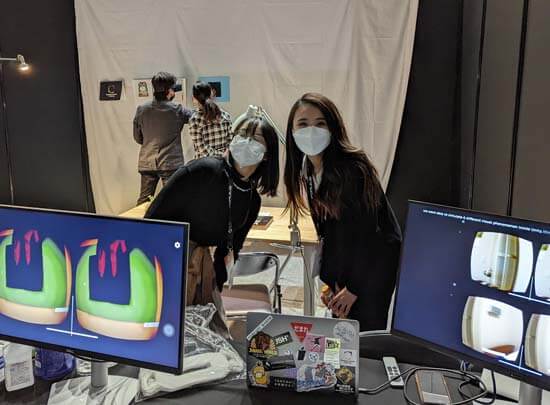

What kind of place is KMD to you?
Yoh: It’s a place that encourages you to do what you want to do. For example, I have no knowledge of engineering, but here I have classmates and project members from various areas of expertise who will do their best to support me and, if our goals are compatible, we can work together on research. The teachers encourage us to collaborate with outside companies when necessary, which is a great way to keep advancing your own research.
Emiko: I completely agree. The Real Project I am a part of deals mainly with the Internet, which is an area completely outside of my expertise. Nonetheless, my instructors, peers and more senior classmates lent their skills for the areas I lacked. I am happy to be of service to everyone in my area of expertise, even if only in a small way, and I feel very comfortable in an environment where we can work together to improve each other's skills.
Elizabeth: There are so many interesting Real Projects here that some people change projects depending on their objectives. For me, I feel that KMD is a place that understands my strengths even when I do not, brings out my potential, and helps me grow further.
Haruka: It is truly a diverse place, with a wide variety of nationalities, backgrounds, and values. I find it a very interesting experience to be able to understand what kind of person I am, relatively speaking, as I discuss things with this diverse set of people.
Masaya: I studied architecture at SFC's undergraduate and graduate schools, and inevitably spent a lot of time with my peers who were researching the same thing. I find KMD to be a very interesting environment because I am able to take classes and collaborate closely with people who have ideas and goals that are a complete 180 degrees different from my own.
Yoh: It’s a place that encourages you to do what you want to do. For example, I have no knowledge of engineering, but here I have classmates and project members from various areas of expertise who will do their best to support me and, if our goals are compatible, we can work together on research. The teachers encourage us to collaborate with outside companies when necessary, which is a great way to keep advancing your own research.
Emiko: I completely agree. The Real Project I am a part of deals mainly with the Internet, which is an area completely outside of my expertise. Nonetheless, my instructors, peers and more senior classmates lent their skills for the areas I lacked. I am happy to be of service to everyone in my area of expertise, even if only in a small way, and I feel very comfortable in an environment where we can work together to improve each other's skills.
Elizabeth: There are so many interesting Real Projects here that some people change projects depending on their objectives. For me, I feel that KMD is a place that understands my strengths even when I do not, brings out my potential, and helps me grow further.
Haruka: It is truly a diverse place, with a wide variety of nationalities, backgrounds, and values. I find it a very interesting experience to be able to understand what kind of person I am, relatively speaking, as I discuss things with this diverse set of people.
Masaya: I studied architecture at SFC's undergraduate and graduate schools, and inevitably spent a lot of time with my peers who were researching the same thing. I find KMD to be a very interesting environment because I am able to take classes and collaborate closely with people who have ideas and goals that are a complete 180 degrees different from my own.
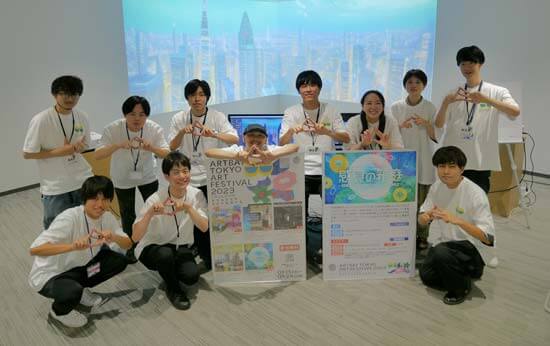
Finally, do you have a message for those who are considering enrolling in KMD?
Yoh: Once you enter KMD, be prepared for your idea of common sense and what is “normal” to be thrown completely out of the window [laughs]. Considering risks, delivering appropriate interventions to patients, and maximizing results under various constraints was the norm for me in the medical world. But that was only one facet of medical care, and encountering a group of people with such diverse perspectives upends conventional wisdom. KMD is full of people who enjoy that kind of paradigm shift. That, for me, is the most valuable element of my learning at KMD.
Emiko: KMD also made me realize that there are different sides to what I believed to be “right.” It also taught me that I can accomplish my goals in ways that I never even imagined. If you have a clearly defined sense of purpose or issue you want to tackle, I would recommend that you enroll in the program after you have gained experience in the working world, as I believe that your possibilities will expand after enrollment.
Elizabeth: Contrary to others, I enrolled at KMD to find out what I am capable of.And as I participated in various projects, I discovered what I could do.If this was possible for me, it should be for you too.I encourage prospective students to think of KMD as a place where you can accomplish great projects.
Haruka: Every day brings a new discovery. At KMD, there are many opportunities to express your thoughts and listen to others, so I would like you to actively approach various people and try different things once you enter the school. I am confident that you will find student life to be fulfilling.
Masaya: I have only been at KMD for a short time, but the classes and projects at KMD are good training for noticing social issues. If we can successfully connect our past research and working experience with the new questions we have found here, I believe we will be able to generate new perspectives for society. However, there are so many interesting projects that I'm still debating which one to choose... [laughs].
Yoh: Once you enter KMD, be prepared for your idea of common sense and what is “normal” to be thrown completely out of the window [laughs]. Considering risks, delivering appropriate interventions to patients, and maximizing results under various constraints was the norm for me in the medical world. But that was only one facet of medical care, and encountering a group of people with such diverse perspectives upends conventional wisdom. KMD is full of people who enjoy that kind of paradigm shift. That, for me, is the most valuable element of my learning at KMD.
Emiko: KMD also made me realize that there are different sides to what I believed to be “right.” It also taught me that I can accomplish my goals in ways that I never even imagined. If you have a clearly defined sense of purpose or issue you want to tackle, I would recommend that you enroll in the program after you have gained experience in the working world, as I believe that your possibilities will expand after enrollment.
Elizabeth: Contrary to others, I enrolled at KMD to find out what I am capable of.And as I participated in various projects, I discovered what I could do.If this was possible for me, it should be for you too.I encourage prospective students to think of KMD as a place where you can accomplish great projects.
Haruka: Every day brings a new discovery. At KMD, there are many opportunities to express your thoughts and listen to others, so I would like you to actively approach various people and try different things once you enter the school. I am confident that you will find student life to be fulfilling.
Masaya: I have only been at KMD for a short time, but the classes and projects at KMD are good training for noticing social issues. If we can successfully connect our past research and working experience with the new questions we have found here, I believe we will be able to generate new perspectives for society. However, there are so many interesting projects that I'm still debating which one to choose... [laughs].
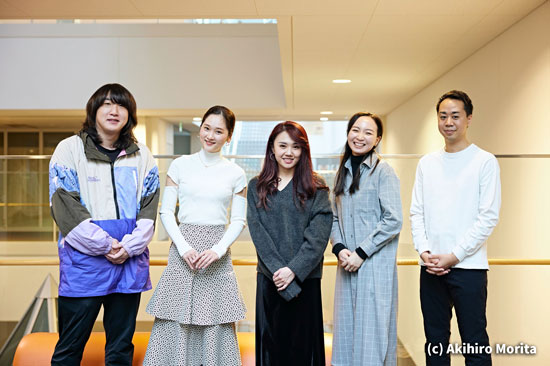
(This interview was held in March 2024.)
How do you spend your time at KMD?
What are your dreams for the future?
An honest conversation with seven students.
What are your dreams for the future?
An honest conversation with seven students.
Hiromasa Ogawa
Japan
Second-year master’s student
Real Project: Embodied Media
Japan
Second-year master’s student
Real Project: Embodied Media
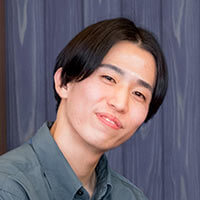
Lucas Ogasawara De Oliveira
Brazil
Second-year master’s student
Real Project: Embodied Media
Brazil
Second-year master’s student
Real Project: Embodied Media
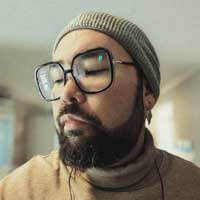
Annika Kondo
Denmark
Second-year master’s student
Real project: PLAY
Denmark
Second-year master’s student
Real project: PLAY
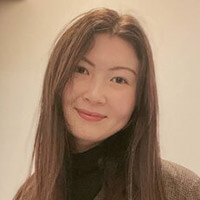
Yasutomo Yamaguchi
Japan
Second-year master’s student
Real Project: Future Crafts
Japan
Second-year master’s student
Real Project: Future Crafts
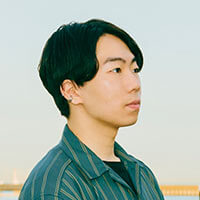
Nao Ou
Japan
Second-year master's student
Real Project: Embodied Media
Japan
Second-year master's student
Real Project: Embodied Media
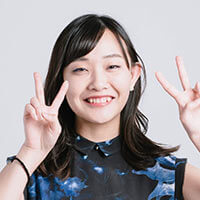
Xin Wan
China
Second-year master's student
Real Project: Global Education
China
Second-year master's student
Real Project: Global Education

Ewa Szyszka
Poland
Second-year master's student
Real Project: Geist
Poland
Second-year master's student
Real Project: Geist
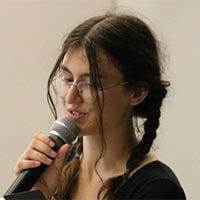
Tell us why you enrolled at KMD and about the project you’re working on right now.
Hiromasa: I studied engineering at a Japanese college of technology (KOSEN). I first learned about KMD from my classmates and teachers while I was participating in a student venture project and struggling to decide whether to start working full time or continue my education. I wanted to expand my understanding of design and management in addition to my knowledge of engineering. For my role in the Embodied Media project, I am combining my personal background in street dance and engineering to develop a device that can enable anyone, even beginners, to experience the excitement of dance.
Nao: After graduating from college, I began working in IT. While working at my company, I was impressed by their proactive efforts to promote accessibility. I decided to enroll at KMD because I wanted to use technology to contribute to solving problems. In the Embodied Media project, I am conducting research on how haptic technology can be used to engage with the human psyche.
Xin: While I was a student in the Keio University Faculty of Economics, I met students from the Graduate School of Media Design and heard about their projects at the KMD forum. They seemed really interesting, so I decided to enroll. At first, I didn’t have a clear vision of what I wanted to do for my research, but as I participated in my KMD Real Project, my interest in education deepened. I am currently researching education related to food and sustainability for the Global Education project.
Lucas: After I graduated from the Arts Institute at the State University of Campinas (Unicamp), I started working in the film industry producing both fictional works and documentaries. For my next step, I wanted to explore possibilities in fields outside of the entertainment industry and so I came to KMD on a scholarship as a member of the Japanese-Brazilian community. For the Embodied Media Lab, I am investigating intersectionality on human–computer interaction (HCI) combining arts, sociology studies, robotics and haptics.
Annika: I am originally from Denmark and studied Media Design at a university there. However, I had always wanted to study in Japan, so after I graduated, I enrolled at KMD to continue my studies. For the PLAY project, I am collaborating with telecommunications companies to research our sense of smell.
Yasutomo: While I majored in Design in college, I wasn’t sure what I wanted to do after graduation. I had a friend studying at KMD at the time and they told me about their experiences. I wanted to learn more about design theory, business, and management strategy, so it seemed like a perfect fit. For the Future Crafts project, I am using my background living in Hokkaido to conduct machine learning and other research on how to provide novel learning opportunities for the indigenous Ainu people of the area.
Ewa: I’ve always been very interested in Asian cultures. I thought of Japan as being especially technologically advanced, so I decided that I wanted to study at a Japanese university for grad school. From the options I was looking at, KMD had multiple intriguing research themes and opportunities, as well as an open learning atmosphere that I found appealing. I am researching the development of a haptic diving suit for the Geist project. The suit would use a diver’s sense of touch to communicate information and allow them to navigate underwater more safely.
Hiromasa: I studied engineering at a Japanese college of technology (KOSEN). I first learned about KMD from my classmates and teachers while I was participating in a student venture project and struggling to decide whether to start working full time or continue my education. I wanted to expand my understanding of design and management in addition to my knowledge of engineering. For my role in the Embodied Media project, I am combining my personal background in street dance and engineering to develop a device that can enable anyone, even beginners, to experience the excitement of dance.
Nao: After graduating from college, I began working in IT. While working at my company, I was impressed by their proactive efforts to promote accessibility. I decided to enroll at KMD because I wanted to use technology to contribute to solving problems. In the Embodied Media project, I am conducting research on how haptic technology can be used to engage with the human psyche.
Xin: While I was a student in the Keio University Faculty of Economics, I met students from the Graduate School of Media Design and heard about their projects at the KMD forum. They seemed really interesting, so I decided to enroll. At first, I didn’t have a clear vision of what I wanted to do for my research, but as I participated in my KMD Real Project, my interest in education deepened. I am currently researching education related to food and sustainability for the Global Education project.
Lucas: After I graduated from the Arts Institute at the State University of Campinas (Unicamp), I started working in the film industry producing both fictional works and documentaries. For my next step, I wanted to explore possibilities in fields outside of the entertainment industry and so I came to KMD on a scholarship as a member of the Japanese-Brazilian community. For the Embodied Media Lab, I am investigating intersectionality on human–computer interaction (HCI) combining arts, sociology studies, robotics and haptics.
Annika: I am originally from Denmark and studied Media Design at a university there. However, I had always wanted to study in Japan, so after I graduated, I enrolled at KMD to continue my studies. For the PLAY project, I am collaborating with telecommunications companies to research our sense of smell.
Yasutomo: While I majored in Design in college, I wasn’t sure what I wanted to do after graduation. I had a friend studying at KMD at the time and they told me about their experiences. I wanted to learn more about design theory, business, and management strategy, so it seemed like a perfect fit. For the Future Crafts project, I am using my background living in Hokkaido to conduct machine learning and other research on how to provide novel learning opportunities for the indigenous Ainu people of the area.
Ewa: I’ve always been very interested in Asian cultures. I thought of Japan as being especially technologically advanced, so I decided that I wanted to study at a Japanese university for grad school. From the options I was looking at, KMD had multiple intriguing research themes and opportunities, as well as an open learning atmosphere that I found appealing. I am researching the development of a haptic diving suit for the Geist project. The suit would use a diver’s sense of touch to communicate information and allow them to navigate underwater more safely.


What is typical life like as a KMD student?
Annika: My first semester was completely online, so it was hard to get used to it, but after the next semester started there were more opportunities to go to campus. My normal life involves working as a student assistant in the Project Room where I can spend lots of time talking to other project members and general students.
Ewa: I also had few interactions with other students at first due to student conduct restrictions. As the number of in-person classes increased, though, I was able to join the judo and powerlifting clubs and make lots of friends. Now, I go to campus four times a week. On my days off, I go out or work at my part-time job.
Yasutomo: Once we entered 2022, there were finally more opportunities to try things off-campus, give presentations at academic conferences, and exhibit some of the progress I’ve made on my project research. Other than my research activities, I work as a graphic designer and take requests within KMD to practice my skills.
Hiromasa: For the most part, I spend my time at the Embodied Media lab in Takeshiba. Outside of school, I work as the CEO of a student venture. I work with other members that I met back during my time in technical college to develop apps and do sales and merchandising.
Nao: I like to focus on my research, so I am using money that I saved up from my old job in order to give it my single-minded attention.
Xin: Right now, I am mostly doing fieldwork, workshops, or other activities, so I don’t make it to campus very often. I would say that I am enjoying my student experience to the fullest, though, since I get to spend time eating out and going to theme parks with friends.
Lucas: I spend most of my time in the KMD Project Room. The room functions as more than just a research space, so I get to hang out with other project members and my other friends. Off campus, I am interested in gastronomy and trying new types of food.
Annika: My first semester was completely online, so it was hard to get used to it, but after the next semester started there were more opportunities to go to campus. My normal life involves working as a student assistant in the Project Room where I can spend lots of time talking to other project members and general students.
Ewa: I also had few interactions with other students at first due to student conduct restrictions. As the number of in-person classes increased, though, I was able to join the judo and powerlifting clubs and make lots of friends. Now, I go to campus four times a week. On my days off, I go out or work at my part-time job.
Yasutomo: Once we entered 2022, there were finally more opportunities to try things off-campus, give presentations at academic conferences, and exhibit some of the progress I’ve made on my project research. Other than my research activities, I work as a graphic designer and take requests within KMD to practice my skills.
Hiromasa: For the most part, I spend my time at the Embodied Media lab in Takeshiba. Outside of school, I work as the CEO of a student venture. I work with other members that I met back during my time in technical college to develop apps and do sales and merchandising.
Nao: I like to focus on my research, so I am using money that I saved up from my old job in order to give it my single-minded attention.
Xin: Right now, I am mostly doing fieldwork, workshops, or other activities, so I don’t make it to campus very often. I would say that I am enjoying my student experience to the fullest, though, since I get to spend time eating out and going to theme parks with friends.
Lucas: I spend most of my time in the KMD Project Room. The room functions as more than just a research space, so I get to hang out with other project members and my other friends. Off campus, I am interested in gastronomy and trying new types of food.
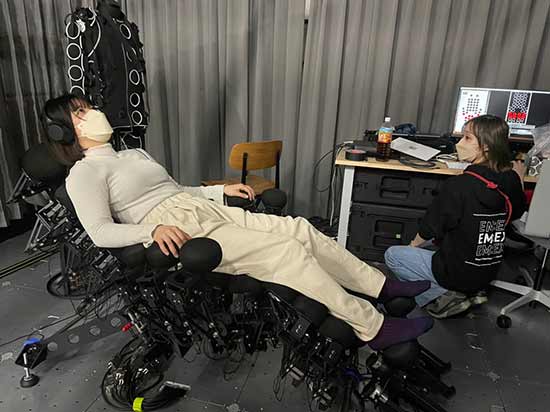
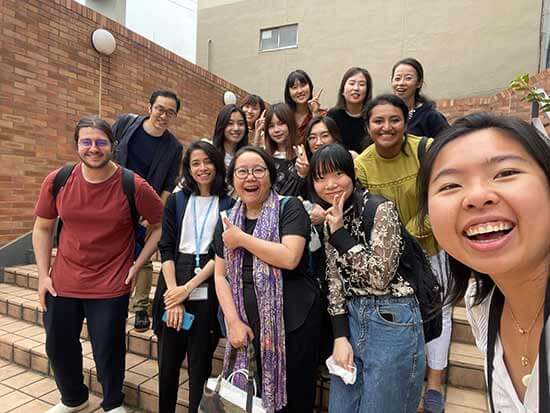
Are there any events or programs at KMD that have been particularly impressive?
Hiromasa: First-year master’s students in Embodied Media participate every Spring Semester in the International Collegiate Virtual Reality Contest (IVRC). We had to create and submit content for consideration between April and December. I was thrilled because our year’s team was the first to win the competition from KMD.
Nao: I was on the same team. I had little experience in monozukuri, the Japanese way of “making things,” but through the help of my upperclassmen and the experience in general, I was able to get closer to a variety of people and learn communication skills that wouldn’t be used in regular classes.
Lucas: I got to participate in Embodied Media’s annual “Recombinant” exhibition. The exhibition has live performance and art installations. I used my skills as a film producer to act as one of the organizers for the entire event. It was an invaluable experience to get feedback from the attendees.
What advice do you have for people thinking about applying to KMD?
Yasutomo: I think that KMD is a place where people can accomplish anything they want to do. The faculty is very supportive, so it is a wonderful environment for anyone wanting to pursue their passion.
Hiromasa: I think that KMD is a great fit for people who have a clear vision of what they want. When those types of people enroll, their individual personalities have a way of creating more and more new and exciting things from interacting with each other.
Lucas: In some ways, I think that KMD is a relaxing space. Because students are given so much freedom, there’s a chance for you to examine yourself and really take the time to learn from other people around you.
Annika: I think that it’s important that students are open-minded and like to take on challenges. Classes are important, but you can learn the most from communicating with other students. My hope would be for the applicant to take advantage of this environment and draw inspiration from multiple angles.
Xin:I feel the same way. If you’re interested in something, it’s important to try talking to your upperclassmen or other people around you.
Hiromasa: First-year master’s students in Embodied Media participate every Spring Semester in the International Collegiate Virtual Reality Contest (IVRC). We had to create and submit content for consideration between April and December. I was thrilled because our year’s team was the first to win the competition from KMD.
Nao: I was on the same team. I had little experience in monozukuri, the Japanese way of “making things,” but through the help of my upperclassmen and the experience in general, I was able to get closer to a variety of people and learn communication skills that wouldn’t be used in regular classes.
Lucas: I got to participate in Embodied Media’s annual “Recombinant” exhibition. The exhibition has live performance and art installations. I used my skills as a film producer to act as one of the organizers for the entire event. It was an invaluable experience to get feedback from the attendees.
What advice do you have for people thinking about applying to KMD?
Yasutomo: I think that KMD is a place where people can accomplish anything they want to do. The faculty is very supportive, so it is a wonderful environment for anyone wanting to pursue their passion.
Hiromasa: I think that KMD is a great fit for people who have a clear vision of what they want. When those types of people enroll, their individual personalities have a way of creating more and more new and exciting things from interacting with each other.
Lucas: In some ways, I think that KMD is a relaxing space. Because students are given so much freedom, there’s a chance for you to examine yourself and really take the time to learn from other people around you.
Annika: I think that it’s important that students are open-minded and like to take on challenges. Classes are important, but you can learn the most from communicating with other students. My hope would be for the applicant to take advantage of this environment and draw inspiration from multiple angles.
Xin:I feel the same way. If you’re interested in something, it’s important to try talking to your upperclassmen or other people around you.
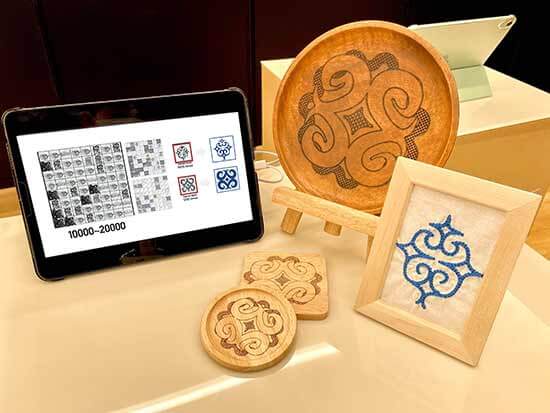
What are your dreams for the future?
Hiromasa: I have made so many connections here at KMD which I have incorporated into my essence in new ways. I sense incredible possibilities lie in working together with my colleagues and friends, so I hope to continue doing monozukuri with a diverse variety of individuals moving forward.
Yasutomo: After graduation, I want to work in design. Eventually, I would like to take those skills I get from that job to return to Hokkaido and create spaces and environments where people can practice design and monozukuri.
Nao: I want to continue to contribute to the well-being of my family and friends, both in my work and in my hobbies.
Annika: I hope to get a job in a multicultural and diverse work environment where design and monozukuri play a key role in my life.
Xin: The KMD Real Project has instilled in me an interest in education, so I hope to further research this area and eventually find a position where I can be involved in the education sector.
Lucas: No matter what I end up doing in the future, I will always want to prioritize equality and how I can help make the world a better place.
Ewa: I am currently hoping to enter a PhD program. After that, I think I would like to work in software development or R&D. My ultimate goal is to start my own company.
Hiromasa: I have made so many connections here at KMD which I have incorporated into my essence in new ways. I sense incredible possibilities lie in working together with my colleagues and friends, so I hope to continue doing monozukuri with a diverse variety of individuals moving forward.
Yasutomo: After graduation, I want to work in design. Eventually, I would like to take those skills I get from that job to return to Hokkaido and create spaces and environments where people can practice design and monozukuri.
Nao: I want to continue to contribute to the well-being of my family and friends, both in my work and in my hobbies.
Annika: I hope to get a job in a multicultural and diverse work environment where design and monozukuri play a key role in my life.
Xin: The KMD Real Project has instilled in me an interest in education, so I hope to further research this area and eventually find a position where I can be involved in the education sector.
Lucas: No matter what I end up doing in the future, I will always want to prioritize equality and how I can help make the world a better place.
Ewa: I am currently hoping to enter a PhD program. After that, I think I would like to work in software development or R&D. My ultimate goal is to start my own company.
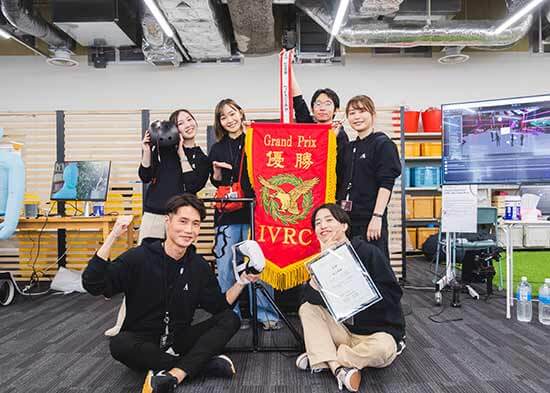
(This interview was held in March 2023.)
KMD Student Roundtable 2022:
How do you spend your time at KMD?
What are your dreams for the future?
Five students speak their mind.
How do you spend your time at KMD?
What are your dreams for the future?
Five students speak their mind.
Hideyuki Watanabe
Japan
Second-year master’s student
Real Project: Creative Industry
Japan
Second-year master’s student
Real Project: Creative Industry

Nanako Shimokawa (Maki)
Japan
Second-year master’s student
Real Project: Policy Project
Japan
Second-year master’s student
Real Project: Policy Project

Sae Moriyama
Japan
Second-year master’s student
Real project: ITOMA
Japan
Second-year master’s student
Real project: ITOMA
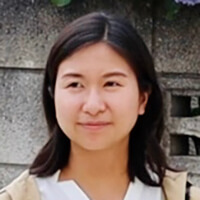
Misaki Kikuchi
Japan
First-year master’s student
Real Project: Global Education
Japan
First-year master’s student
Real Project: Global Education

Takahiro Fujimoto (Taka)
Japan
Second-year master's student
Real Project: Network Media
Japan
Second-year master's student
Real Project: Network Media
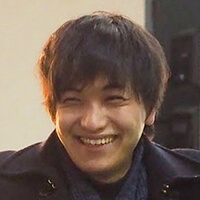
Why did you enroll at KMD?
Hideyuki: While I currently work for an internationally-owned private corporation, when I started thinking about branching out, I became aware of KMD. I chose the School’s “Creative Industry” Real Project because its topics overlap with areas I want to work on in the future and the program seeks to address problems using new approaches.
Maki: After I became a university student, my mother and I started running a vegan restaurant. In the midst of trial and error motivated by the desire that a plant-based diet might someday be regarded as an accessible option within people’s daily food choices, I found myself wanting to incorporate other senses into the experience. That is when I heard about KMD. The school’s environment is supportive of students following their passions and I have loved furthering my research since I enrolled.
Sae: While working for seven years in a white-collar job, I continued to use my spare time in order to plan and organize events. As I did this, I became especially interested in spatial design and learned about KMD. I have been able to pursue a variety of research oriented by how “things” and “spaces” can facilitate people’s experiences as part of the Real Project “ITOMA.”
Misaki: I studied civil engineering as an undergraduate and planned to go to Graduate School for structural design. As I reconsidered what I wanted to do in the future, however, I realized that I wanted to make things that bring people together. That was what made me decide to focus again on design and to study at KMD.
Taka: For my graduation thesis I digitized the works of world-famous artists and experimented to see if people would still recognize the artists’ touch when they were broken down and scrambled into new forms. My supervising professor recommended either pursuing a master’s degree at an art school or studying at KMD. I chose the latter.
Hideyuki: While I currently work for an internationally-owned private corporation, when I started thinking about branching out, I became aware of KMD. I chose the School’s “Creative Industry” Real Project because its topics overlap with areas I want to work on in the future and the program seeks to address problems using new approaches.
Maki: After I became a university student, my mother and I started running a vegan restaurant. In the midst of trial and error motivated by the desire that a plant-based diet might someday be regarded as an accessible option within people’s daily food choices, I found myself wanting to incorporate other senses into the experience. That is when I heard about KMD. The school’s environment is supportive of students following their passions and I have loved furthering my research since I enrolled.
Sae: While working for seven years in a white-collar job, I continued to use my spare time in order to plan and organize events. As I did this, I became especially interested in spatial design and learned about KMD. I have been able to pursue a variety of research oriented by how “things” and “spaces” can facilitate people’s experiences as part of the Real Project “ITOMA.”
Misaki: I studied civil engineering as an undergraduate and planned to go to Graduate School for structural design. As I reconsidered what I wanted to do in the future, however, I realized that I wanted to make things that bring people together. That was what made me decide to focus again on design and to study at KMD.
Taka: For my graduation thesis I digitized the works of world-famous artists and experimented to see if people would still recognize the artists’ touch when they were broken down and scrambled into new forms. My supervising professor recommended either pursuing a master’s degree at an art school or studying at KMD. I chose the latter.
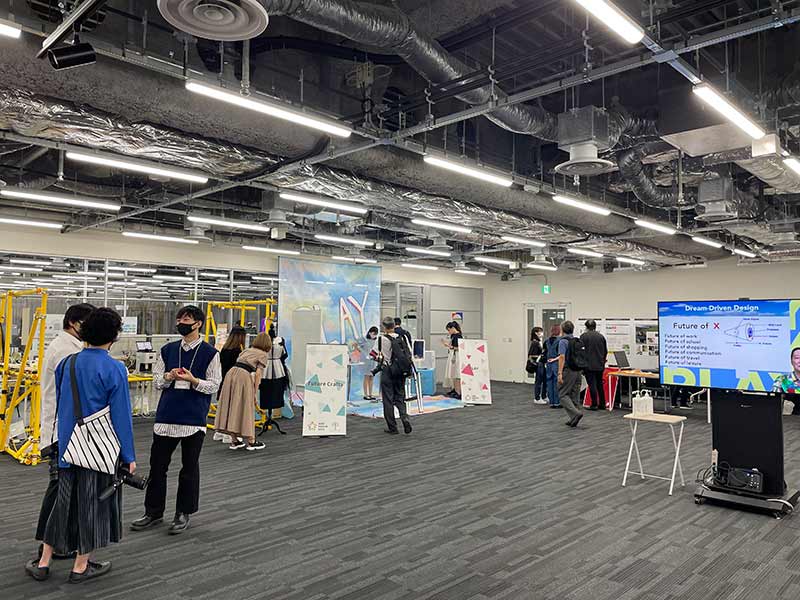

Please tell us about your current projects.
Hideyuki: The “Creative Industry” Real Project collaborates with various sites throughout Japan. I am currently participating in a project based in Sabae, a city in Fukui Prefecture. I am researching new approaches to local traditional crafts while also working in a “fab lab” (digital fabrication laboratory), that uses technology such as 3D printers and laser cutters in monozukuri, or Japanese-style manufacturing processes. For example, I work on things like interpreting new ways of using lacquer, and using traditional techniques to develop products that can be incorporated into modern life.
Futa: In the run up to academic conferences we sometimes find ourselves burning the midnight oil for development. I am rather busy at this moment in time, as the company I started will soon launch a new service. I am also involved in a musical group and am doing all these while linking them together. This is a way of life in which no two days are the same.
Maki: I am conducting research under the “Policy Project” based on the concept of, “increasing vegan eateries, vegan products, and opportunities to think consciously about food,” to contribute to its popularization. For example, while vegan meat has been given attention as a possible solution to environmental issues and food crises, in an effort to include non-vegans, we are creating products that people who enjoy meat will also find appetizing.
Misaki: I am also interested in shokuiku (dietary education) and, for my work in “Global Education,” I did fieldwork that involved taking my elementary school-aged cousin to a tea farm in Suzuka, a city in Mie Prefecture. As we picked and steamed the tea leaves and learned about the other processes used at the farm we got to learn how to prepare the tea by ourselves. My cousin, who used to avoid drinking tea, has now grown to love it. This experience has helped me pursue my research into product development and spatial design as they relate to nutrition and education.
Sae: For my “ITOMA” Real Project research, I have been working on issues related to soundscapes. The project is focused on creating a service where users can listen to audio guides while walking around a city and learn about attractions and places of interest. For my research, I accompany professional tour guides to observe and investigate how they work and make use of the information to use in the service’s prototype.
Taka: To tell you the truth, I am terrible about getting up in the morning. I decided to pursue research in sleep science in the hope that it might also help me wake up feeling somewhat more rested. I created an alarm system that suppresses melatonin secretion by using blue light, which is known for affecting human sleep cycles. Using this system, I am acquiring data such as heart rate, room brightness, and temperature to study the correlation between how one feels when waking up and the environment.
Hideyuki: The “Creative Industry” Real Project collaborates with various sites throughout Japan. I am currently participating in a project based in Sabae, a city in Fukui Prefecture. I am researching new approaches to local traditional crafts while also working in a “fab lab” (digital fabrication laboratory), that uses technology such as 3D printers and laser cutters in monozukuri, or Japanese-style manufacturing processes. For example, I work on things like interpreting new ways of using lacquer, and using traditional techniques to develop products that can be incorporated into modern life.
Futa: In the run up to academic conferences we sometimes find ourselves burning the midnight oil for development. I am rather busy at this moment in time, as the company I started will soon launch a new service. I am also involved in a musical group and am doing all these while linking them together. This is a way of life in which no two days are the same.
Maki: I am conducting research under the “Policy Project” based on the concept of, “increasing vegan eateries, vegan products, and opportunities to think consciously about food,” to contribute to its popularization. For example, while vegan meat has been given attention as a possible solution to environmental issues and food crises, in an effort to include non-vegans, we are creating products that people who enjoy meat will also find appetizing.
Misaki: I am also interested in shokuiku (dietary education) and, for my work in “Global Education,” I did fieldwork that involved taking my elementary school-aged cousin to a tea farm in Suzuka, a city in Mie Prefecture. As we picked and steamed the tea leaves and learned about the other processes used at the farm we got to learn how to prepare the tea by ourselves. My cousin, who used to avoid drinking tea, has now grown to love it. This experience has helped me pursue my research into product development and spatial design as they relate to nutrition and education.
Sae: For my “ITOMA” Real Project research, I have been working on issues related to soundscapes. The project is focused on creating a service where users can listen to audio guides while walking around a city and learn about attractions and places of interest. For my research, I accompany professional tour guides to observe and investigate how they work and make use of the information to use in the service’s prototype.
Taka: To tell you the truth, I am terrible about getting up in the morning. I decided to pursue research in sleep science in the hope that it might also help me wake up feeling somewhat more rested. I created an alarm system that suppresses melatonin secretion by using blue light, which is known for affecting human sleep cycles. Using this system, I am acquiring data such as heart rate, room brightness, and temperature to study the correlation between how one feels when waking up and the environment.
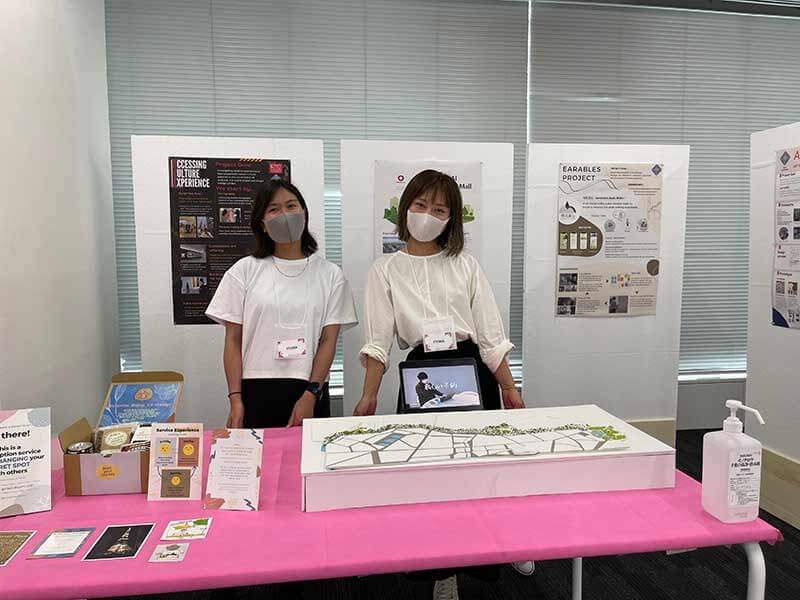
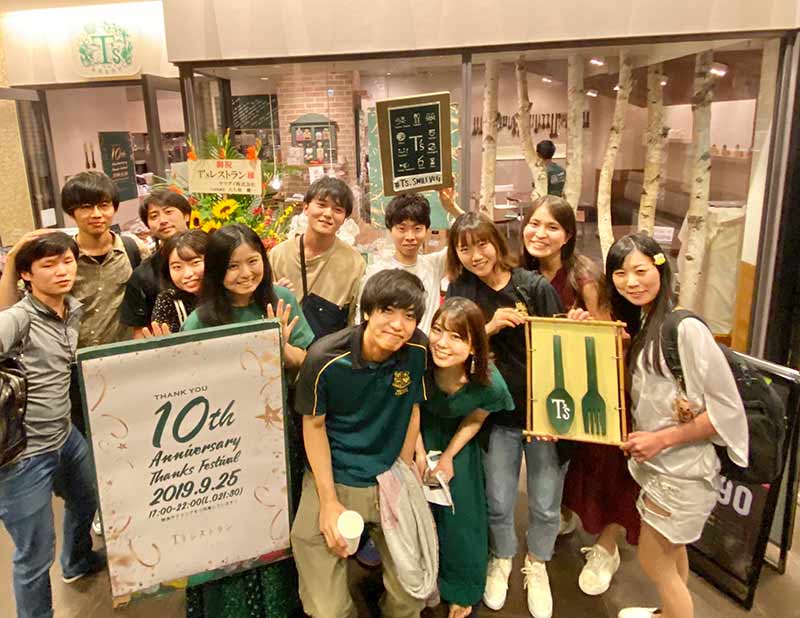
How has your life at school here been throughout the pandemic?
Taka: When thinking about a research theme I think it’s important to find people in one’s surroundings and get their impressions and perspectives. During the pandemic though, there are fewer places to talk casually and compare notes about our research, so that’s been difficult to work through. Now that we have gradually gotten used to things we have made more opportunities to talk while also devising ways of interacting with each-other in our academic community.
Maki: My plan was to: “write a thesis on X topic, conduct Y experiments, and collect survey responses within Z amount of time to coincide with product development.” However, with the extensions of the government’s declaration of a state of emergency, those plans kept getting delayed. It was definitely hard for me, since my product was not ready by the thesis submission deadline.
Sae: I joined KMD during the pandemic. While there were times when our hands were tied , now, as long as we submit an application, students can access the rooms and materials they require and use hybrid in-person/online systems to get work done. While there were times when our hands were tied, now, as long as we submit an application, students can access rooms and materials or use hybrid systems to get work done.
Maki: I work as a teaching assistant supporting guest professors during their lectures. One issue when classes were held in person, was the reluctance of students to ask questions. During the pandemic, though, after we introduced a live chat application, students began sending in plenty of questions for the online class. Oddly enough, communication has been revitalized in some ways.
Taka: When thinking about a research theme I think it’s important to find people in one’s surroundings and get their impressions and perspectives. During the pandemic though, there are fewer places to talk casually and compare notes about our research, so that’s been difficult to work through. Now that we have gradually gotten used to things we have made more opportunities to talk while also devising ways of interacting with each-other in our academic community.
Maki: My plan was to: “write a thesis on X topic, conduct Y experiments, and collect survey responses within Z amount of time to coincide with product development.” However, with the extensions of the government’s declaration of a state of emergency, those plans kept getting delayed. It was definitely hard for me, since my product was not ready by the thesis submission deadline.
Sae: I joined KMD during the pandemic. While there were times when our hands were tied , now, as long as we submit an application, students can access the rooms and materials they require and use hybrid in-person/online systems to get work done. While there were times when our hands were tied, now, as long as we submit an application, students can access rooms and materials or use hybrid systems to get work done.
Maki: I work as a teaching assistant supporting guest professors during their lectures. One issue when classes were held in person, was the reluctance of students to ask questions. During the pandemic, though, after we introduced a live chat application, students began sending in plenty of questions for the online class. Oddly enough, communication has been revitalized in some ways.
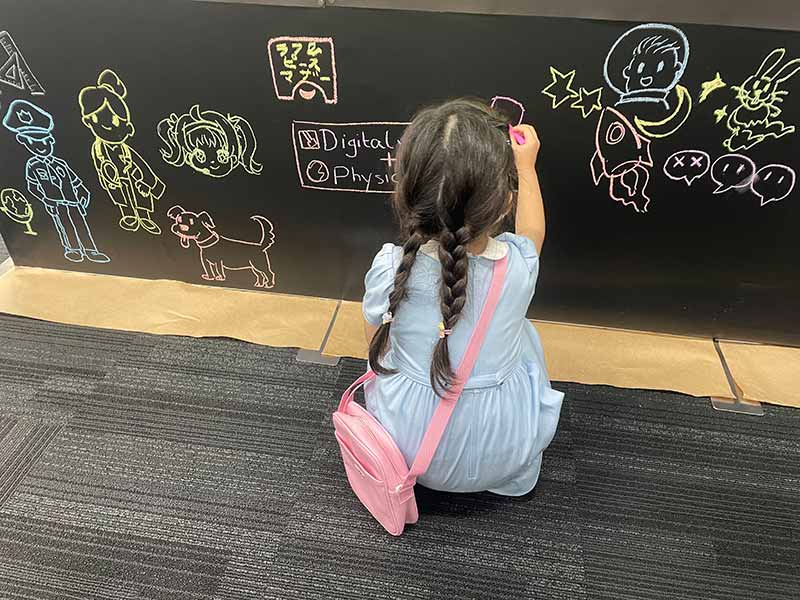
What would you say to those interested in KMD?
Hideyuki: KMD is full of people of diverse nationalities, ages, and backgrounds conducting research in a variety of fields. It’s a very supportive environment for research, so I highly recommend it to anyone considering enrolling.
Maki: It’s really easy to communicate at KMD and that there’s a culture where people support each other as they work towards their goals. I think that it’s the perfect place for people who have a clear idea of what they want to do or for those who are self-starters.
Sae: For me, I didn’t start out with a clear plan of what I wanted to do. But, after enrolling at KMD and seeing what other students were doing in their Real Projects, I was able to find a research topic that interested me. Meaning, as long as students are excited about trying something new, I think that they’ll be just fine.
Misaki: Even if you only have a vague idea of what you want to do, the people at KMD are always there to help out as you naturally figure out your path. As long as students have the drive and passion to “do something,” they are sure to discover lots of ways to enjoy themselves.
Taka: One of the most attractive features of KMD is its rich resources, including the expertise of instructors, faculty, and its wider network. Whenever you ask about anything, everyone is quick to share their insights or introduce you to someone with background knowledge. They also have the tools needed for easy and quick access to monozukuri and experiments. Whether you have already enrolled at KMD or not, I think it’s important to first find the resources around you so that you can decide what you want to do with them.
-- Thank you very much.
Hideyuki: KMD is full of people of diverse nationalities, ages, and backgrounds conducting research in a variety of fields. It’s a very supportive environment for research, so I highly recommend it to anyone considering enrolling.
Maki: It’s really easy to communicate at KMD and that there’s a culture where people support each other as they work towards their goals. I think that it’s the perfect place for people who have a clear idea of what they want to do or for those who are self-starters.
Sae: For me, I didn’t start out with a clear plan of what I wanted to do. But, after enrolling at KMD and seeing what other students were doing in their Real Projects, I was able to find a research topic that interested me. Meaning, as long as students are excited about trying something new, I think that they’ll be just fine.
Misaki: Even if you only have a vague idea of what you want to do, the people at KMD are always there to help out as you naturally figure out your path. As long as students have the drive and passion to “do something,” they are sure to discover lots of ways to enjoy themselves.
Taka: One of the most attractive features of KMD is its rich resources, including the expertise of instructors, faculty, and its wider network. Whenever you ask about anything, everyone is quick to share their insights or introduce you to someone with background knowledge. They also have the tools needed for easy and quick access to monozukuri and experiments. Whether you have already enrolled at KMD or not, I think it’s important to first find the resources around you so that you can decide what you want to do with them.
-- Thank you very much.

(This interview was held in July 2021.)
How do you spend your time at KMD?
What are your dreams for the future?
Six students speak from the heart.
What are your dreams for the future?
Six students speak from the heart.
Darlene Hannah Jane Nolasco (Philippines)
Second-year master's student
Real project: SAMCARA
Second-year master's student
Real project: SAMCARA
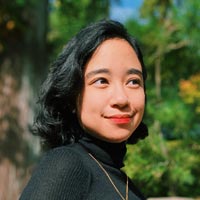
Hikari Yamano (Japan)
Second-year master’s student
Real project: Network Media
Second-year master’s student
Real project: Network Media
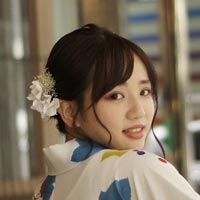
Stephanie Josee Marcotte Bourgeois (Canada)
Second-year master’s student
Real project: PLAY: Entertainment Media Design
Second-year master’s student
Real project: PLAY: Entertainment Media Design
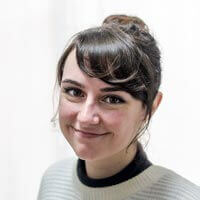
Reiya Horii (Japan)
Second-year master’s student
Real project: Embodied Media
Second-year master’s student
Real project: Embodied Media
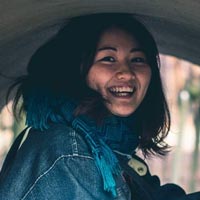
Futa Asada (Japan)
Second-year master's student
Real Project: Embodied Media
Second-year master's student
Real Project: Embodied Media
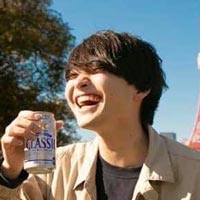
Ragnar Thomsen (Germany)
Second-year master's student
Real Project: Embodied Media
Second-year master's student
Real Project: Embodied Media
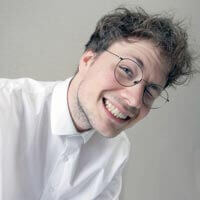
Why did you enroll at KMD?
Hikari: I studied American philosophy at university, but was looking to transition into research that would be useful both for contemporary challenges and into the future. I applied for KMD because it had a wide range of entry points, whatever one’s research field happens to have been at university.
Futa: I researched on supercomputers at a science college. As I was considering engaging with a field somewhat more closely aligned with users, my university professor told me that “Going to KMD will let you cover all the bases.”
Ragnar: I studied game design in Germany. After my undergraduate studies, I wanted to study interactive experiences from a broader perspective. Not many courses exist in Germany to study technologies from a design perspective, and my investigations led me to KMD in Japan.
Reiya: I enrolled with the idea of giving expression to the psychological aspect of us through means such as design and technology at KMD’s Embodied Media. In addition, since my research theme was intercultural communication, I felt that the environment at KMD, where half of those attending are international students, would complement my topic.
Hikari: I studied American philosophy at university, but was looking to transition into research that would be useful both for contemporary challenges and into the future. I applied for KMD because it had a wide range of entry points, whatever one’s research field happens to have been at university.
Futa: I researched on supercomputers at a science college. As I was considering engaging with a field somewhat more closely aligned with users, my university professor told me that “Going to KMD will let you cover all the bases.”
Ragnar: I studied game design in Germany. After my undergraduate studies, I wanted to study interactive experiences from a broader perspective. Not many courses exist in Germany to study technologies from a design perspective, and my investigations led me to KMD in Japan.
Reiya: I enrolled with the idea of giving expression to the psychological aspect of us through means such as design and technology at KMD’s Embodied Media. In addition, since my research theme was intercultural communication, I felt that the environment at KMD, where half of those attending are international students, would complement my topic.
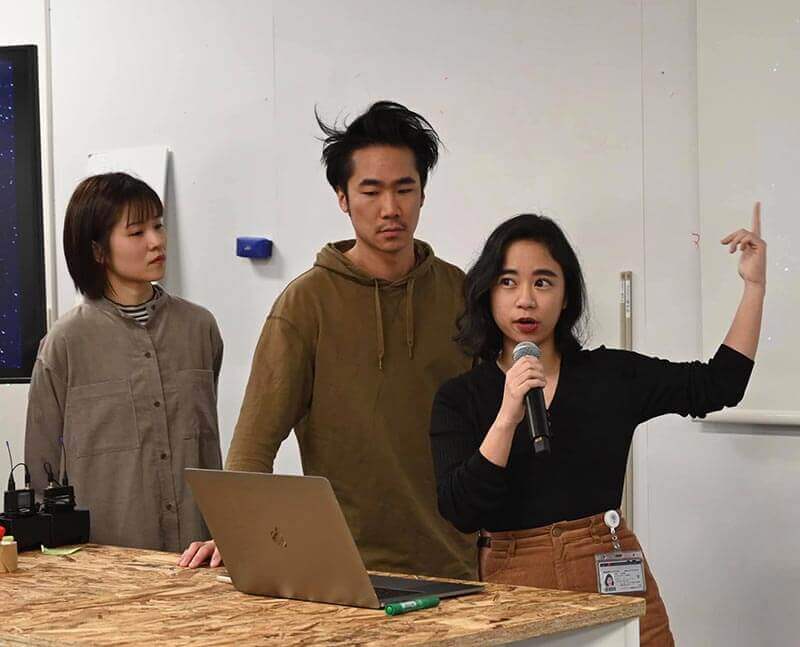
What is the typical life of a student at KMD?
Hikari: During the first year of my master’s studies I was kept busy with class assignments and Real Project activities. It was only into my second year that I was finally able to concentrate on my own research, and find time to catch up with reading. I am engaged in a regional revitalization project in my home prefecture of Fukui as an extracurricular activity.
Futa: In the run up to academic conferences we sometimes find ourselves burning the midnight oil for development. I am rather busy at this moment in time, as the company I started will soon launch a new service. I am also involved in a musical group and am doing all these while linking them together. This is a way of life in which no two days are the same.
Ragnar: I am involved in joint research with Japanese companies, and have many opportunities to get out and about, which is very fulfilling. I have lived in Japan for a year and a half, and I am inspired by new things every day in Tokyo and Yokohama. I feel a great sense of ease in the downtown area of Hiyoshi, where KMD is located, which is another part of the appeal.
Stephanie: Because of the coronavirus, I have not been able to spend time on campus this year like I did during my first semester at KMD. Besides studying off-campus, I also work from home as a freelance media artist, providing things such as graphic design and video editing for influencer clients.
Reiya: With the advent of coronavirus disease, everything from international academic conferences to classes and job hunting sessions has gone online. However, I try to look on the bright side of this situation, and am actively in contact with members of other projects as well as other working adults. There are fun things on the go, including the start of new projects arising from this.
Hikari: During the first year of my master’s studies I was kept busy with class assignments and Real Project activities. It was only into my second year that I was finally able to concentrate on my own research, and find time to catch up with reading. I am engaged in a regional revitalization project in my home prefecture of Fukui as an extracurricular activity.
Futa: In the run up to academic conferences we sometimes find ourselves burning the midnight oil for development. I am rather busy at this moment in time, as the company I started will soon launch a new service. I am also involved in a musical group and am doing all these while linking them together. This is a way of life in which no two days are the same.
Ragnar: I am involved in joint research with Japanese companies, and have many opportunities to get out and about, which is very fulfilling. I have lived in Japan for a year and a half, and I am inspired by new things every day in Tokyo and Yokohama. I feel a great sense of ease in the downtown area of Hiyoshi, where KMD is located, which is another part of the appeal.
Stephanie: Because of the coronavirus, I have not been able to spend time on campus this year like I did during my first semester at KMD. Besides studying off-campus, I also work from home as a freelance media artist, providing things such as graphic design and video editing for influencer clients.
Reiya: With the advent of coronavirus disease, everything from international academic conferences to classes and job hunting sessions has gone online. However, I try to look on the bright side of this situation, and am actively in contact with members of other projects as well as other working adults. There are fun things on the go, including the start of new projects arising from this.
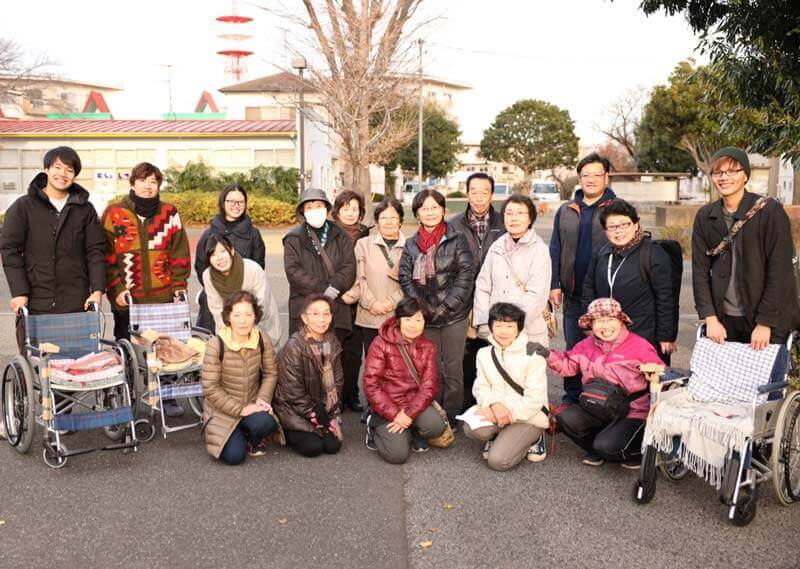
Are there any events or programs at KMD that have been particularly impressive?
Futa: At Embodied Media we always take part in a student competition called the “International collegiate Virtual Reality Contest.” Through this competition we gain an understanding of the true nature of physical media, allowing us to learn about the struggles involved in developing in teams. It is a truly valuable experience to see the delight on the faces of people as they use the things that we have labored to produce.
Hannah: SAMCARA, the project to which I belong, also participates in many contests. The biggest of these is the "Biodesign Challenge". This year, the work we submitted was featured in a book commemorating the 5th anniversary of the contest, which left a strong impression.
Hikari: I would have to say the KMD Forum. This is a great opportunity to bring in the research you are working on and have it seen by various people. It's a good experience to be evaluated by outside parties, and I'm inspired by the research of students who you don’t generally hear from. Students play a central role in preparing for the event. It is a lot of hard work, with many tasks involving the management and logistic arrangements for the event, but it nevertheless allows for more in-depth mutual engagement across project boundaries.
Futa: At Embodied Media we always take part in a student competition called the “International collegiate Virtual Reality Contest.” Through this competition we gain an understanding of the true nature of physical media, allowing us to learn about the struggles involved in developing in teams. It is a truly valuable experience to see the delight on the faces of people as they use the things that we have labored to produce.
Hannah: SAMCARA, the project to which I belong, also participates in many contests. The biggest of these is the "Biodesign Challenge". This year, the work we submitted was featured in a book commemorating the 5th anniversary of the contest, which left a strong impression.
Hikari: I would have to say the KMD Forum. This is a great opportunity to bring in the research you are working on and have it seen by various people. It's a good experience to be evaluated by outside parties, and I'm inspired by the research of students who you don’t generally hear from. Students play a central role in preparing for the event. It is a lot of hard work, with many tasks involving the management and logistic arrangements for the event, but it nevertheless allows for more in-depth mutual engagement across project boundaries.
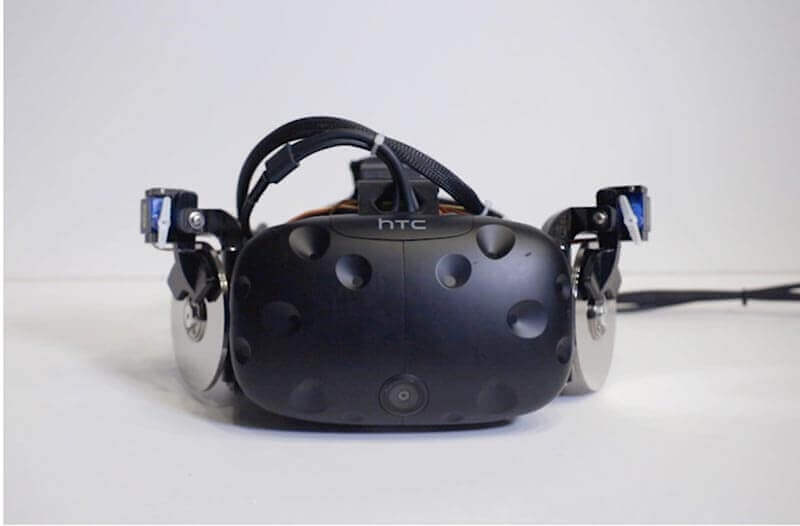
Do you have any issues communicating with the foreign students?
Stephanie: As I do not speak Japanese, I often find myself in the company of students who speak English. While I do not feel any inconvenience in terms of classes or daily life, I would like to build more networks, and thus hope to somewhat improve my spoken Japanese in the time left to me.
Ragnar: I would advise international students to study Japanese to make the most of the opportunity. KMD has systems in place for learning Japanese and there is a tutoring program with Japanese native speakers. If you are open-minded and curious, you will have the chance to learn about many different cultures. Everyone is friendly here so if you are proactive, KMD is a great place to make friends from all over the world.
Hannah: I am on good terms with some Japanese students but would like to interact with many more. There is a desire to understand one another even if your first language is not English. It is then just a question of putting this into action.
Reiya: I An environment for intercultural exchange is in place, and it is up to each person how they will use this. “Even if there may be a language barrier, you can communicate and even collaborate with those who share the same motivations during the Real Projects.”
Stephanie: As I do not speak Japanese, I often find myself in the company of students who speak English. While I do not feel any inconvenience in terms of classes or daily life, I would like to build more networks, and thus hope to somewhat improve my spoken Japanese in the time left to me.
Ragnar: I would advise international students to study Japanese to make the most of the opportunity. KMD has systems in place for learning Japanese and there is a tutoring program with Japanese native speakers. If you are open-minded and curious, you will have the chance to learn about many different cultures. Everyone is friendly here so if you are proactive, KMD is a great place to make friends from all over the world.
Hannah: I am on good terms with some Japanese students but would like to interact with many more. There is a desire to understand one another even if your first language is not English. It is then just a question of putting this into action.
Reiya: I An environment for intercultural exchange is in place, and it is up to each person how they will use this. “Even if there may be a language barrier, you can communicate and even collaborate with those who share the same motivations during the Real Projects.”
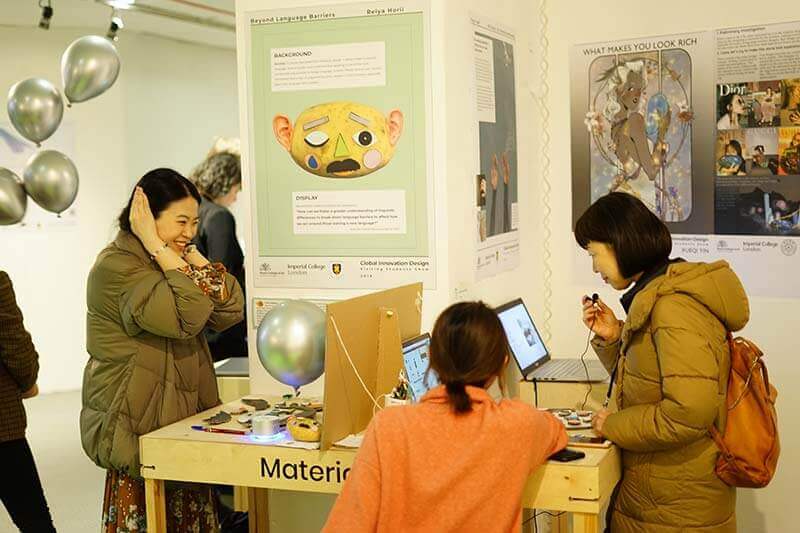
Could you give some advice to people thinking about applying to KMD?
Reiya: First, is to be flexible. As KMD allows many opportunities to collaborate with people from different backgrounds, it is important to be flexible in responding to various opinions and to extend a helping hand. Next, would be to know yourself. As this is an environment with a lot of information you won’t be able to exercise discernment if you don’t have a personal situating focus. I think you should make a special point of ownership and have the capacity to follow through on research till its conclusion.
Hannah: KMD is a place where you can take the initiative and focus on what you want to do. By waiting around to be given something you will ultimately find yourself unable to do anything.
Hikari: Talk to current students and teachers before enrolling. It may also be beneficial to create a mental image of “what you will do after you have enrolled.” There are various domains, activities, and types of student at KMD, and you can complete challenging research. However, if you don’t have a goal in mind you won’t be able to make the best of this environment.
Futa: A What strikes me as “what I should have done” would be to complete a preliminary survey on what kinds of students were engaged in what kind of research at KMD. Knowing where you should go and what you can do there in advance will go some way to ensuring a smooth journey after enrolling so you can use the two years effectively.
Reiya: First, is to be flexible. As KMD allows many opportunities to collaborate with people from different backgrounds, it is important to be flexible in responding to various opinions and to extend a helping hand. Next, would be to know yourself. As this is an environment with a lot of information you won’t be able to exercise discernment if you don’t have a personal situating focus. I think you should make a special point of ownership and have the capacity to follow through on research till its conclusion.
Hannah: KMD is a place where you can take the initiative and focus on what you want to do. By waiting around to be given something you will ultimately find yourself unable to do anything.
Hikari: Talk to current students and teachers before enrolling. It may also be beneficial to create a mental image of “what you will do after you have enrolled.” There are various domains, activities, and types of student at KMD, and you can complete challenging research. However, if you don’t have a goal in mind you won’t be able to make the best of this environment.
Futa: A What strikes me as “what I should have done” would be to complete a preliminary survey on what kinds of students were engaged in what kind of research at KMD. Knowing where you should go and what you can do there in advance will go some way to ensuring a smooth journey after enrolling so you can use the two years effectively.
What are your dreams for the future?
Ragnar: I am researching how social robots can help people at remote locations to feel close to each other, and I hope that the technology I am developing can be put to use in the future.
Hannah: I I would like to go on to a doctoral program in Sustainability Science. I also wish to play a role in the promotion of sustainability by governments and private corporations. Specifically, I hope to turn my attention to Asia, including Japan.
Stephanie: I want to continue my activities as a media artist. If possible, my dream is to start a company in Japan to help social media influencers create content. Ideally, it could help Japanese influencers make content for an international market, and help international influencers make content that interests Japanese audiences.
Hikari: After graduating, I will find a job at an IT-related company. Also, since I have been engaged in activities themed on regional localities, I hope to continue activities which might contribute to local areas and my hometown even while working.
Futa: Firstly I would like to get the business of the company I started on track. I will interact via dialogues with the user which are as close as possible and create alongside them. This will be my aim both for my company and as an individual.
Reiya: My personal theme is "the elimination of boundaries," and I think I will stick by this going forward. I hope to make it easier for people from overseas to live in Japan despite language barriers using the power of IT.
Ragnar: I am researching how social robots can help people at remote locations to feel close to each other, and I hope that the technology I am developing can be put to use in the future.
Hannah: I I would like to go on to a doctoral program in Sustainability Science. I also wish to play a role in the promotion of sustainability by governments and private corporations. Specifically, I hope to turn my attention to Asia, including Japan.
Stephanie: I want to continue my activities as a media artist. If possible, my dream is to start a company in Japan to help social media influencers create content. Ideally, it could help Japanese influencers make content for an international market, and help international influencers make content that interests Japanese audiences.
Hikari: After graduating, I will find a job at an IT-related company. Also, since I have been engaged in activities themed on regional localities, I hope to continue activities which might contribute to local areas and my hometown even while working.
Futa: Firstly I would like to get the business of the company I started on track. I will interact via dialogues with the user which are as close as possible and create alongside them. This will be my aim both for my company and as an individual.
Reiya: My personal theme is "the elimination of boundaries," and I think I will stick by this going forward. I hope to make it easier for people from overseas to live in Japan despite language barriers using the power of IT.
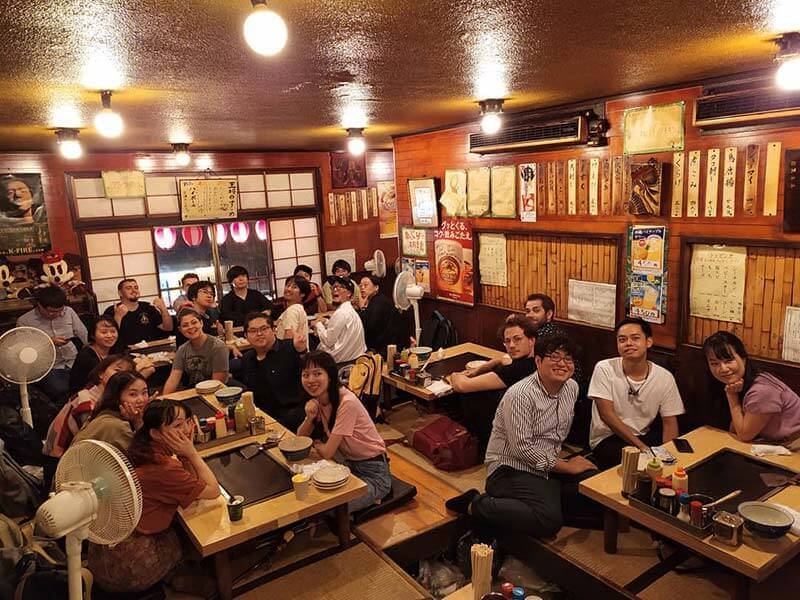
(This interview was held in November 2020)
How do you spend your time at KMD?
What are your dreams for the future?
Five students speak their mind.
What are your dreams for the future?
Five students speak their mind.
Daiya Kato (Japan)
Third-year doctoral student
Real Project: Network Media
Third-year doctoral student
Real Project: Network Media

Hong-Yu Chang (Taiwan)
Second-year master's student
Real Project: OIKOS
Second-year master's student
Real Project: OIKOS
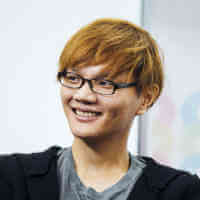
Junichi Nabeshima (Japan)
Second-year master's student
Real Project: Embodied Media
Second-year master's student
Real Project: Embodied Media

Rika Ikeda (Japan)
Second-year master's student
Real Project: Global Education
Second-year master's student
Real Project: Global Education
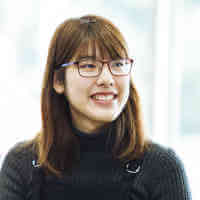
Charalampos (Harry) Krekoukiotis (Greece)
Second-year master's student
Real Project: Embodied Media
Second-year master's student
Real Project: Embodied Media
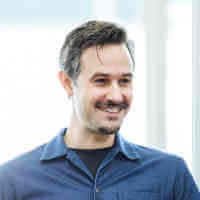
Why did you enroll at KMD?
Daiya: I chose KMD because I had wanted to research VR (virtual reality) and AR (augmented reality) at the time of admission. I have been at KMD for five years, originally doing my master’s here and now a Ph.D. Now I belong to the Network Media project, and I am currently doing research on the relationship between the media and the Internet.
Harry: Before coming to KMD, I studied architecture and film production in Greece and Germany, and worked professionally as a filmmaker. I was trying to find ways to combine my design background with media, so I decided to switch to media design. I wanted to do research in Japan and considered numerous universities, but I decided on KMD as it had a thriving international community and environment, and I felt I found what I was looking for in Embodied Media.
Junichi: While an undergrad, I studied business administration and statistics while being personally involved in activities to create new sports. Although I had a job lined up, I kept thinking that I wanted to immerse myself in making things, and it was then that an acquaintance introduced me to KMD.
Hong-Yu: I was working in Japan making toys and figurines. I was the opposite to Junichi and had always done jobs that involved making things, but I wanted to know more about the upper reaches of society and decided to go to a Japanese graduate school. I decided on KMD because the prospect of researching alongside people from different fields appealed to me.
Rika: While doing my bachelor’s, I did volunteer work supporting children who were, for one reason or another, unable to go to school or who had isolated themselves from others. I thought about what we could do to provide these children and young people with different educational experiences, and wanted to study the process of creating an enticing learning environment using the latest technology. My mentor while an undergraduate told me about KMD and as soon as I began looking into it, I knew that I wanted to study there.
Daiya: I chose KMD because I had wanted to research VR (virtual reality) and AR (augmented reality) at the time of admission. I have been at KMD for five years, originally doing my master’s here and now a Ph.D. Now I belong to the Network Media project, and I am currently doing research on the relationship between the media and the Internet.
Harry: Before coming to KMD, I studied architecture and film production in Greece and Germany, and worked professionally as a filmmaker. I was trying to find ways to combine my design background with media, so I decided to switch to media design. I wanted to do research in Japan and considered numerous universities, but I decided on KMD as it had a thriving international community and environment, and I felt I found what I was looking for in Embodied Media.
Junichi: While an undergrad, I studied business administration and statistics while being personally involved in activities to create new sports. Although I had a job lined up, I kept thinking that I wanted to immerse myself in making things, and it was then that an acquaintance introduced me to KMD.
Hong-Yu: I was working in Japan making toys and figurines. I was the opposite to Junichi and had always done jobs that involved making things, but I wanted to know more about the upper reaches of society and decided to go to a Japanese graduate school. I decided on KMD because the prospect of researching alongside people from different fields appealed to me.
Rika: While doing my bachelor’s, I did volunteer work supporting children who were, for one reason or another, unable to go to school or who had isolated themselves from others. I thought about what we could do to provide these children and young people with different educational experiences, and wanted to study the process of creating an enticing learning environment using the latest technology. My mentor while an undergraduate told me about KMD and as soon as I began looking into it, I knew that I wanted to study there.
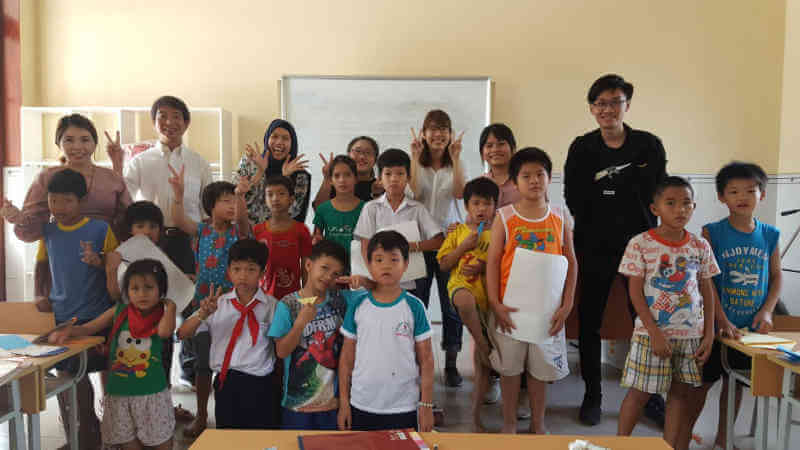
What is life usually like as a student?
Harry: I am researching kinetic interactive spaces, and I am now at the apex of the prototyping stage for my master’s thesis. I’m not just holed up in my research office though, and often go and see exhibitions for design and architecture as fieldwork for my degree. I’m also interested in traditional Japanese culture, and have joined groups for taiko (traditional Japanese drumming) and shamisen. It is hard to find enough time to sleep (laughs).
Junichi: I am doing research on making a robotic tail for humans. So, I am always at work in the Hacking Studio, the workshop of KMD. Besides that, outside the classroom, I help create new sports related to social welfare as well as playing handball for an adult recreational team.
Rika: Right now, I'm busy getting ready to put the educational program I have developed into practice at an orphanage in Vietnam as well as preparing for a conference presentation. Other than that, I’m always doing stuff with other members of my Real Project as well as having a part-time job keeping tabs on the equipment at the Media Studio of KMD.
Daiya: Because I am in the doctoral program, I receive a wage working as a researcher at KMD as well as teaching classes at other universities as an assistant or part-time lecturer. As far as I know, there are many people who have jobs or students who work like this in the doctoral program.
Harry: I am researching kinetic interactive spaces, and I am now at the apex of the prototyping stage for my master’s thesis. I’m not just holed up in my research office though, and often go and see exhibitions for design and architecture as fieldwork for my degree. I’m also interested in traditional Japanese culture, and have joined groups for taiko (traditional Japanese drumming) and shamisen. It is hard to find enough time to sleep (laughs).
Junichi: I am doing research on making a robotic tail for humans. So, I am always at work in the Hacking Studio, the workshop of KMD. Besides that, outside the classroom, I help create new sports related to social welfare as well as playing handball for an adult recreational team.
Rika: Right now, I'm busy getting ready to put the educational program I have developed into practice at an orphanage in Vietnam as well as preparing for a conference presentation. Other than that, I’m always doing stuff with other members of my Real Project as well as having a part-time job keeping tabs on the equipment at the Media Studio of KMD.
Daiya: Because I am in the doctoral program, I receive a wage working as a researcher at KMD as well as teaching classes at other universities as an assistant or part-time lecturer. As far as I know, there are many people who have jobs or students who work like this in the doctoral program.
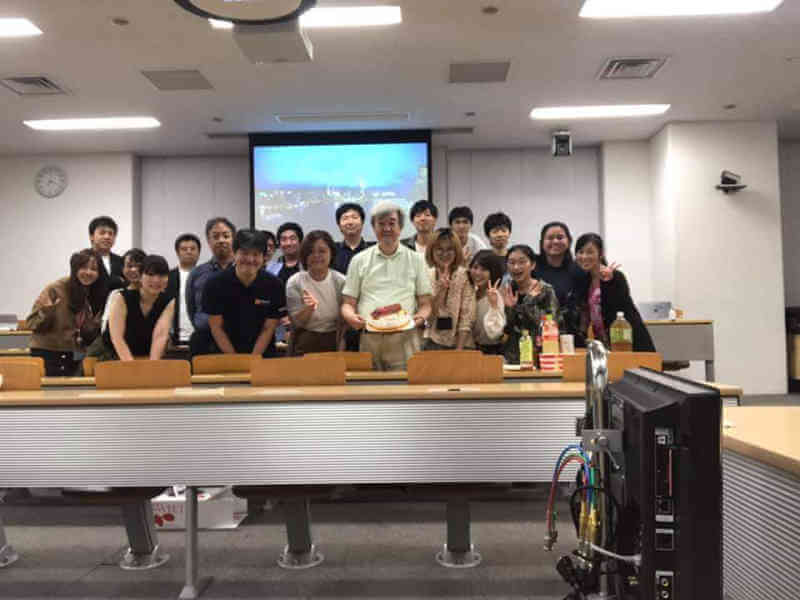
Are there any events or programs at KMD that have been particularly impressive?
Daiya: The annual KMD Forum where students present their research outcomes on the Real Projects is a fun event like nothing else. When I first participated, I was just overwhelmed at the opportunities we had to speak in English with the international students.
Rika: For me it is the “Joint Project Based Global Learning” program run by KMD and Stanford University. For two weeks in Japan and two weeks in the United States, myself and a group of students from KMD and Stanford created a new project while learning about real design thinking. It was really enjoyable.
Hong-Yu: As part of the student exchange program, “Global Innovation Design (GID),” I studied at the three locations of KMD in Yokohama, New York, and London. It was my first time to travel to Europe and the United States, and it was amazing to experience so many cultures firsthand.
Junichi: It wasn’t an event as such, but the first-year compulsory class “Innovation Pipeline” left a big impression on me. You learn about the four tracks of Design, Technology, Management, and Policy required at KMD, and at the end, you work in teams on the production of a prototype about which you also give a presentation. We had intense debates with students from completely different backgrounds, and I found it very thought-provoking.
Daiya: The annual KMD Forum where students present their research outcomes on the Real Projects is a fun event like nothing else. When I first participated, I was just overwhelmed at the opportunities we had to speak in English with the international students.
Rika: For me it is the “Joint Project Based Global Learning” program run by KMD and Stanford University. For two weeks in Japan and two weeks in the United States, myself and a group of students from KMD and Stanford created a new project while learning about real design thinking. It was really enjoyable.
Hong-Yu: As part of the student exchange program, “Global Innovation Design (GID),” I studied at the three locations of KMD in Yokohama, New York, and London. It was my first time to travel to Europe and the United States, and it was amazing to experience so many cultures firsthand.
Junichi: It wasn’t an event as such, but the first-year compulsory class “Innovation Pipeline” left a big impression on me. You learn about the four tracks of Design, Technology, Management, and Policy required at KMD, and at the end, you work in teams on the production of a prototype about which you also give a presentation. We had intense debates with students from completely different backgrounds, and I found it very thought-provoking.
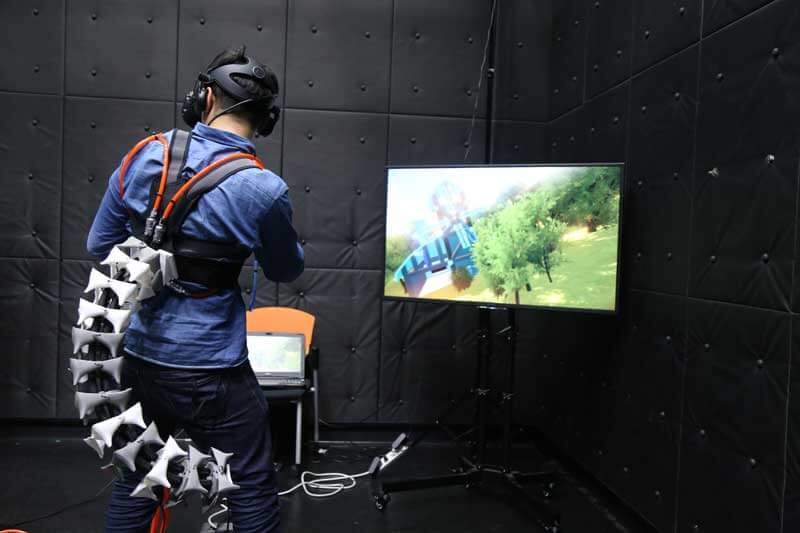
Do you have any issues communicating with the foreign students?
Rika: When I enrolled, I had no English skills whatsoever. What’s more, I belonged to a project where only English was spoken. While I was struggling to communicate though, I found that the people around me would kindly offer their help, and I think thanks to that, I was able to improve my English ability somewhat.
Daiya: You can get by with the bare minimum of English vocab and body language. You will naturally pick up words, and if there is a problem, I recommend all going together for a drink.
Harry: For presentations and research, you collaborate in multilingual teams. Japanese is difficult, but I’m studying it every day and am communicating more and more with my Japanese friends and fellow students in Japanese. With international students I communicate in English, German, and sometimes a bit of Spanish. Still, I have come to realize that one can’t forge a deep understanding with someone else without a grasp of their cultural background, and I am always trying my hardest to achieve that. Understanding the culture and learning the language go together, I think.
Rika: When I enrolled, I had no English skills whatsoever. What’s more, I belonged to a project where only English was spoken. While I was struggling to communicate though, I found that the people around me would kindly offer their help, and I think thanks to that, I was able to improve my English ability somewhat.
Daiya: You can get by with the bare minimum of English vocab and body language. You will naturally pick up words, and if there is a problem, I recommend all going together for a drink.
Harry: For presentations and research, you collaborate in multilingual teams. Japanese is difficult, but I’m studying it every day and am communicating more and more with my Japanese friends and fellow students in Japanese. With international students I communicate in English, German, and sometimes a bit of Spanish. Still, I have come to realize that one can’t forge a deep understanding with someone else without a grasp of their cultural background, and I am always trying my hardest to achieve that. Understanding the culture and learning the language go together, I think.
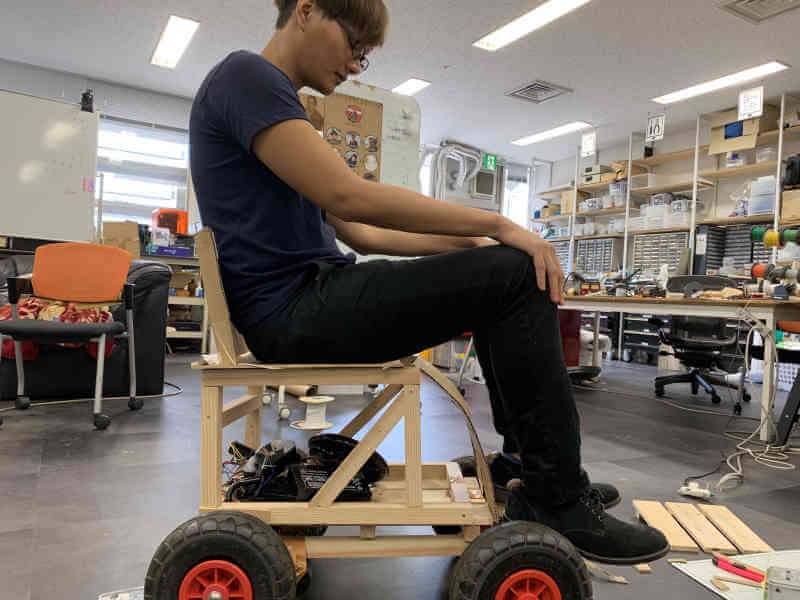
Could you give some advice to people thinking about applying to KMD?
Daiya: KMD is a school where you will immediately know whether or not you will get along with people, including faculty members. Before deciding to enroll, I think it is a good idea to carefully look into KMD, the faculty, and the content of the research.
Hong-Yu: It is important to have opportunities to hear from current students and to actually see the outcomes of the Real Projects at the KMD Forums, not just to rely on the website and information sessions.
Junichi: Because the two years go by so quickly after you enroll, you should have an image of what it is you want to do to ensure that you use your time at KMD meaningfully.
Rika: At KMD, there is meaning in using one of your strong points in collaboration with everyone else rather than trying to manage everything by yourself. People looking to enroll at KMD should focus on and polish their individual strengths.
Harry: After enrolling, you should try and get a good understanding of the environment and programs offered at KMD, and you should also make full use of all the studios and labs for your own projects. KMD gives you a lot of resources, make sure you make good use of them!
Daiya: KMD is a school where you will immediately know whether or not you will get along with people, including faculty members. Before deciding to enroll, I think it is a good idea to carefully look into KMD, the faculty, and the content of the research.
Hong-Yu: It is important to have opportunities to hear from current students and to actually see the outcomes of the Real Projects at the KMD Forums, not just to rely on the website and information sessions.
Junichi: Because the two years go by so quickly after you enroll, you should have an image of what it is you want to do to ensure that you use your time at KMD meaningfully.
Rika: At KMD, there is meaning in using one of your strong points in collaboration with everyone else rather than trying to manage everything by yourself. People looking to enroll at KMD should focus on and polish their individual strengths.
Harry: After enrolling, you should try and get a good understanding of the environment and programs offered at KMD, and you should also make full use of all the studios and labs for your own projects. KMD gives you a lot of resources, make sure you make good use of them!
What are your dreams for the future?
Rika: I entered KMD with an interest in addressing truancy and educational inequality, and this feeling hasn’t changed. I want to support such children and young people here on out, and in the future I would like to setup an educational institution where people can learn how they want to.
Harry: I would like to work on interdisciplinary creative media projects that merge design with technology, specifically those that focus on making technology invisible; in other words, technology that cannot be physically seen, but is there, improving people’s lives. I am planning to continue working in research in Japan, as I am already enjoying being part of the vibrant research community here as well as the access to resources and opportunities it includes!
Junichi: When I enrolled, I never envisaged that, of all things, I would be making a robotic tail! It is really exciting being able to turn your ideas into a something tangible. While I will enter the workforce after graduating, I would like to continue to be involved in making things for my life’s work.
Daiya: One thing I thought after coming to KMD, is that although a great variety of people come together at the school, everyone really gets along. I like Japan, but Japanese organizations are very competitive. I would like to make Japan a little more receptive to learning about each other so that everyone can get along.
Hong-Yu: I have always done work making toys in Japan, but it is really an insular atmosphere. I don’t think that’s too different in other industries. Because I have had so many opportunities for collaborations and to learn at KMD, I would like to assist with bringing people together from various industries.
Rika: I entered KMD with an interest in addressing truancy and educational inequality, and this feeling hasn’t changed. I want to support such children and young people here on out, and in the future I would like to setup an educational institution where people can learn how they want to.
Harry: I would like to work on interdisciplinary creative media projects that merge design with technology, specifically those that focus on making technology invisible; in other words, technology that cannot be physically seen, but is there, improving people’s lives. I am planning to continue working in research in Japan, as I am already enjoying being part of the vibrant research community here as well as the access to resources and opportunities it includes!
Junichi: When I enrolled, I never envisaged that, of all things, I would be making a robotic tail! It is really exciting being able to turn your ideas into a something tangible. While I will enter the workforce after graduating, I would like to continue to be involved in making things for my life’s work.
Daiya: One thing I thought after coming to KMD, is that although a great variety of people come together at the school, everyone really gets along. I like Japan, but Japanese organizations are very competitive. I would like to make Japan a little more receptive to learning about each other so that everyone can get along.
Hong-Yu: I have always done work making toys in Japan, but it is really an insular atmosphere. I don’t think that’s too different in other industries. Because I have had so many opportunities for collaborations and to learn at KMD, I would like to assist with bringing people together from various industries.
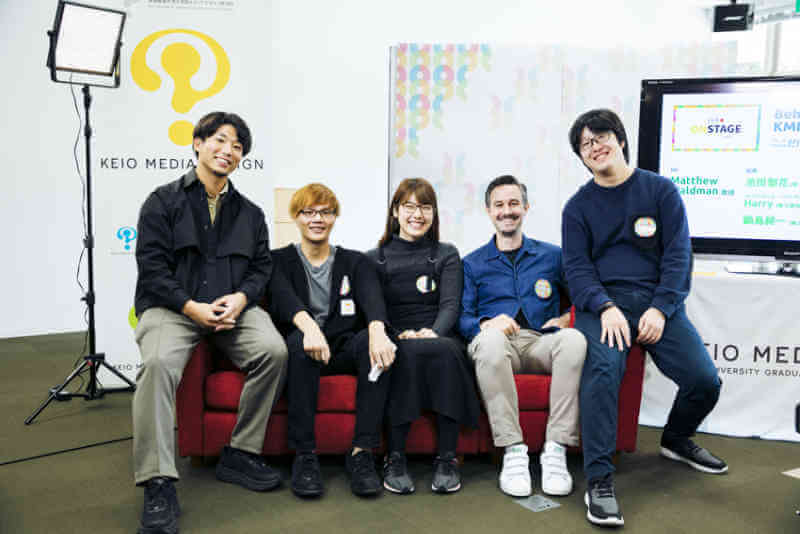
(This interview was held in November 2019)
How do you spend your days at KMD?
What are your dreams for the future?
Five students speak their mind.
What are your dreams for the future?
Five students speak their mind.
Yuri Osakabe (Japanese)
Second-year master's student
Real Project: Policy Project (Digital Kids)
Second-year master's student
Real Project: Policy Project (Digital Kids)
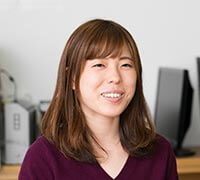
Haruki Nakamura (Japanese)
Second-year master's student
Real Project: Embodied Media
Second-year master's student
Real Project: Embodied Media
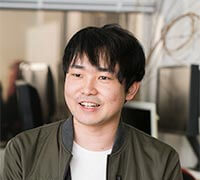
Stefanie Schaack (German)
Second-year master's student
Real Project: CREATO!
Second-year master's student
Real Project: CREATO!
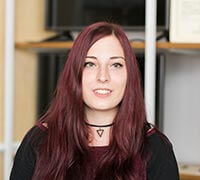
Elaine Czech (American)
Second-year master's student
Real Project: Embodied Media
Second-year master's student
Real Project: Embodied Media
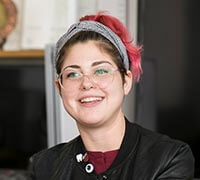
Ichika Komiya (Japanese)
First-year master's student
Real Project: Policy Project (Digital Kids)
First-year master's student
Real Project: Policy Project (Digital Kids)
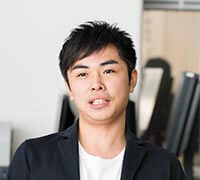
Please tell us the reason you decided to enroll at KMD.
Yuri: I felt I wanted to engage in activities to enhance the creativity of children while overseeing music at an education faculty during university. It was at this point that I encountered Professor Nanako Ishido’s book, which really impressed me. I entered KMD wanting to learn more about pioneering examples overseas and to get involved in creative workshops.
Haruki: I attended KMD for roughly one month on an internship during my fourth year of study at the National Institute of Technology, Tokyo College. I researched tactile sensation together with students at KMD and also attended an international conference. It was then that I felt that graduate school was for me and decided to enroll.
Stefanie: Since I was very young, I have really liked Japanese anime and visual-kei bands and I ended up studying the Japanese language. While on exchange, I attended Keio University for one year and had heard rumors from other international students that KMD was really interesting. The environment at the school, where people in a variety of fields including business, design, and engineering are brought together, was also very attractive. I originally had an interest in design and felt that I could complement this with my passion for the Japanese language at KMD.
Yuri: I felt I wanted to engage in activities to enhance the creativity of children while overseeing music at an education faculty during university. It was at this point that I encountered Professor Nanako Ishido’s book, which really impressed me. I entered KMD wanting to learn more about pioneering examples overseas and to get involved in creative workshops.
Haruki: I attended KMD for roughly one month on an internship during my fourth year of study at the National Institute of Technology, Tokyo College. I researched tactile sensation together with students at KMD and also attended an international conference. It was then that I felt that graduate school was for me and decided to enroll.
Stefanie: Since I was very young, I have really liked Japanese anime and visual-kei bands and I ended up studying the Japanese language. While on exchange, I attended Keio University for one year and had heard rumors from other international students that KMD was really interesting. The environment at the school, where people in a variety of fields including business, design, and engineering are brought together, was also very attractive. I originally had an interest in design and felt that I could complement this with my passion for the Japanese language at KMD.
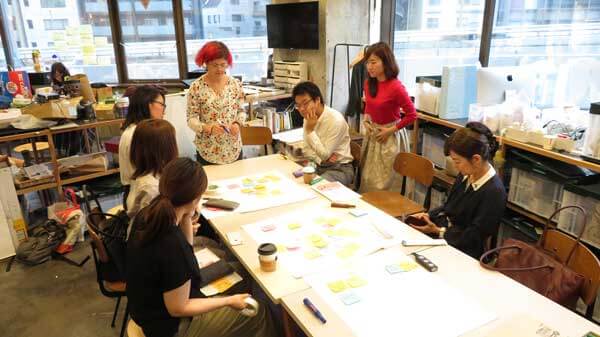
Elaine: I am researching positive aging, which looks at getting older in a positive light. I am currently developing a communication tool for elderly people. For example, I am making an “album” that allows memories to be relived or shared with someone else by recording elderly users narrating old stories to which I add tactile and audio feedback.
Ichika: I am researching STEAM education, an integrated educational approach to learning arts in addition to science, technology, engineering, and mathematics. As I graduated from a college of technology, I adopt this as a theme in my research. For example, I am advancing research to make computer programming education more interesting through matching college students with elementary school students.
Haruki: I am researching a method for sharing data that is generated from vibrations produced by the feeling of a surface in a manner similar to video and audio recordings. For example, I found the project to “record” and share the sensation of stroking a cat at a cat café together with video imagery very interesting.
Stefanie: I am developing an AR game without visuals. Combining multiple sensations such as vibrations, temperatures, and sounds in place of any visual stimuli, I am researching ways to invoke images and emotions in players and to guide them through the game.
Yuri: I am currently researching the adoption of programming education for Japanese pre-school children drawing on examples from overseas such as in the UK. I am thinking of a curriculum that could be put into practice by teachers in the classroom while undertaking actual programming classes for children as part of a joint research project with a nursery.
What is student life like at KMD?
Yuri: In between research and writing my thesis, I am doing various things including PR work for a company that promotes educational tools overseas and a part-time job at a studio on campus managing the music and photography equipment. I am very busy (laughs).
Haruki: In addition to Hiyoshi, the Embodied Media Real Project has sites in Shibuya (Living Lab Shibuya) and Odaiba (Cyber Living Lab). I often move from one site to another to attend meetings or use machinery. For example, after attending a meeting with a company in Shibuya, I might return to Hiyoshi to carry out some instillation work. Sometimes I might visit all three sites in one day.
Ichika: Besides research, my main activity at present is serving as a deputy representative for a community of blockchain developers called Keymakers. Our activities include study groups for developers and launching offices. Because it is basically a community centered on education and the creation of teaching materials, I want to tie this in with my own research on STEAM education for elementary school students.
Stefanie: In the first year, I had classes in the morning and afternoon followed by groupwork, while I interacted with students from separate projects in the KMD Project Room. After that, I spent time at KMD’s partner schools in London and New York on the GID program, which is a design education program linking three cities that are centers for design, culture, and industry, returning to Japan in May. Now, I am concentrating on my research and writing my thesis.
Yuri: In between research and writing my thesis, I am doing various things including PR work for a company that promotes educational tools overseas and a part-time job at a studio on campus managing the music and photography equipment. I am very busy (laughs).
Haruki: In addition to Hiyoshi, the Embodied Media Real Project has sites in Shibuya (Living Lab Shibuya) and Odaiba (Cyber Living Lab). I often move from one site to another to attend meetings or use machinery. For example, after attending a meeting with a company in Shibuya, I might return to Hiyoshi to carry out some instillation work. Sometimes I might visit all three sites in one day.
Ichika: Besides research, my main activity at present is serving as a deputy representative for a community of blockchain developers called Keymakers. Our activities include study groups for developers and launching offices. Because it is basically a community centered on education and the creation of teaching materials, I want to tie this in with my own research on STEAM education for elementary school students.
Stefanie: In the first year, I had classes in the morning and afternoon followed by groupwork, while I interacted with students from separate projects in the KMD Project Room. After that, I spent time at KMD’s partner schools in London and New York on the GID program, which is a design education program linking three cities that are centers for design, culture, and industry, returning to Japan in May. Now, I am concentrating on my research and writing my thesis.

Is there anything that you were surprised about after entering KMD?
Stefanie: European and American universities are tough as they set a large amount of homework. You have to work late into the night every day and then go into class and present your findings. I was surprised by the fact that KMD is completely different. The style at KMD is to learn the concepts and then go on to think about your project by yourself.
Elaine: Because the professors are well-connected in various fields, they will find you a suitable corporate partner for your research. I currently visit a nursing home every week and observe the doctors examining the residents. Securing the cooperation of a corporate partner is what has made this possible.
Stefanie: European and American universities are tough as they set a large amount of homework. You have to work late into the night every day and then go into class and present your findings. I was surprised by the fact that KMD is completely different. The style at KMD is to learn the concepts and then go on to think about your project by yourself.
Elaine: Because the professors are well-connected in various fields, they will find you a suitable corporate partner for your research. I currently visit a nursing home every week and observe the doctors examining the residents. Securing the cooperation of a corporate partner is what has made this possible.
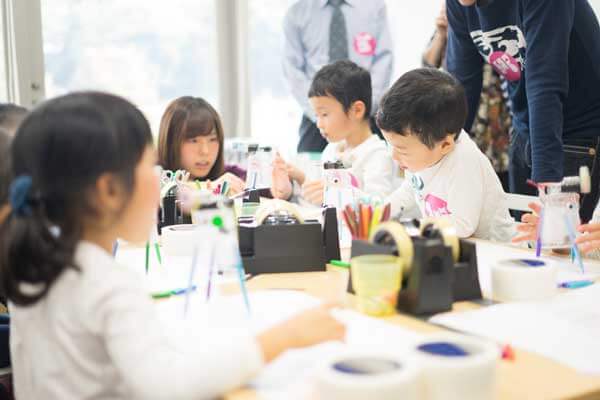
Are there any issues with language?
Elaine: Because I can speak Japanese a little bit, I am able to get by in both daily life and research. However, because it is difficult to communicate with elderly people in Japan who are the focus of my research unless you are proficient in Japanese, I receive help from my corporate partner.
Stefanie: If you cannot speak any Japanese, then perhaps daily life in Japan could prove a little bit of a struggle. If this does happen, we help each other out by going together to the ward office or sharing information such as how to pay the rent.
Yuri: We basically use Japanese and English, but you sometimes have to speak wholly in English when many international students belong to a project. It is really international at KMD as students from all over the world attend and there is always a variety of languages being spoken other than English.
Elaine: Because I can speak Japanese a little bit, I am able to get by in both daily life and research. However, because it is difficult to communicate with elderly people in Japan who are the focus of my research unless you are proficient in Japanese, I receive help from my corporate partner.
Stefanie: If you cannot speak any Japanese, then perhaps daily life in Japan could prove a little bit of a struggle. If this does happen, we help each other out by going together to the ward office or sharing information such as how to pay the rent.
Yuri: We basically use Japanese and English, but you sometimes have to speak wholly in English when many international students belong to a project. It is really international at KMD as students from all over the world attend and there is always a variety of languages being spoken other than English.
Have there been any events that left a lasting impression?
Yuri: Well of course, there is the KMD Forum. It is both a festival for the students and place to present our research outcomes. The event is managed and promoted by the students. I helped with the preparations over the last six months as a core member. This year is the tenth anniversary of KMD and the forum introduced the journey the school has taken over the last decade. There was a keynote speech by Mr. Tim Brown of IDEO and the event was really lively with over 1,000 visitors. Although the preparations for the event were tough, I received feedback about my research from visitors and it was an opportunity to collect research data from the many people who attended.
Yuri: Well of course, there is the KMD Forum. It is both a festival for the students and place to present our research outcomes. The event is managed and promoted by the students. I helped with the preparations over the last six months as a core member. This year is the tenth anniversary of KMD and the forum introduced the journey the school has taken over the last decade. There was a keynote speech by Mr. Tim Brown of IDEO and the event was really lively with over 1,000 visitors. Although the preparations for the event were tough, I received feedback about my research from visitors and it was an opportunity to collect research data from the many people who attended.
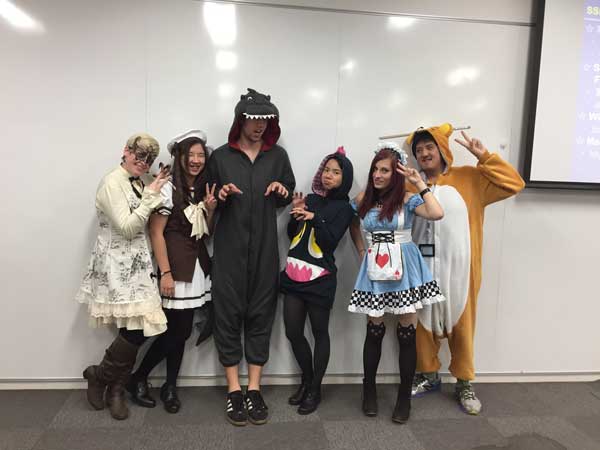
What advice do you have for people thinking about enrolling at KMD at some point?
Stefanie: It is best to decide your research topic as quickly as possible before entering KMD because the two years really do fly by.
Ichika: The first big step is listening to what is said at a KMD information session and thinking “this is for me.” After entering KMD, perhaps the most important thing is being able to express and assert yourself and say “this is what I have done up to now, let’s do something together.”
Haruki: There are many cases where students start new projects together which draw on their activities or internships at places other than KMD.
Yuri: There are a lot of opportunities and possibilities for collaboration at KMD. However, this isn’t something that is just given to you on a plate but is something that you have to go out and take hold of by yourself. Because KMD feels more like a large community than a school, people who do not take the initiative might miss out on these opportunities. Someone who enjoys being proactive will definitely flourish.
Stefanie: It is best to decide your research topic as quickly as possible before entering KMD because the two years really do fly by.
Ichika: The first big step is listening to what is said at a KMD information session and thinking “this is for me.” After entering KMD, perhaps the most important thing is being able to express and assert yourself and say “this is what I have done up to now, let’s do something together.”
Haruki: There are many cases where students start new projects together which draw on their activities or internships at places other than KMD.
Yuri: There are a lot of opportunities and possibilities for collaboration at KMD. However, this isn’t something that is just given to you on a plate but is something that you have to go out and take hold of by yourself. Because KMD feels more like a large community than a school, people who do not take the initiative might miss out on these opportunities. Someone who enjoys being proactive will definitely flourish.
What you would like to do from here on out?
Elaine: I enjoy studying, so I would like to continue to pursue my research on various things.
Haruki: I will find work as an engineer at a company in networking and communications. I would like to leverage the community fostered at KMD in order to contribute to society.
Yuri: Next year, I have decided to advance to the doctoral program at KMD to further expand on my current research and develop my expertise while continuing to work as an Education Specialist at the company where I presently work.
Stefanie: I have secured my dream job at a Japanese videogame company. I would like to contribute to worldwide gaming through planning and production in the videogame business.
Ichika: In any case, I want to gain experience in various fields from electronic controls to VR, AI, and blockchains. Drawing on these experiences, I would like to take on the role of connecting people together and to realize my vision of making society just that little bit richer.
Elaine: I enjoy studying, so I would like to continue to pursue my research on various things.
Haruki: I will find work as an engineer at a company in networking and communications. I would like to leverage the community fostered at KMD in order to contribute to society.
Yuri: Next year, I have decided to advance to the doctoral program at KMD to further expand on my current research and develop my expertise while continuing to work as an Education Specialist at the company where I presently work.
Stefanie: I have secured my dream job at a Japanese videogame company. I would like to contribute to worldwide gaming through planning and production in the videogame business.
Ichika: In any case, I want to gain experience in various fields from electronic controls to VR, AI, and blockchains. Drawing on these experiences, I would like to take on the role of connecting people together and to realize my vision of making society just that little bit richer.

(This interview was held in November 2018)
Saeko Higuchi (Japanese)
Second-year master’s student
Real Project: OIKOS
Second-year master’s student
Real Project: OIKOS
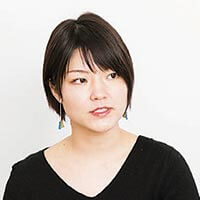
Kengo Hosaka (Japanese)
Second-year master’s student
Real Project: OIKOS
Second-year master’s student
Real Project: OIKOS
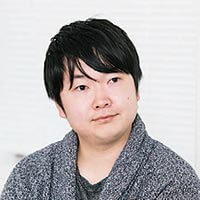
Xinyu Hu (Chinese)
Second-year master’s student
Real Project: Global Education
Second-year master’s student
Real Project: Global Education
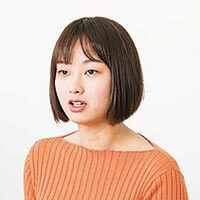
Tanner Person (American)
Second-year master’s student
Real project: Embodied Media
Second-year master’s student
Real project: Embodied Media
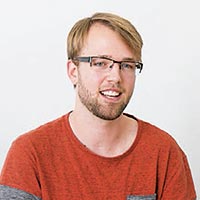
Satoshi Matsuzono (Japanese)
Second-year master’s student
Real project: Embodied Media
Second-year master’s student
Real project: Embodied Media
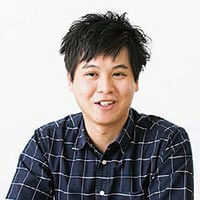
Why did you all decide to enroll at KMD?
Saeko: While at the Faculty of Law, I came across the design thinking of the d.school at Stanford University. As my interest deepened, I realized that I wanted to design useful mechanisms for society and felt that KMD would be the perfect place.
Kengo: Although I studied economics at a university in New Zealand, I was also actively involved in drama and stand-up comedy. I chose KMD as somewhere I could tackle social problems from both the angle of economics and the performing arts.
Xinyu: Since participating in an exchange program at Keio while at an American university, I have wanted to work in Japan. I entered KMD in order to acquire the necessary skills and to learn specialist terminology
Tanner: I studied cognitive science and psychology at University of California, Santa Cruz. I chose to study at KMD because I wanted to learn more about design for virtual reality, as well as to situate myself in an environment and culture I was not familiar with.
Satoshi: I was at a university specializing in engineering and had an opportunity to participate in an internship at KMD. That experience and the sense of fulfillment I had from creating things by considering how design benefits society and who it makes happy motivated me to study at KMD.
Saeko: While at the Faculty of Law, I came across the design thinking of the d.school at Stanford University. As my interest deepened, I realized that I wanted to design useful mechanisms for society and felt that KMD would be the perfect place.
Kengo: Although I studied economics at a university in New Zealand, I was also actively involved in drama and stand-up comedy. I chose KMD as somewhere I could tackle social problems from both the angle of economics and the performing arts.
Xinyu: Since participating in an exchange program at Keio while at an American university, I have wanted to work in Japan. I entered KMD in order to acquire the necessary skills and to learn specialist terminology
Tanner: I studied cognitive science and psychology at University of California, Santa Cruz. I chose to study at KMD because I wanted to learn more about design for virtual reality, as well as to situate myself in an environment and culture I was not familiar with.
Satoshi: I was at a university specializing in engineering and had an opportunity to participate in an internship at KMD. That experience and the sense of fulfillment I had from creating things by considering how design benefits society and who it makes happy motivated me to study at KMD.

Saeko: Because the required subjects run until October in the first year, every day was group work and discussions. From the Fall Semester, everyone is mainly focused on the Real Projects. I belong to Professor Naohito Okude’s “OIKOS” project. It is hard because I am at the school five days a week for meetings and study groups while also away increasingly often for consultations with companies.
Xinyu: The laboratories vary considerably. I am involved in Professor Keiko Okawa’s “Global Education” project. As we often run workshops for designing educational internships, teamwork is indispensable. I am usually at the university where I can get hold of various people to hear specialist opinions and exchange information.
Tanner: Although I also make use of dedicated facilities like the Project Room at the university, I spend most of my time at Embodied Media’s Haptic Design Lab in Shibuya (laughter). I felt KMD’s “Innovation Pipeline” classes were hectic sometimes. In one of them, I took on a new challenge to build a virtual reality experience using a traditional form of performance art called Poi, and there was also a program tackling difficult corporate issues.
Satoshi: There was also the time I was so busy just before submitting a paper to a conference that I couldn’t go home for a week. Because Associate Professor Kouta Minamizawa’s project bases its activities both at KMD and the National Museum of Emerging Science and Innovation, I go to Odaiba 2-3 days a week. Since this project seeks sociable individuals who are able to work together with business people, there are different stimuli from being at the university.
Have there been any events that left a lasting impression?
Satoshi: The “crash course” camp held immediately after admission for three days and two nights was especially memorable. I quickly learned through this experience to work together with people from different backgrounds in order to create something new. Also, everybody could hold their drink, including the teachers (laughter). It felt like a place where you have to clearly switch on and off as even if everyone drinks until the early hours, courses still start at 9 a.m.
Xinyu: The crash course also aims to shatter the stereotypes held by new entrants. The camp challenges you to overcome obstacles.
Saeko: For me, helping to run the KMD Forum was a great experience. Preparations begin from June for the forum which is held in November. All aspects of this event are built at the hands of students, including its marketing and design. Unless the students take responsibility and get to work, nothing happens. There was such a sense of achievement at being able to collaborate beyond the regular frameworks of the laboratories.
Satoshi: The “crash course” camp held immediately after admission for three days and two nights was especially memorable. I quickly learned through this experience to work together with people from different backgrounds in order to create something new. Also, everybody could hold their drink, including the teachers (laughter). It felt like a place where you have to clearly switch on and off as even if everyone drinks until the early hours, courses still start at 9 a.m.
Xinyu: The crash course also aims to shatter the stereotypes held by new entrants. The camp challenges you to overcome obstacles.
Saeko: For me, helping to run the KMD Forum was a great experience. Preparations begin from June for the forum which is held in November. All aspects of this event are built at the hands of students, including its marketing and design. Unless the students take responsibility and get to work, nothing happens. There was such a sense of achievement at being able to collaborate beyond the regular frameworks of the laboratories.
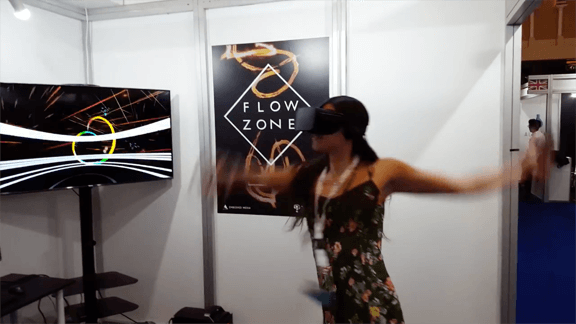
Is there smooth interaction with the international students?
Tanner: When there is a shared goal of carrying out the projects together, I don’t think you feel as much of a language barrier, but I definitely should be studying Japanese more! In any case, there are many instances during the Real Projects where things go well when mixing English and Japanese.
Xinyu: Although I am also an international student, I participated in a design program up to the completion of a prototype at Stanford University after entering KMD. A willingness to cooperate with others is needed wherever you are, not just at KMD.
Saeko: I participated in the GID program for roughly a year, studying design at the Royal College of Art in London and the Pratt Institute in New York for one semester each. The completely different way of progressing with a project compared to Japan was stimulating. Perhaps the best thing about KMD is not only that there are many international students, but that you can experience studying abroad for yourself
Kengo: I took advantage of the CEMS program and went to Canada in the first semester and a business school in Singapore in the second semester for three months each. Interacting with students from thirty-one countries has been a valuable experience as I could grasp my strengths and weaknesses objectively and discern the direction I want to take in the future.
Tanner: When there is a shared goal of carrying out the projects together, I don’t think you feel as much of a language barrier, but I definitely should be studying Japanese more! In any case, there are many instances during the Real Projects where things go well when mixing English and Japanese.
Xinyu: Although I am also an international student, I participated in a design program up to the completion of a prototype at Stanford University after entering KMD. A willingness to cooperate with others is needed wherever you are, not just at KMD.
Saeko: I participated in the GID program for roughly a year, studying design at the Royal College of Art in London and the Pratt Institute in New York for one semester each. The completely different way of progressing with a project compared to Japan was stimulating. Perhaps the best thing about KMD is not only that there are many international students, but that you can experience studying abroad for yourself
Kengo: I took advantage of the CEMS program and went to Canada in the first semester and a business school in Singapore in the second semester for three months each. Interacting with students from thirty-one countries has been a valuable experience as I could grasp my strengths and weaknesses objectively and discern the direction I want to take in the future.
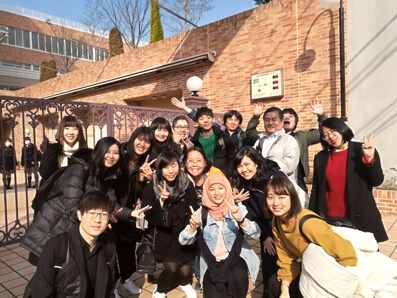
Are there any students who work?
Saeko: I think about ten percent of the students work. There is even a working mother who has started her own business, and compared to other universities I feel there are many such students.
Xinyu: Some people start businesses at KMD, others deepen their specialist research for their thesis, while others still build up their network of contacts for work.
Satoshi: I think people are able to continue their studies even when busy because you can view all of the classes via the video archive. It is very convenient as you can also access past classes. On the other hand, I feel nervous about having my thesis presentation kept on there too (laughter).
Saeko: I think about ten percent of the students work. There is even a working mother who has started her own business, and compared to other universities I feel there are many such students.
Xinyu: Some people start businesses at KMD, others deepen their specialist research for their thesis, while others still build up their network of contacts for work.
Satoshi: I think people are able to continue their studies even when busy because you can view all of the classes via the video archive. It is very convenient as you can also access past classes. On the other hand, I feel nervous about having my thesis presentation kept on there too (laughter).
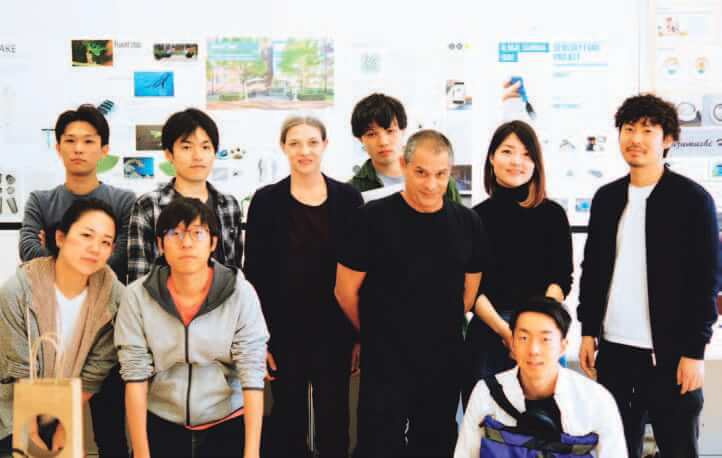
Did you feel any gap between your expectations before and the reality after entering KMD?
Tanner: Because KMD is a graduate school, I had an image of me often doing research alone. Actually though, my communication skills have improved, not only in terms of language but also communication in a business sense, such as the ability to skillfully express my ideas in presentations. Moreover, the tremendous feeling I had being able to realize something I couldn’t achieve on my own through working together with people who each have different talents was greater than I imaged. On a personal level, not only can I use software, but learning to think about hardware as well was also important.
Xinyu: I agree. Before entering KMD I thought it would be a problem not having any design skills. However, I learned it was actually okay to seek help from those around when doing the projects. The students all help each other out.
Satoshi: There are many people here who are highly attentive and everyone is positive.
Saeko: When I first entered KMD I was struck by just how different the way of thinking of some people could be. However, to the extent that what I had considered common sense didn’t apply, I also felt I grew as a person when accepting new values.
What advice do you have for people thinking about applying to KMD?Tanner: Because KMD is a graduate school, I had an image of me often doing research alone. Actually though, my communication skills have improved, not only in terms of language but also communication in a business sense, such as the ability to skillfully express my ideas in presentations. Moreover, the tremendous feeling I had being able to realize something I couldn’t achieve on my own through working together with people who each have different talents was greater than I imaged. On a personal level, not only can I use software, but learning to think about hardware as well was also important.
Xinyu: I agree. Before entering KMD I thought it would be a problem not having any design skills. However, I learned it was actually okay to seek help from those around when doing the projects. The students all help each other out.
Satoshi: There are many people here who are highly attentive and everyone is positive.
Saeko: When I first entered KMD I was struck by just how different the way of thinking of some people could be. However, to the extent that what I had considered common sense didn’t apply, I also felt I grew as a person when accepting new values.
Saeko: It is important not to be afraid of personal change. I want people to enjoy the experience of changing by not being too rigid in their opinions, coming in to contact with many ideas, and having an interest in them.
Xinyu: Hiyoshi is a fun town and kind to foreigners. I recommend living close to KMD (laughter). As there is a rich variety of scholarships and a medical clinic located in the building, it is ideal for international students. You can also work at any time at KMD, which is open 24 hours a day.
Kengo: New students should think carefully when choosing a Real Project, comparing each one with what it is they want to do. I changed to a project on design thinking after entering KMD, but this was very challenging as it is a field in which I had no previous experience. I think they should decide after learning as much as possible about the ambience of each laboratory.
Finally, what are your dreams for the future?
Saeko: I would like to have an international job that is beneficial for people and society and allows me to make use of my knowledge and skills of system design and innovation through design thinking.
Xinyu: I would like to become a teacher at KMD and carry on workshops developed through global education for the next generation. I will actually join a publishing company from April, but I have a strong desire to return to KMD and continue my research.
Kengo: It’s a bit vague, but I really want to achieve something in life. Whether at the IT company where I am due to work after graduation or in a separate field, I aim to push ahead until satisfied and give it my all.
Tanner: Because I started a company this year in Japan, I will do this job after graduation. Although I might return to the United States to work in the future, wherever I am I want to have international interactions like I do here. My dream is to realize a type of community that has never existed before.
Satoshi: I want to create something new that will be loved around the world. Combining what I have worked on at KMD with my expertise in technology, I want to try and create something that doesn’t exist yet.
Saeko: I would like to have an international job that is beneficial for people and society and allows me to make use of my knowledge and skills of system design and innovation through design thinking.
Xinyu: I would like to become a teacher at KMD and carry on workshops developed through global education for the next generation. I will actually join a publishing company from April, but I have a strong desire to return to KMD and continue my research.
Kengo: It’s a bit vague, but I really want to achieve something in life. Whether at the IT company where I am due to work after graduation or in a separate field, I aim to push ahead until satisfied and give it my all.
Tanner: Because I started a company this year in Japan, I will do this job after graduation. Although I might return to the United States to work in the future, wherever I am I want to have international interactions like I do here. My dream is to realize a type of community that has never existed before.
Satoshi: I want to create something new that will be loved around the world. Combining what I have worked on at KMD with my expertise in technology, I want to try and create something that doesn’t exist yet.
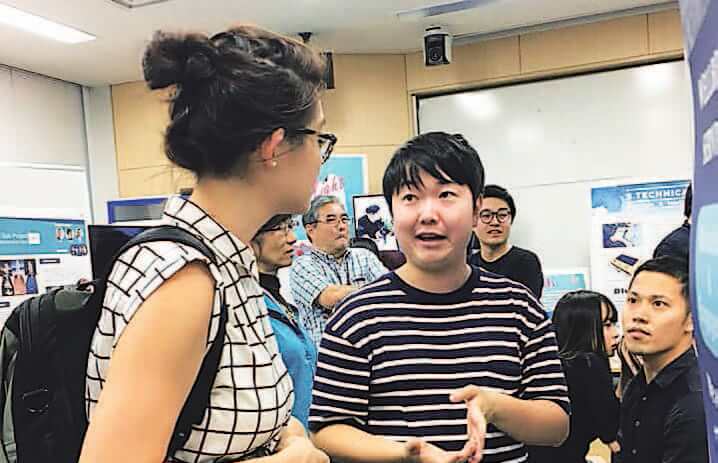
(This interview was held in November 2017)
Knives Ian (Russian Federation)
Second-year master’s student
Project:PLAY
Second-year master’s student
Project:PLAY

Mai Orikasa
Second-year master’s student
Project: Superhuman Sports
Second-year master’s student
Project: Superhuman Sports
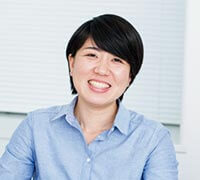
Seina Shimada
Second-year master’s student
Project:OIKOS
Second-year master’s student
Project:OIKOS
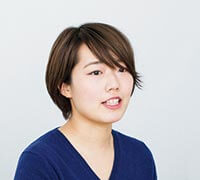
Topoklang Komkid (Thailand)
Second-year master’s student
Project:Global Education
Second-year master’s student
Project:Global Education
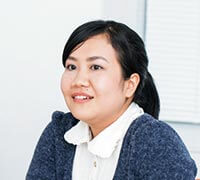
Daisuke Yukita
Second-year master’s student
Project:Global Education
Second-year master’s student
Project:Global Education
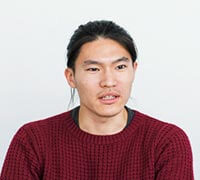
Tell us why you decided to study at KMD.
Topoklang Komkid: I was studying advertising at a university in Thailand, but I decided to come to KMD because I wanted to build up more practical and creative experience.
Daisuke Yukita: I majored in computer science at the Faculty of Science and Technology of Keio University, where I mainly researched image processing. The experience made me curious about the possibilities of design, so I entered KMD.
Mai Orikasa: I majored in product design in the past and was designing prosthetic legs for athletes, but KMD’s Superhuman Sports Project intrigued me.
Seina Shimada: After majoring in French Literature, I took a job, but I wanted to gain the thought processes and experience that would give me an advantage to survive in the working world, so I became a student once more at KMD.
Ian Knives: I was studying economics in my native country, Russia. After working as a network engineer for about a year and a half in Japan, I began to think I’d like to continue to live here. I decided to study at KMD, where I could balance both technology and business.
Topoklang Komkid: I was studying advertising at a university in Thailand, but I decided to come to KMD because I wanted to build up more practical and creative experience.
Daisuke Yukita: I majored in computer science at the Faculty of Science and Technology of Keio University, where I mainly researched image processing. The experience made me curious about the possibilities of design, so I entered KMD.
Mai Orikasa: I majored in product design in the past and was designing prosthetic legs for athletes, but KMD’s Superhuman Sports Project intrigued me.
Seina Shimada: After majoring in French Literature, I took a job, but I wanted to gain the thought processes and experience that would give me an advantage to survive in the working world, so I became a student once more at KMD.
Ian Knives: I was studying economics in my native country, Russia. After working as a network engineer for about a year and a half in Japan, I began to think I’d like to continue to live here. I decided to study at KMD, where I could balance both technology and business.
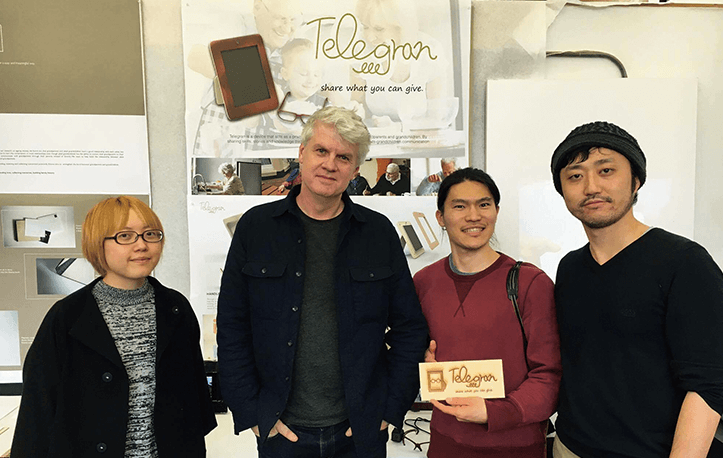
Seina: The first year and second year are vastly different. In my first year, I arrived on campus in the morning for class. I had to prepare for classes, attend group work meetings, assist the KMD Forum, and work on internship documents for submission, so I stayed on campus quite late. Now in my second year, I have more work and meetings with collaboration partners for Real Projects, so it’s more common for me to be working off campus all day.
Mai: I’m a member of the Superhuman Sports Project, which has a number of bases, so I’m seldom in the same place. I might have a meeting at Professor Ichiya Nakamura’s office or be doing something with people from corporations. For the project with Iwate Prefecture, I visited the site several times. Of course, there are days when I do work at school too.
Daisuke: KMD feels like a place that can be anything according to the situation. Not only is it a university, it feels like home or a playground where exciting things happen. It’s also an office and a studio. I’ll leave the campus, saying, “I’m going to a meeting,” and afterwards, return with an “I’m back.” I chat with classmates on campus as we share a meal (laughs).
Ian: That’s true. When I was involved in a project with just four members, all of us were always on campus and it felt like a family. I have a project with Ericsson, so I have a lot of Skype meetings also.
Any events that were especially memorable?
Ian: An especially memorable event was the IE KMD Venture Day in November 2016. A business school instructor came from Spain and gave a presentation about how to develop just one idea, from a venture perspective. I was able to learn the essential skills for a startup and I am convinced that this experience will be invaluable to me in the future.
Seina: Helping with the operations for the KMD Forum was a lot of work, but a wonderful experience. To spread awareness about KMD, I was in charge of interviewing professors and alumni for an article that I wrote and posted online. The days were extremely tough while I was doing the interviews, transcribing them, and writing the article (laughs). But it was a fantastic opportunity to meet alumni and learning more about the professors.
Mai: KMD Forum is fun because your involvement transcends the borders of different projects. I think the event is very intensive, like an all-star KMD exposition. I helped with design and was involved in the logo and visual design.
Ian: An especially memorable event was the IE KMD Venture Day in November 2016. A business school instructor came from Spain and gave a presentation about how to develop just one idea, from a venture perspective. I was able to learn the essential skills for a startup and I am convinced that this experience will be invaluable to me in the future.
Seina: Helping with the operations for the KMD Forum was a lot of work, but a wonderful experience. To spread awareness about KMD, I was in charge of interviewing professors and alumni for an article that I wrote and posted online. The days were extremely tough while I was doing the interviews, transcribing them, and writing the article (laughs). But it was a fantastic opportunity to meet alumni and learning more about the professors.
Mai: KMD Forum is fun because your involvement transcends the borders of different projects. I think the event is very intensive, like an all-star KMD exposition. I helped with design and was involved in the logo and visual design.
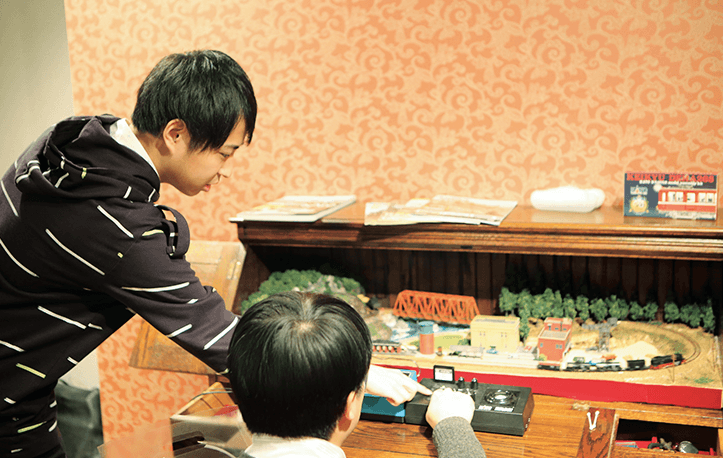
It’s said that about 50% of students are from abroad. Is interaction smooth?
Seina: There is a mood of cooperation that crosses the language barrier with international students. In addition to the international students who start school in September, many CEMS and GID program participants also come to KMD.
Daisuke: Through the GID program, I studied design at the Royal College of Art and at Imperial College in London for four months, and at the Pratt Institute in New York for four months. GID is actually one of the reasons I decided on KMD. There was an option to apply for RCA directly, but being able to attend both was very appealing. Four months after entering KMD, I was able to go abroad and intensively study the essence and meaning of design for eight months.
Komkid: I’m an international student myself, but after entering KMD, I participated in a 4-week design-thinking program that consisted of two weeks at Stanford University in the US and two weeks in Japan. I like that we can earn credits with short-term programs.
Seina: There is a mood of cooperation that crosses the language barrier with international students. In addition to the international students who start school in September, many CEMS and GID program participants also come to KMD.
Daisuke: Through the GID program, I studied design at the Royal College of Art and at Imperial College in London for four months, and at the Pratt Institute in New York for four months. GID is actually one of the reasons I decided on KMD. There was an option to apply for RCA directly, but being able to attend both was very appealing. Four months after entering KMD, I was able to go abroad and intensively study the essence and meaning of design for eight months.
Komkid: I’m an international student myself, but after entering KMD, I participated in a 4-week design-thinking program that consisted of two weeks at Stanford University in the US and two weeks in Japan. I like that we can earn credits with short-term programs.
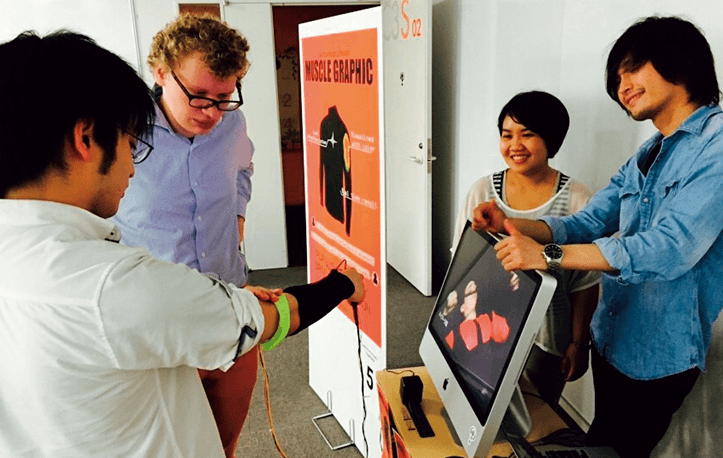
Ian: I earned as many credits as I could in the first and second trimesters of my first year and then in the third trimester, I was at school three days a week and spent the other days at a startup, building an in-house training system. So, it’s not impossible to work while attending KMD, although I wouldn’t recommend it. I couldn’t take time off, so my stress level went through the roof (laughs).
Seina: During my first year at KMD, I worked as an intern for about six months to help establish an in-house venture at an advertising agency. It was a lot of work, but it was good experience because the business was relevant to my research. I also know a student who attends KMD while working at a publishing company. So, it’s very stimulating.
Daisuke: I think being KMD students makes us uniquely qualified for some types of work. We should all go outside the school to gain experience, it’s useful for research too.
Did anything differ from your expectations before entering KMD?
Komkid: Initially, I thought I might be able to collaborate on other projects, but the reality is that I’m too busy with my own.
Mai: To be honest, I assumed that I would have lots of spare time because it’s a graduate school (laughs). So, I was astonished that the curriculum was packed with classes everyday from the morning, especially the Pipeline programs. The professors are very approachable, and I am delighted that our relationship feels like we are working partners.
Ian: While this obviously depends on the professor, I feel comfortable consulting professors even if they’re not heading my project; they are welcoming, if I am proactive. I also learn a lot from older students. An international student from Hong Kong taught me in depth about design thinking, and this was very helpful.
Seina: There is a rich diversity of career backgrounds and characters. Everyone is heading in a different direction, so group work is sometimes onerous, but this served as training to think about personnel management.
Daisuke: There should be more follow-ups for studio usage and programming. We have full access to the studios for two years, so having the option of undergoing practical training could further enhance this.
Komkid: Initially, I thought I might be able to collaborate on other projects, but the reality is that I’m too busy with my own.
Mai: To be honest, I assumed that I would have lots of spare time because it’s a graduate school (laughs). So, I was astonished that the curriculum was packed with classes everyday from the morning, especially the Pipeline programs. The professors are very approachable, and I am delighted that our relationship feels like we are working partners.
Ian: While this obviously depends on the professor, I feel comfortable consulting professors even if they’re not heading my project; they are welcoming, if I am proactive. I also learn a lot from older students. An international student from Hong Kong taught me in depth about design thinking, and this was very helpful.
Seina: There is a rich diversity of career backgrounds and characters. Everyone is heading in a different direction, so group work is sometimes onerous, but this served as training to think about personnel management.
Daisuke: There should be more follow-ups for studio usage and programming. We have full access to the studios for two years, so having the option of undergoing practical training could further enhance this.
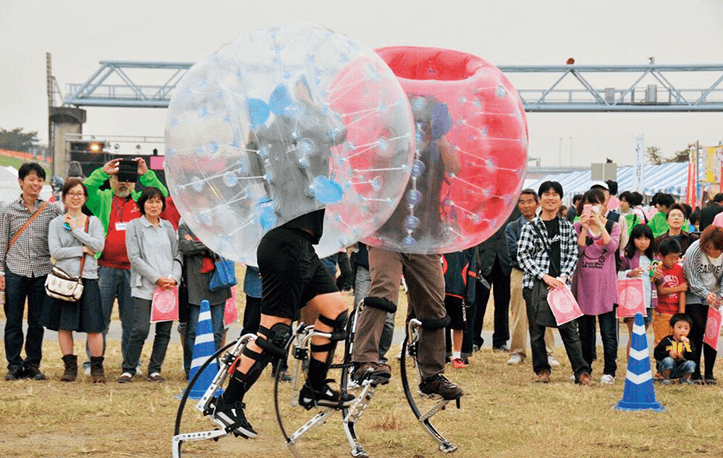
Seina: KMD is a developing graduate school, so things can become fuzzy if you lose sight of your goals. You should enter the school only after you’ve gained a clear sense of purpose.
Ian: KMD offers lots of programs and projects, so if you experience everything once, you should be able to find something. Even if you’re not interested in business, you should start by going through the experience to learn about yourself.
Komkid: I want them to be passionate and embrace all challenges. I had little time to prepare because I entered the school in the spring, so it was very tough with the communication difficulties, but I’m glad I took the leap.
Mai: I’m often told to take action, and not just move my mouth and brain. KMD truly holds meaning only if you contribute to society, so I hope they discover the joy of creating something with their own hands.
Daisuke: That’s right. Everyone should use the studio more!
Finally, please tell us about your dreams for the future.
Komkid: This is really just my ideal, but I’d like to make others and myself happy with the power of education. I hope to provide more enjoyable programs to schools and develop new education.
Ian: I have been hired by information security company and will start in the spring. I will probably become a happy “salaryman” of Japan through work (laughs).
Seina: Regardless of which company I join, or whether I start a business, I hope that my work will continuously offer new value and happiness for people.
Mai: After I graduate, I hope to harness my experience at KMD to address creation culture and community design, working at a job where I can uncover value that has been overlooked and call attention to it.
Daisuke: I would like to create an educational institution like the Hogwarts School of Witchcraft and Wizardry. My time at KMD has been the happiest period in my life, one of its reasons being the absence of paper tests. So, I thought why not create a school that drives the creativity and capabilities of children and evaluates them without using paper tests. I am planning to work at a creative agency after graduation, but I would like to bring this idea to life in the near future.
Komkid: This is really just my ideal, but I’d like to make others and myself happy with the power of education. I hope to provide more enjoyable programs to schools and develop new education.
Ian: I have been hired by information security company and will start in the spring. I will probably become a happy “salaryman” of Japan through work (laughs).
Seina: Regardless of which company I join, or whether I start a business, I hope that my work will continuously offer new value and happiness for people.
Mai: After I graduate, I hope to harness my experience at KMD to address creation culture and community design, working at a job where I can uncover value that has been overlooked and call attention to it.
Daisuke: I would like to create an educational institution like the Hogwarts School of Witchcraft and Wizardry. My time at KMD has been the happiest period in my life, one of its reasons being the absence of paper tests. So, I thought why not create a school that drives the creativity and capabilities of children and evaluates them without using paper tests. I am planning to work at a creative agency after graduation, but I would like to bring this idea to life in the near future.

※This interview was held in February 2017.
Alumni Stories
 Read Less
Read Less
>> Read More
TITLE My Journey to Be a Media Innovator
Arata Hoshino
Japan
CAREER Enrolled in April 2020; Completed master’s degree in March 2023
Arata Hoshino
Japan
CAREER Enrolled in April 2020; Completed master’s degree in March 2023
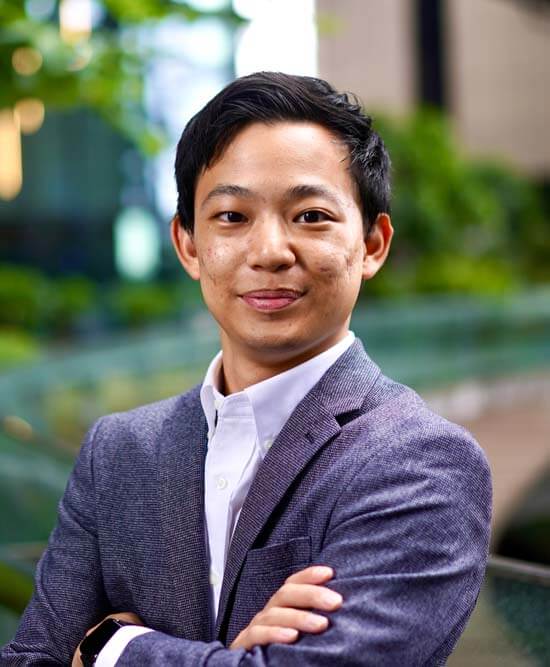
Having immersed myself in transportation and energy conversion during my undergraduate engineering studies, I aspired to transition from a purely computational role to one that could bring tangible transformations to people's lives.
At KMD, I joined ITOMA led by Professor Sato, delving into the service design theory and conducting design research at an airport, as well as workflow visualization in the cybersecurity field. Furthermore, I pursued a CEMS mas- ter’s degree, studying and working in Europe and Singapore, where I had the privilege of being influenced by cohorts who were building international careers across the globe.
After graduation, I returned to Singapore to work with a strategy consulting team specializing in international growth projects. Currently based in the UAE, I work as a policy advisor focusing on innovation in the public sector. For the future step, I aspire to integrate my passion for technology and what I learned at KMD to shape society as a “Media Innovator” in the space of future city & mobility, clean energy, logistics, and production, based in the Middle East and North America.
(This article was written in March 2024.)
At KMD, I joined ITOMA led by Professor Sato, delving into the service design theory and conducting design research at an airport, as well as workflow visualization in the cybersecurity field. Furthermore, I pursued a CEMS mas- ter’s degree, studying and working in Europe and Singapore, where I had the privilege of being influenced by cohorts who were building international careers across the globe.
After graduation, I returned to Singapore to work with a strategy consulting team specializing in international growth projects. Currently based in the UAE, I work as a policy advisor focusing on innovation in the public sector. For the future step, I aspire to integrate my passion for technology and what I learned at KMD to shape society as a “Media Innovator” in the space of future city & mobility, clean energy, logistics, and production, based in the Middle East and North America.
(This article was written in March 2024.)
TITLE KMD as the Turning Point
Takahiro Nemoto
Japan
CAREER Enrolled in April 2009; Completed master’s degree in March 2011 /
Enrolled in April 2011; Withdrawal from the doctoral program with the completion of course requirements in March 2014, awarded doctoral degree in February 2017
Takahiro Nemoto
Japan
CAREER Enrolled in April 2009; Completed master’s degree in March 2011 /
Enrolled in April 2011; Withdrawal from the doctoral program with the completion of course requirements in March 2014, awarded doctoral degree in February 2017
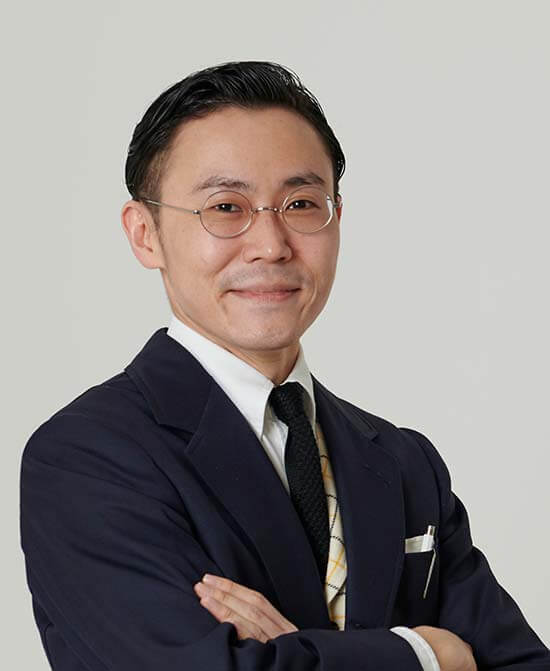
As an associate professor at the Tokyo University of Agriculture and Technology, I am engaged in the design and research of the university’s information system, as well as its educational activities. At the same time, I am also involved in standardization activities at the Internet Engineering Task Force (IETF), which I have continued since my tenure at KMD. Along with making standardization proposals regarding internationalized technologies, I also utilize my expertise in that field to contribute to promoting the standard- ization of other technologies as a member of the Area Review Team. I have also been involved in community activities, including serving three terms for six years as an officer of Japan’s chapter of the Internet Society (ISOC), an international organization that drives the development of the Internet.
At KMD, I pivoted from the field of design and international cooperation that I had studied up to that point, and focused my learning in the field of Internet technology under the guidance of Professor Sugiura and Professor Kato, among others. Although there were many difficulties in taking on the challenge of a new field, I was exposed to the culture of KMD that prizes di- versity and collaboration, and I was able to not only gain knowledge in new technologies and create international standards, but also to hone my sense as a student to be active on the global stage.
(This article was written in March 2024.)
At KMD, I pivoted from the field of design and international cooperation that I had studied up to that point, and focused my learning in the field of Internet technology under the guidance of Professor Sugiura and Professor Kato, among others. Although there were many difficulties in taking on the challenge of a new field, I was exposed to the culture of KMD that prizes di- versity and collaboration, and I was able to not only gain knowledge in new technologies and create international standards, but also to hone my sense as a student to be active on the global stage.
(This article was written in March 2024.)
TITLE KMD = A Place for Co-creation
Goki Miyakata
Japan
CAREER Enrolled in April 2009; Completed master’s degree in March 2011 /
Enrolled in April 2012; Completed doctoral degree in March 2018
Goki Miyakata
Japan
CAREER Enrolled in April 2009; Completed master’s degree in March 2011 /
Enrolled in April 2012; Completed doctoral degree in March 2018
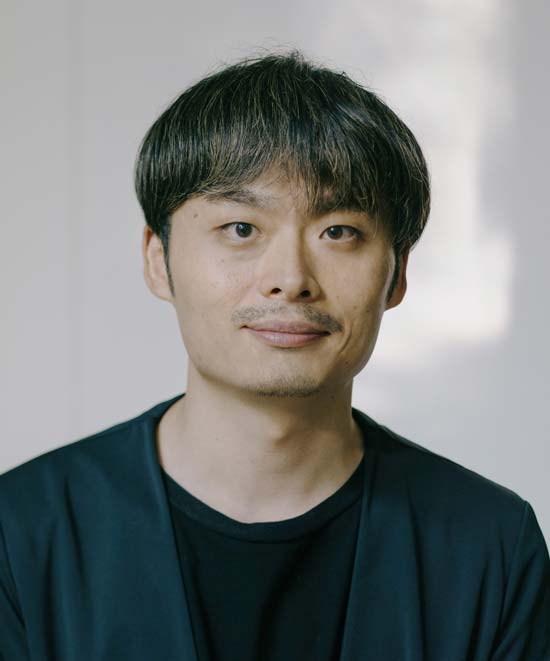
When I was an undergraduate student, I was enrolled in the Faculty of Letters. During this time, I became interested in the concept of “learning through making things” while being involved in a student group centered on film production, and thus I enrolled in KMD for my graduate program. During my master's program, I joined two projects: Global Education and Digital Kids. There, I collaborated with educators and artists to develop learning programs.
After that, during my doctoral program, I conducted research in the field of Digital Public Humanities under the guidance of Professor Okawa, research- ing design theory and methodology related to the digital archiving of Cultural Heritage materials. I am now a senior assistant professor at the newly estab- lished Keio Museum Commons, a university art museum at Keio University. There, I am currently engaged in the digital development of exhibitions, the operation of FabLab, and educational activities for students ranging from the junior high school through the undergraduate levels.
In retrospect, all of my experiences at KMD have led me to where I am now with my current work. Above all else, I still value to this day the learning and sense of awareness I gained through my co-creation activities with oth- ers. KMD is an irreplaceable place where, with the support of all the people gathered here, I have been able to accomplish things that would have been impossible on my own.
(This article was written in March 2024.)
After that, during my doctoral program, I conducted research in the field of Digital Public Humanities under the guidance of Professor Okawa, research- ing design theory and methodology related to the digital archiving of Cultural Heritage materials. I am now a senior assistant professor at the newly estab- lished Keio Museum Commons, a university art museum at Keio University. There, I am currently engaged in the digital development of exhibitions, the operation of FabLab, and educational activities for students ranging from the junior high school through the undergraduate levels.
In retrospect, all of my experiences at KMD have led me to where I am now with my current work. Above all else, I still value to this day the learning and sense of awareness I gained through my co-creation activities with oth- ers. KMD is an irreplaceable place where, with the support of all the people gathered here, I have been able to accomplish things that would have been impossible on my own.
(This article was written in March 2024.)
TITLE Becoming an Engineer with Multiple Perspectives
Yukari Konishi
Japan
CAREER Enrolled in April 2015; Completed master’s degree in March 2017
Yukari Konishi
Japan
CAREER Enrolled in April 2015; Completed master’s degree in March 2017
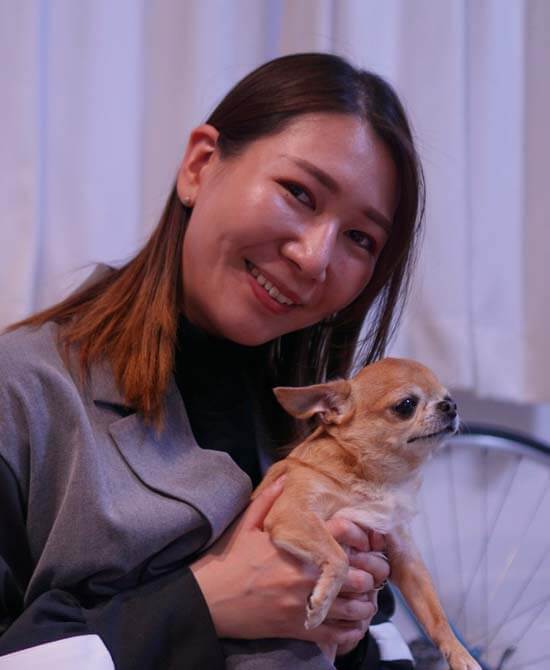
I studied information science as an undergraduate and entered KMD for my graduate studies because I wanted to conduct research on how to create meaningful experiences leveraging this technology. While at KMD, I belonged to the Embodied Media Project team, where we collaborated with Enhance and Rhizomatiks on a project titled “Synesthesia Suit,” a multi-sensory, full-body experience of the VR game Rez Infinite. How do we create an immersive ex- perience for the player? How do we make players feel pleasure or discomfort and on which part of their body through the vibrations of the suit? How do we create a system that can deliver vibrations to the whole body? These are the questions that occupied me constantly as I conducted my research day and night in the lab. During the second year of my master’s program, I partici- pated in more than 20 demonstrations and conference presentations, both in Japan and overseas, and conducted proof of concept (PoC) of the product.
I joined a game company after graduation and I am currently involved in the development of system software, SDKs (software development kits) and accessories for the video game consoles. As an engineer, I am able to utilize the skills I have developed at KMD, while maintaining a design perspective on what kind of experience to deliver to users and creators.
(This article was written in March 2024.)
I joined a game company after graduation and I am currently involved in the development of system software, SDKs (software development kits) and accessories for the video game consoles. As an engineer, I am able to utilize the skills I have developed at KMD, while maintaining a design perspective on what kind of experience to deliver to users and creators.
(This article was written in March 2024.)
TITLE A turning point in the tech industry
Seokjoo HAN
Korea
CAREER Enrolled in April 2009; Completed master’s degree in March 2011
Seokjoo HAN
Korea
CAREER Enrolled in April 2009; Completed master’s degree in March 2011
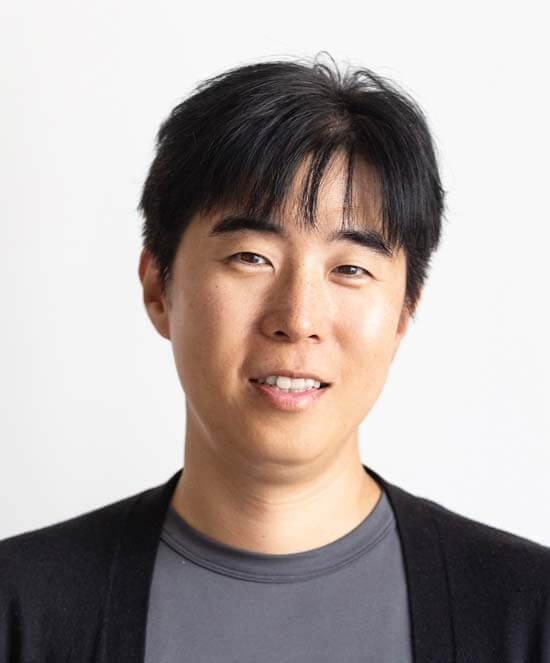
Currently, I am the representative of the European subsidiary of an Internet com- pany in Paris, France, where I am responsible for startup investments, incubator management, and mobile service operations. Before entering KMD, I graduated from a university in South Korea with a degree in sociology and worked at a big company. After graduating from KMD, I worked at a strategic consulting company and was able to enter the tech industry which I dreamed about.
I entered KMD as a second-year student in 2009 and participated in policy projects, mainly collaborative projects between private and public sectors. The experience of understanding complex contexts and communicating appro- priately to make a real impact on the world was a very valuable opportunity, especially for an international student. We are encountering similar issues every day in global projects. This is an experience that can only be gained at KMD.
(This article was written in March 2024.)
I entered KMD as a second-year student in 2009 and participated in policy projects, mainly collaborative projects between private and public sectors. The experience of understanding complex contexts and communicating appro- priately to make a real impact on the world was a very valuable opportunity, especially for an international student. We are encountering similar issues every day in global projects. This is an experience that can only be gained at KMD.
(This article was written in March 2024.)
TITLE Data and the Media
Atsushi Tamura
Japan
CAREER Enrolled in April 2019; Completed master’s degree in March 2021
Atsushi Tamura
Japan
CAREER Enrolled in April 2019; Completed master’s degree in March 2021
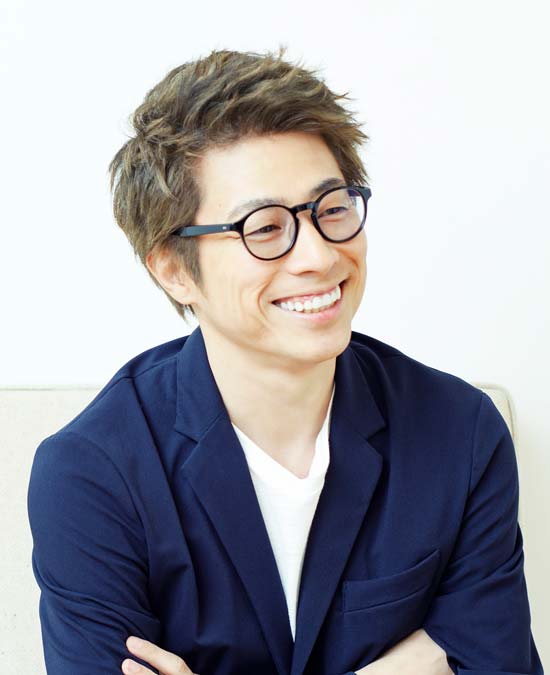
My activities as a tarento, or media personality, include appearances in TV programs, YouTube, on radio, and at events. Other activities involve giving lec- tures at various venues, serving as a tourism ambassador for Japanese castles, playing in a band called jealkb, angel investing, publishing books, starting a service wherein one can leave one’s will as a video, and running a camper store, just to name a few. I regularly do what interests me, and the number of such different activities is countless. After realizing the importance of com- munity, I have been focusing on my activities as the principal of the Atsushi Tamura’s Adult Elementary School, an online salon with over 1,000 members.
While at KMD, I learned how to read and handle data, and this has been espe- cially useful in my work in the media. Correct data can be utilized as a weapon because it gives persuasive power to our statements. On the other hand, using falsified data leads to misleading information. Where is the source of a particular set of data? Is it objective or is it being charged with someone’s subjective emotions? I have begun to keep such questions in mind, and I feel it has influenced how I share my thoughts and opinions in my day-to-day life.
(This article was written in March 2024.)
While at KMD, I learned how to read and handle data, and this has been espe- cially useful in my work in the media. Correct data can be utilized as a weapon because it gives persuasive power to our statements. On the other hand, using falsified data leads to misleading information. Where is the source of a particular set of data? Is it objective or is it being charged with someone’s subjective emotions? I have begun to keep such questions in mind, and I feel it has influenced how I share my thoughts and opinions in my day-to-day life.
(This article was written in March 2024.)
TITLE Where It All Began
Sakura Tukagoshi
Japan
CAREER Enrolled in April 2017; Completed master’s degree in March 2019
Sakura Tukagoshi
Japan
CAREER Enrolled in April 2017; Completed master’s degree in March 2019

While I majored in computer science in college, I was wondering what is the best way to broaden my horizons. That was when I came across KMD. I was sure I can encounter a new set of values at KMD, so I enrolled.
As part of the Network Media project, under the guidance of Prof. Sunahara and Prof. Kato, I got opportunities to explore interactive technologies and interact with people from diverse backgrounds. I also participated in SecCap, the course of studying the security field.
I believe KMD is a place that will give opportunities to open the door to something new. It allows you to learn not only simple knowledge but also the importance of connecting with people of various attributes, regardless of their generation or gender, and the significance of to keep taking on new challenges.
Currently, I work as a cyber security engineer. I will devote myself to protect our organization and customer from a host of new and evolving cyber se- curity threats. I would not be here today if I had not experienced in KMD.
(This article was written in March 2024.)
As part of the Network Media project, under the guidance of Prof. Sunahara and Prof. Kato, I got opportunities to explore interactive technologies and interact with people from diverse backgrounds. I also participated in SecCap, the course of studying the security field.
I believe KMD is a place that will give opportunities to open the door to something new. It allows you to learn not only simple knowledge but also the importance of connecting with people of various attributes, regardless of their generation or gender, and the significance of to keep taking on new challenges.
Currently, I work as a cyber security engineer. I will devote myself to protect our organization and customer from a host of new and evolving cyber se- curity threats. I would not be here today if I had not experienced in KMD.
(This article was written in March 2024.)
TITLE Play, Create and Keep Dreams Alive
Charlotte Lin
China
CAREER Enrolled in April 2017; Completed master’s degree in September 2019
Charlotte Lin
China
CAREER Enrolled in April 2017; Completed master’s degree in September 2019

After three years working as an art & culture program officer, I wanted to equip myself with design thinking and digital skills to be future-ready. With a background in social science, I have always been interested in the intersection of art and technology, creativity and strategy, so when I discovered GID program, I knew that it was exactly what I was looking for. During my 2.5 years at KMD, I had the most amazing experience studying in London and New York, exploring my creative journey with some of the most talented designers around the world, as well as being a member of Prof. Inakage’s PLAY Project where we were encouraged to actualize our most whimsical daydreams.
I’m currently based in Tokyo working as a future designer at a consulting firm. Facing complex problems and frustrating business professionals every day, I realize my experience at KMD has prepared me for the challenges with three important principles: learn from hands-on experiments, engage others through storytelling and playfulness, and lead with future-oriented global perspectives.
(This article was written in March 2023.)
I’m currently based in Tokyo working as a future designer at a consulting firm. Facing complex problems and frustrating business professionals every day, I realize my experience at KMD has prepared me for the challenges with three important principles: learn from hands-on experiments, engage others through storytelling and playfulness, and lead with future-oriented global perspectives.
(This article was written in March 2023.)
TITLE Celebrating diversity and collaboration
Marcos Sadao Maekawa
Brazil
CAREER Enrolled in April 2008; Completed master’s degree in March 2010 /
Enrolled in April 2010; Withdrawal from the doctoral program with the completion of course requirements in March 2013, awarded doctoral degree in February 2016
Marcos Sadao Maekawa
Brazil
CAREER Enrolled in April 2008; Completed master’s degree in March 2010 /
Enrolled in April 2010; Withdrawal from the doctoral program with the completion of course requirements in March 2013, awarded doctoral degree in February 2016
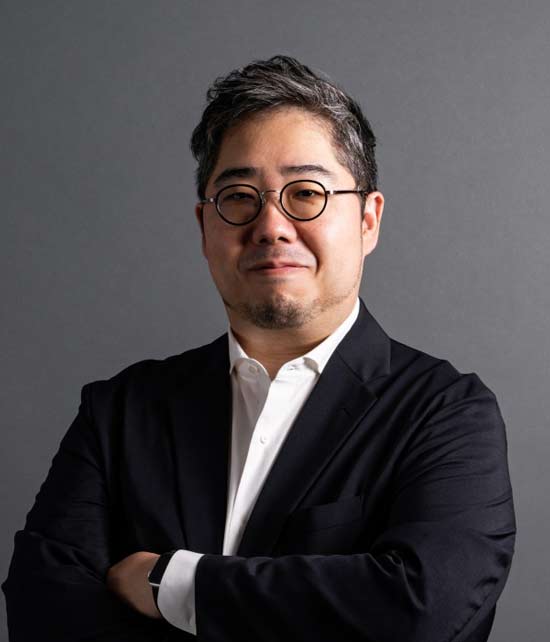
I came to Japan after majoring in Architecture and Urbanism in Brazil. When I entered KMD's first batch of students in 2008, I had a 12-year career in graphic design and a question in mind: how can design make the world a better place?
I joined the real project Global Education, and my interest was to design online programs to connect classrooms worldwide. My research focused on global citizenship education, which opened doors for collaboration with schools in Japan and abroad and organizations such as UNESCO.
After earning master's and Ph.D. degrees, I re-joined KMD as a senior assistant professor in 2016. For five years, I coordinated the global programs GID, CEMS, and KMD-Stanford.
Currently, I am a research and education development project officer at the APNIC Foundation. This non-profit, based in Australia, supports internet infrastructure-related initiatives in the Asia Pacific. My roles include bridging teams in Japan and our headquarters and providing consultancy to project activities. My KMD experience (master, doctoral, faculty) broadened my vision of design and empowered me to celebrate diversity and collaboration, which are fundamental for working in global environments.
(This article was written in March 2023.)
I joined the real project Global Education, and my interest was to design online programs to connect classrooms worldwide. My research focused on global citizenship education, which opened doors for collaboration with schools in Japan and abroad and organizations such as UNESCO.
After earning master's and Ph.D. degrees, I re-joined KMD as a senior assistant professor in 2016. For five years, I coordinated the global programs GID, CEMS, and KMD-Stanford.
Currently, I am a research and education development project officer at the APNIC Foundation. This non-profit, based in Australia, supports internet infrastructure-related initiatives in the Asia Pacific. My roles include bridging teams in Japan and our headquarters and providing consultancy to project activities. My KMD experience (master, doctoral, faculty) broadened my vision of design and empowered me to celebrate diversity and collaboration, which are fundamental for working in global environments.
(This article was written in March 2023.)
TITLE Student to Start-up
Jimi Okelana
United States of America
CAREER Enrolled in September 2014; Completed master’s degree in September 2016
Jimi Okelana
United States of America
CAREER Enrolled in September 2014; Completed master’s degree in September 2016
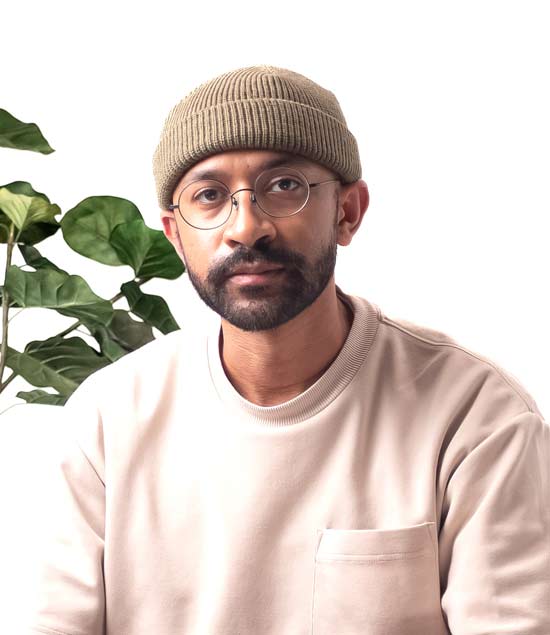
Building on my research and work experience in industrial design, my Master’s studies in Media Design at KMD accelerated my creative potential as a professional living in Japan. As a student, I was able to utilize the resources of the extensive facilities and, most importantly, the network of peers, alumni, and professors to grow as an individual.
As part of the PLAY project, under the guidance of Prof. Inakage, I was given the opportunity to explore new subjects and interactive technologies through the intersection of art, science, and design. Through the encouragement of maintaining an ever-learning spirit, I was able to connect with other life-long mentors, whose work and philosophies still guide me to this day.
After graduating, I became part of the start-up ecosystem in Japan working as an interactive designer and creative director. I went on to establish my own production studio company in Tokyo, focused on revitalizing the local creative economy. Now, as a creative professional managing teams and building projects from zero to launch, I can say without a doubt that my KMD experience continues to open new doors to incredible opportunities.
(This article was written in March 2023.)
As part of the PLAY project, under the guidance of Prof. Inakage, I was given the opportunity to explore new subjects and interactive technologies through the intersection of art, science, and design. Through the encouragement of maintaining an ever-learning spirit, I was able to connect with other life-long mentors, whose work and philosophies still guide me to this day.
After graduating, I became part of the start-up ecosystem in Japan working as an interactive designer and creative director. I went on to establish my own production studio company in Tokyo, focused on revitalizing the local creative economy. Now, as a creative professional managing teams and building projects from zero to launch, I can say without a doubt that my KMD experience continues to open new doors to incredible opportunities.
(This article was written in March 2023.)
TITLE The beginning of my international career
Dore Rodrigues, Gustavo
Brazil
CAREER Enrolled in September 2009; Completed master’s degree in September 2011
Dore Rodrigues, Gustavo
Brazil
CAREER Enrolled in September 2009; Completed master’s degree in September 2011
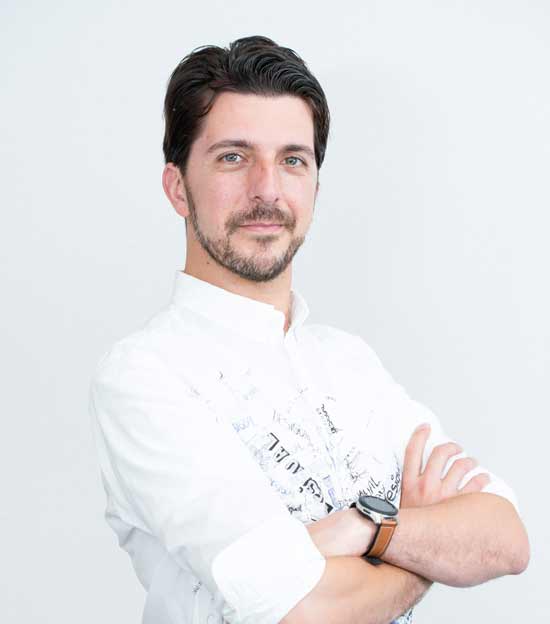
I finished my bachelors in Journalism in Brazil and Started KMD in September 2009. I was part of 2 projects: the Event Producing, under Ohta sensei, and later wrote my thesis with the Media Furniture project, under Okude sensei. Right after graduation I got an amazing job as a Product Planner at Sony and after a few years moved to a UX Design position at Recruit Technologies.
KMD was more than I could have wished for: The facilities were beautiful, the professors were from prestigious backgrounds and my classmates were open minded, smart and easy to talk to.
Today I am the founder and CEO at a startup in Japan. We make software for HR and have around 30 employees, 700 clients worldwide and 400.000 users at the moment. (and gladly, we keep growing). I attribute a lot of my success to my time at KMD, which taught me the steps that lead to great products. And also introduced me to some of my best friends, whom I still meet often and are the support for my private life in Japan.
(This article was written in March 2023.)
KMD was more than I could have wished for: The facilities were beautiful, the professors were from prestigious backgrounds and my classmates were open minded, smart and easy to talk to.
Today I am the founder and CEO at a startup in Japan. We make software for HR and have around 30 employees, 700 clients worldwide and 400.000 users at the moment. (and gladly, we keep growing). I attribute a lot of my success to my time at KMD, which taught me the steps that lead to great products. And also introduced me to some of my best friends, whom I still meet often and are the support for my private life in Japan.
(This article was written in March 2023.)
TITLE From KMD to designing creative learning
Yumiko Murai
Japan
CAREER Enrolled in April 2008; Completed master’s degree in March 2010
Yumiko Murai
Japan
CAREER Enrolled in April 2008; Completed master’s degree in March 2010
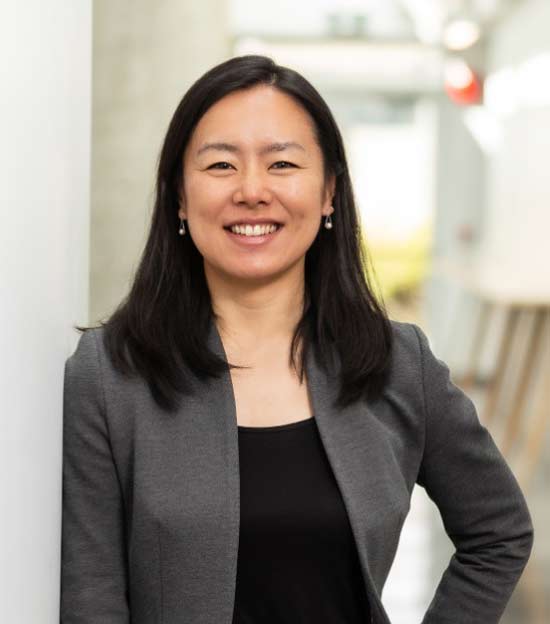
I research and teach creative learning and educational technologies at Simon Fraser University Faculty of Education in Canada, British Columbia. Before joining KMD, I studied how music events impact rural Japanese communities out of my interest in social entrepreneurship and how social missions can be achieved through business and arts.
At KMD, I was fortunate to have opportunities to create various educational experiences through technologies and arts & design, under the supervision of Dr. Okawa, Dr. Okude, and others. Life in KMD was very busy and often chaotic, but looking back, the time in KMD helped me cultivate my transdisciplinary thinking to see problems and solutions outside established rules and disciplines, and the ability to turn my ideas into reality through quick prototypes and collaboration.
(This article was written in March 2023.)
At KMD, I was fortunate to have opportunities to create various educational experiences through technologies and arts & design, under the supervision of Dr. Okawa, Dr. Okude, and others. Life in KMD was very busy and often chaotic, but looking back, the time in KMD helped me cultivate my transdisciplinary thinking to see problems and solutions outside established rules and disciplines, and the ability to turn my ideas into reality through quick prototypes and collaboration.
(This article was written in March 2023.)
TITLE KMD as a foundation for forming connections
Shino Kinoshita
Japan
CAREER Enrolled in April 2013; Completed master’s degree in March 2015
Shino Kinoshita
Japan
CAREER Enrolled in April 2013; Completed master’s degree in March 2015
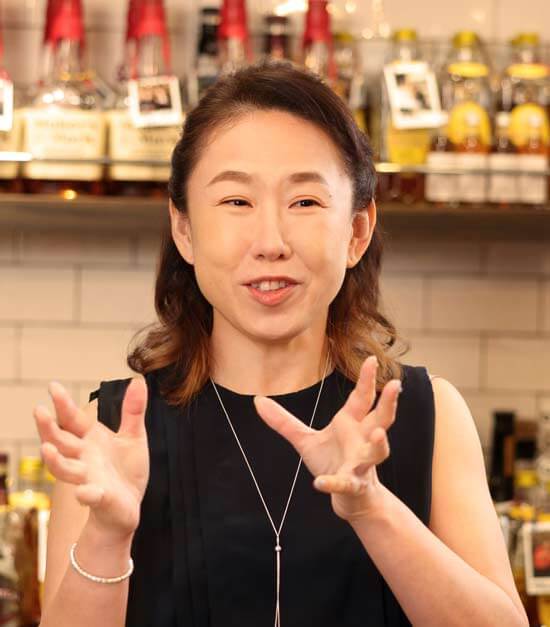
I finished my undergraduate program at the Faculty of Letters in 1991 and returned to Keio University to enroll in KMD at the age of 45. For the 10 years before my return I designed corporate training programs for large companies. While working, I sometimes felt stifled by the hierarchical structure of large Japanese organizations and the seniority-based business culture that still persists in them. These observations woke me up to the importance of empowering individuals within companies.
That was when I came across KMD. I was really drawn by the fact that the program didn’t confine itself to the academic world, but rather viewed research as a starting point to branch out and find new ways to solve problems.
After graduating, I used what I learned at KMD about how to draw out the skills, abilities, and talents of various individuals and piece them together to solve problems. This allowed me to start HIKIDASHI (lit. “draw out”), a Japanese “snack bar” where diverse individuals can connect through corporate workshops and after-hour mixers. One of the most important things I learned at KMD was the importance of forming connects across generations and genders so that people can share their unique abilities (and perspectives).
(This article was written in March 2023.)
That was when I came across KMD. I was really drawn by the fact that the program didn’t confine itself to the academic world, but rather viewed research as a starting point to branch out and find new ways to solve problems.
After graduating, I used what I learned at KMD about how to draw out the skills, abilities, and talents of various individuals and piece them together to solve problems. This allowed me to start HIKIDASHI (lit. “draw out”), a Japanese “snack bar” where diverse individuals can connect through corporate workshops and after-hour mixers. One of the most important things I learned at KMD was the importance of forming connects across generations and genders so that people can share their unique abilities (and perspectives).
(This article was written in March 2023.)
TITLE My KMD journey
Alexandra Bounxouei
Laos
CAREER Enrolled in September 2008; Completed master’s degree in September 2010 /
Enrolled in September 2010; Withdrawal from the doctoral program with the completion of course requirements in September 2013
Alexandra Bounxouei
Laos
CAREER Enrolled in September 2008; Completed master’s degree in September 2010 /
Enrolled in September 2010; Withdrawal from the doctoral program with the completion of course requirements in September 2013
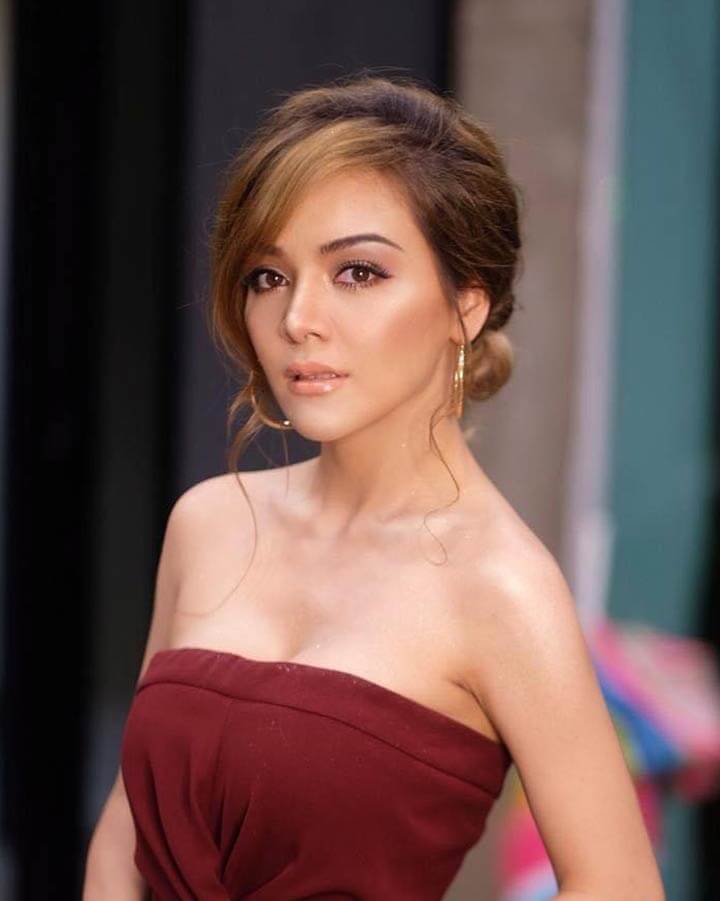
My Name is Alexandra Bounxouei from Lao P.D.R. I am a singer, actress, media influencer and business owner. I have a media consulting company, I mostly help the government and organizations with development projects such as branding tourism and agricultural, forestry projects.
Let me tell you a little bit about my KMD experience. I came across Keio Media Design Faculty online while I was touring in the USA and in my free time searching for universities, and was in between studying in the USA and Japan, to be more precise Keio Media Design.
I loved the concept of having 4 different areas that I can work on which were Management, Design, Technology, and Policy. The way KMD worked was all about innovation, about the latest in trend cultures and technologies. I remember my professor Inakage Sensei, he would not accept normal ideas. The essays and work projects that were average did not pass. Basically, the impossible, the better. I am very lucky to experience this way of thinking, as I incorporate that into many of my innovative projects for my company now, and the clients love it all. It is all about crazy ideas, and steps on how to accomplish them.
(This article was written in March 2022.)
Let me tell you a little bit about my KMD experience. I came across Keio Media Design Faculty online while I was touring in the USA and in my free time searching for universities, and was in between studying in the USA and Japan, to be more precise Keio Media Design.
I loved the concept of having 4 different areas that I can work on which were Management, Design, Technology, and Policy. The way KMD worked was all about innovation, about the latest in trend cultures and technologies. I remember my professor Inakage Sensei, he would not accept normal ideas. The essays and work projects that were average did not pass. Basically, the impossible, the better. I am very lucky to experience this way of thinking, as I incorporate that into many of my innovative projects for my company now, and the clients love it all. It is all about crazy ideas, and steps on how to accomplish them.
(This article was written in March 2022.)
TITLE Age is no obstacle to resuming one’s studies
Joon Young Hur
Korea
CAREER Enrolled in April 2013; Withdrawal from the doctoral program with the completion of course requirements in March 2016, awarded doctral degree in February 2019
Joon Young Hur
Korea
CAREER Enrolled in April 2013; Withdrawal from the doctoral program with the completion of course requirements in March 2016, awarded doctral degree in February 2019

I worked as an art director at an advertising agency for SAMSUNG in South Korea for 13 years and during that time I also had the opportunity to train at an art advertising agency (HAKUHODO Inc.) in Japan.That experience convinced me that I needed to complete a thorough study of the evolution of Japanese and Korean advertising media.
KMD’s curriculum combines modern technology with design theory, and opened me up to an entirely new world of thought. I also learned how to actively pursue my research aspirations and make them into reality.
I completed my PhD in 2019 and am currently working as an Associate Professor in the Department of Visual Design at a Korean university. I instruct students on “Media Design in Advertising,” but it is really a continuation of the research I conducted during my time at KMD. I often tell my students about my experience at KMD, encouraging them that it is never too late to take on new challenges.
(This article was written in March 2022.)
KMD’s curriculum combines modern technology with design theory, and opened me up to an entirely new world of thought. I also learned how to actively pursue my research aspirations and make them into reality.
I completed my PhD in 2019 and am currently working as an Associate Professor in the Department of Visual Design at a Korean university. I instruct students on “Media Design in Advertising,” but it is really a continuation of the research I conducted during my time at KMD. I often tell my students about my experience at KMD, encouraging them that it is never too late to take on new challenges.
(This article was written in March 2022.)
TITLE The human side
Nahuel Salcedo
Argentina
CAREER Enrolled in September 2012; Completed master’s degree in September 2014
Nahuel Salcedo
Argentina
CAREER Enrolled in September 2012; Completed master’s degree in September 2014
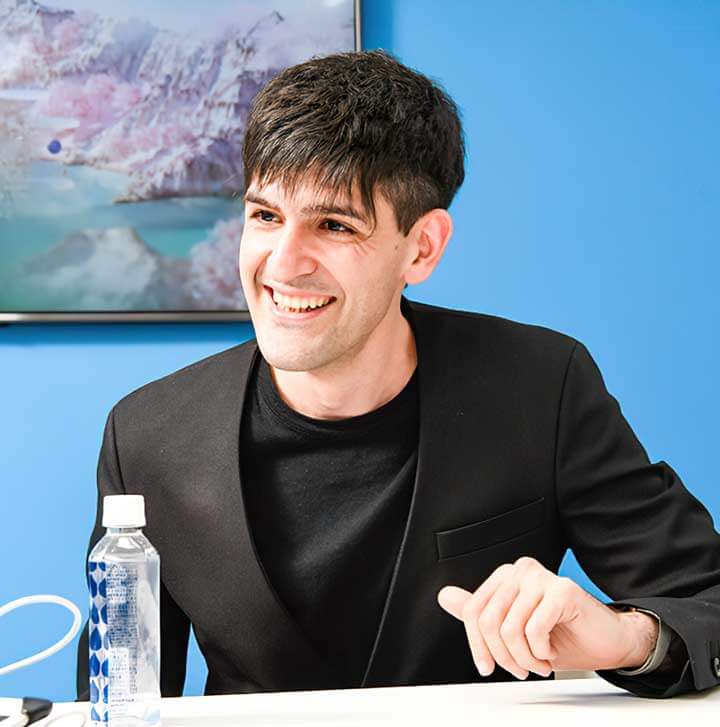
I was part of Prof. Sugiura’s lab during my Master's studies in 2012 and 2014. I remember my time at KMD as exciting and mind-opening, but above all, as a big learning experience. Even more than the curriculum, I appreciate having access to each and every one of the mentors at KMD who kindly share their own unique and extremely rich experiences.
I was very lucky to be part of Sugiura’s lab as well, who from the get-go could see and understand my own ambitions, capabilities, and also fears, placing me in the right place at the right time. This understanding and human connection made my experience at KMD one of the most rewarding of my life.
Currently, I am the Founder and Creative Director of the Tokyo Art-Direction Studio Onesal, where I lead an international team of artists, technical experts, and project managers. At Onesal, we make films and provide art direction for Amazon, Apple, Sony, Uniqlo, Deloitte, and other forward-thinking brands. Onesal’s core value lays in being able to visualize the future through visual innovation. And doing so in a beautiful way.
(This article was written in March 2022.)
I was very lucky to be part of Sugiura’s lab as well, who from the get-go could see and understand my own ambitions, capabilities, and also fears, placing me in the right place at the right time. This understanding and human connection made my experience at KMD one of the most rewarding of my life.
Currently, I am the Founder and Creative Director of the Tokyo Art-Direction Studio Onesal, where I lead an international team of artists, technical experts, and project managers. At Onesal, we make films and provide art direction for Amazon, Apple, Sony, Uniqlo, Deloitte, and other forward-thinking brands. Onesal’s core value lays in being able to visualize the future through visual innovation. And doing so in a beautiful way.
(This article was written in March 2022.)
TITLE The greatest gift is not being afraid to question
Benjamin Tag
Germany
CAREER Enrolled in April 2012; Completed master’s degree in March 2014 /
Enrolled in April 2014; Completed doctoral degree in March 2019
Benjamin Tag
Germany
CAREER Enrolled in April 2012; Completed master’s degree in March 2014 /
Enrolled in April 2014; Completed doctoral degree in March 2019
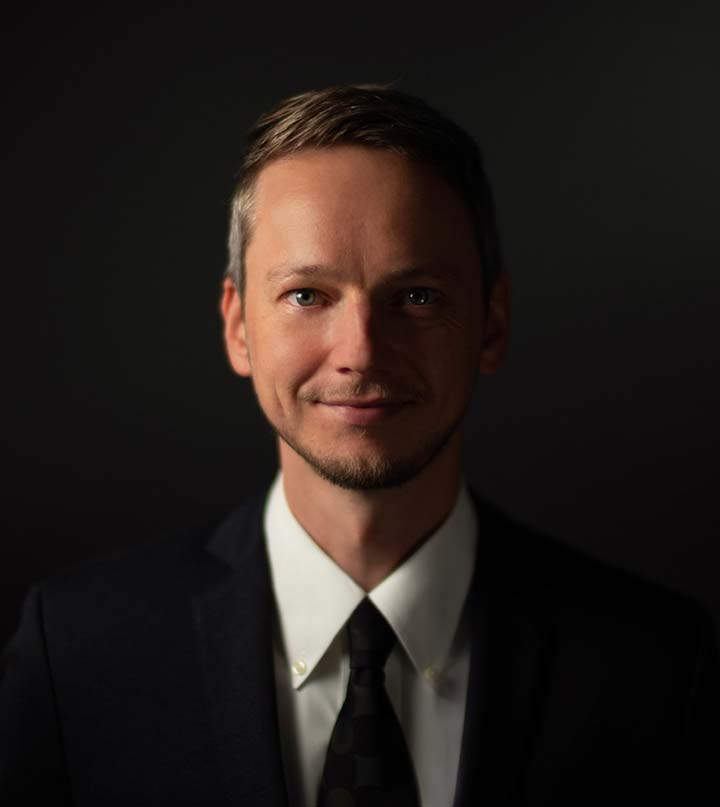
After some time in industry, and then at universities, I decided to join a master’s program that focusses on real world applications and collaboration. I had long been interested in politics, emerging technologies, and media, and finally wanted to take the leap to work with decision-makers on progressing our society. My love for punk-rock and politics brought me to contact Prof. Nakamura, who supported my application to KMD. KMD truly taught me the importance of self-directed learning, working, and networking. It is an incredibly well-connected, international school, which had significant impact on my career. I can only recommend every student at KMD to take advantage of that! Through KMD’s networks, I met people with whom I am still working today, some hired me after my Ph.D., and others have introduced me to exciting new research fields.
I am currently working as a Research Fellow in Human-Computer Interaction at the University of Melbourne in Australia, which was only possible through contacts I made at KMD. Interestingly, through the KMD network I also became a startup founder and gained invaluable real-world experiences, e.g., from working with companies or the City of Yokohama, while developing practical skill such as in cinematography.
(This article was written in March 2022.)
I am currently working as a Research Fellow in Human-Computer Interaction at the University of Melbourne in Australia, which was only possible through contacts I made at KMD. Interestingly, through the KMD network I also became a startup founder and gained invaluable real-world experiences, e.g., from working with companies or the City of Yokohama, while developing practical skill such as in cinematography.
(This article was written in March 2022.)
TITLE Challenge everything
KOMKID TOPOKLANG
Thailand
CAREER Enrolled in April 2015; Completed master’s degree in March 2017 /
Enrolled in April 2017; Completed doctoral degree in March 2020
KOMKID TOPOKLANG
Thailand
CAREER Enrolled in April 2015; Completed master’s degree in March 2017 /
Enrolled in April 2017; Completed doctoral degree in March 2020
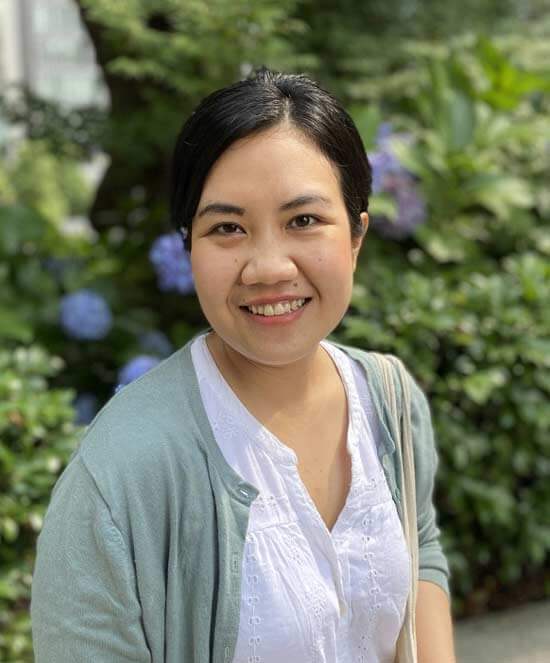
I majored in advertising in Thailand when I was an undergraduate. After graduating, I worked for an advertising agency and began to have a passion for creating a better world with the power of design. In order to make it come true, I decided to continue my study at KMD.
At KMD, I participated in the Global Education project and also had the opportunity to participate in a collaboration program between KMD and Stanford University. I learned and challenged a lot through a project that combines design, technology and education, and gained valuable experience.
After finishing my PhD in 2020, I am currently working at the LINE Advertising Global Business Planning team of LINE Corporation in Japan. I am in charge of product planning and designing educational programs for sales. I applied the experience gained at KMD in the business world on how to create a program to increase engagement of online workshops in the pandemic era. Also, when planning a product, the project management skills I learned at KMD are also very useful for my work. The challenges during life in KMD becomes my power and I would like to continue to challenge new things.
(This article was written in March 2022.)
At KMD, I participated in the Global Education project and also had the opportunity to participate in a collaboration program between KMD and Stanford University. I learned and challenged a lot through a project that combines design, technology and education, and gained valuable experience.
After finishing my PhD in 2020, I am currently working at the LINE Advertising Global Business Planning team of LINE Corporation in Japan. I am in charge of product planning and designing educational programs for sales. I applied the experience gained at KMD in the business world on how to create a program to increase engagement of online workshops in the pandemic era. Also, when planning a product, the project management skills I learned at KMD are also very useful for my work. The challenges during life in KMD becomes my power and I would like to continue to challenge new things.
(This article was written in March 2022.)
TITLE Somehow, I became a researcher.
Kentaro Yasu
Japan
CAREER Enrolled in April Enrolled in April 2008; Completed master’s degree in March 2010 /
Enrolled in April 2010; Completed doctoral degree in March 2013
Kentaro Yasu
Japan
CAREER Enrolled in April Enrolled in April 2008; Completed master’s degree in March 2010 /
Enrolled in April 2010; Completed doctoral degree in March 2013
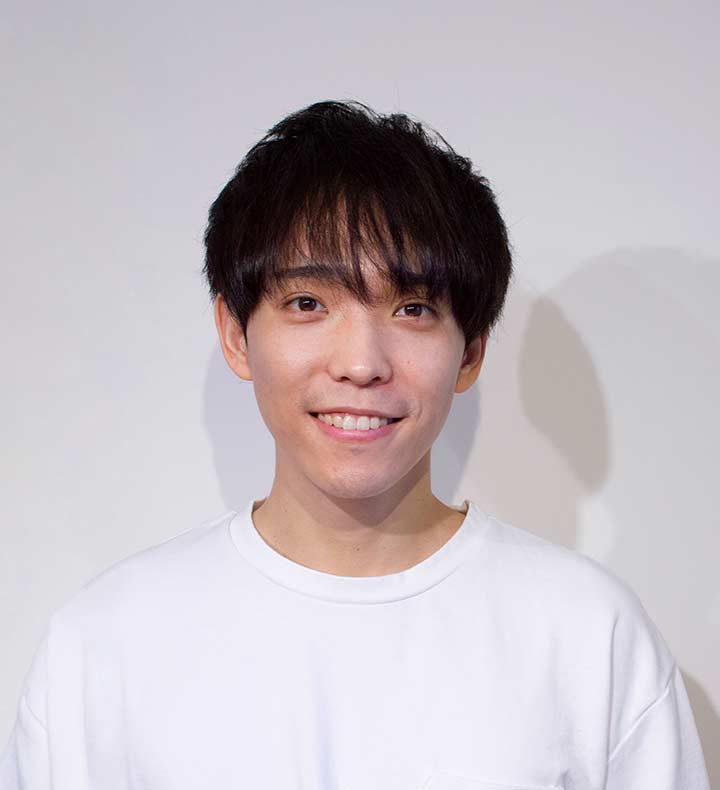
I entered KMD in its inaugural year, joined City Media project and Reality Media project, and received my master's degree in 2010 and my Ph.D. in 2013. After graduation, I started working as a Human-Computer Interaction researcher at the National University of Singapore, and I have been working at NTT Communication Science Laboratories since 2016.
Originally, I had no intention of becoming a researcher and even disliked writing papers, but with my desire to create something novel and the influence of my peers, research somehow became my job. The first KMD students had diverse personalities and talents. What I learned from them such as programming, prototyping, video editing, presentation techniques, and English conversation still supports me today. However, research does not complete when it is created but when it is published, so I had to keep improving my writing skills after graduation. Recently a product based on my research has been launched, and I now believe that I can change the world little by little, even by writing papers.
(This article was written in March 2022.)
Originally, I had no intention of becoming a researcher and even disliked writing papers, but with my desire to create something novel and the influence of my peers, research somehow became my job. The first KMD students had diverse personalities and talents. What I learned from them such as programming, prototyping, video editing, presentation techniques, and English conversation still supports me today. However, research does not complete when it is created but when it is published, so I had to keep improving my writing skills after graduation. Recently a product based on my research has been launched, and I now believe that I can change the world little by little, even by writing papers.
(This article was written in March 2022.)
TITLE Life can take you on a different journey but let's ace it anyway
Ami Yao
United States of America
CAREER Enrolled in April 2009; Completed master’s degree in March 2011
Ami Yao
United States of America
CAREER Enrolled in April 2009; Completed master’s degree in March 2011

I have always been passionate about media and marketing so I majored in Mass Communications in college and decided to join KMD after graduating. I never foresaw myself pursuing a career in any industries other than Marketing. Interestingly, I got my first job as an investment associate at a digital venture company in Tokyo. While I enjoyed my days working with both foreign and local innovators with ideas to impact the world, the job also unexpectedly got me interested in finance. I eventually decided to make a career move and got an offer at Bloomberg as an Earnings Estimates Data Analyst in Tokyo and I have been with the company for the next 7 years until today. I am currently leading the Client Service Team covering Japan, South Korea and Oceania markets, making sure the pricing and research data in the Bloomberg system flows consistently and data quality remains reliable and also acquiring new value-worthy data and making such available to Bloomberg clients. The two years at KMD has taught me to be open to all the opportunities around me rather than just sticking to what I think I am interested in. With an open mind, you can end up being a much more capable person than how you would imagine yourself to be.
(This article was written in March 2021.)
(This article was written in March 2021.)
TITLE Design offers unlimited opportunities
Punne Ratanabanthoon
Australia
CAREER Enrolled in September 2013; Completed master‘s degree in March 2016
Punne Ratanabanthoon
Australia
CAREER Enrolled in September 2013; Completed master‘s degree in March 2016
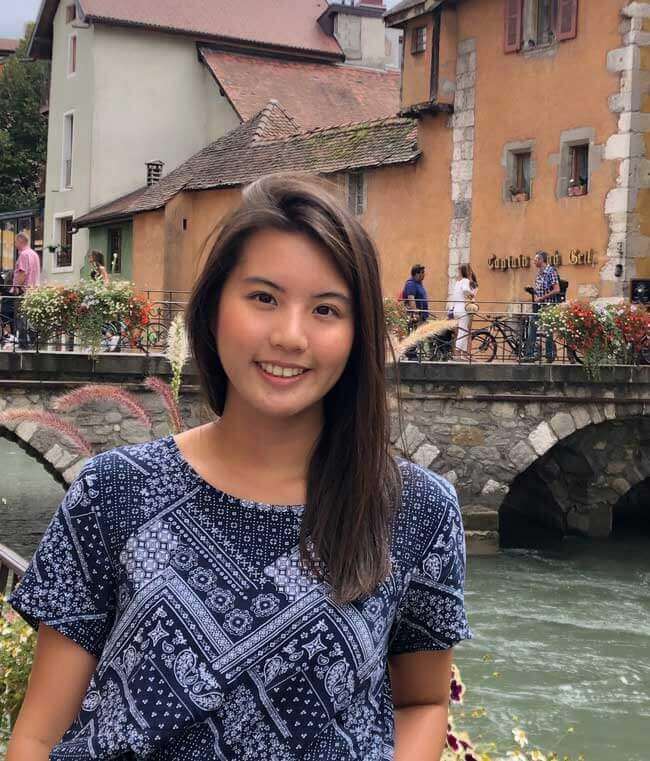
It all started when I was doing my internship in a film production company. Having majored in Film and Television as my bachelor's degree, it seemed rather straight forward to go down that path. Not too long after I had started the internship, I realized that I needed to diversify my career path to cope with the fast-changing world. KMD provided the exact experience that allowed me to connect my background through Design Thinking (KMD), and how to apply it in the business world (CEMS program). Back then, it was quite a combination that many people might question, but today, I can't thank it more. During the program, I met so many wonderful colleagues from all over the world, we worked and learned together through challenging and fun projects. It was an extremely rewarding experience.
Currently, I am working at On, the world's fastest-growing sports brand based in Switzerland. I am involved in different fields related to strategic sales, go-to-market product planning, and mobile platform development. My current project is to build a premium B2B mobile platform to improve the sell-in experience during the pandemic. This project involves a lot of Design Thinking approaches to make sense of the mission statement we promised which brings me back to what I learned at KMD. So yes, challenge accepted.
(This article was written in March 2021.)
Currently, I am working at On, the world's fastest-growing sports brand based in Switzerland. I am involved in different fields related to strategic sales, go-to-market product planning, and mobile platform development. My current project is to build a premium B2B mobile platform to improve the sell-in experience during the pandemic. This project involves a lot of Design Thinking approaches to make sense of the mission statement we promised which brings me back to what I learned at KMD. So yes, challenge accepted.
(This article was written in March 2021.)
TITLE Passion Drives Innovation
Yamen Saraiji
Syria
CAREER Enrolled in April 2013; Completed master‘s degree in March 2015/ Enrolled in April 2015; Completed doctoral degree in March 2018
Yamen Saraiji
Syria
CAREER Enrolled in April 2013; Completed master‘s degree in March 2015/ Enrolled in April 2015; Completed doctoral degree in March 2018
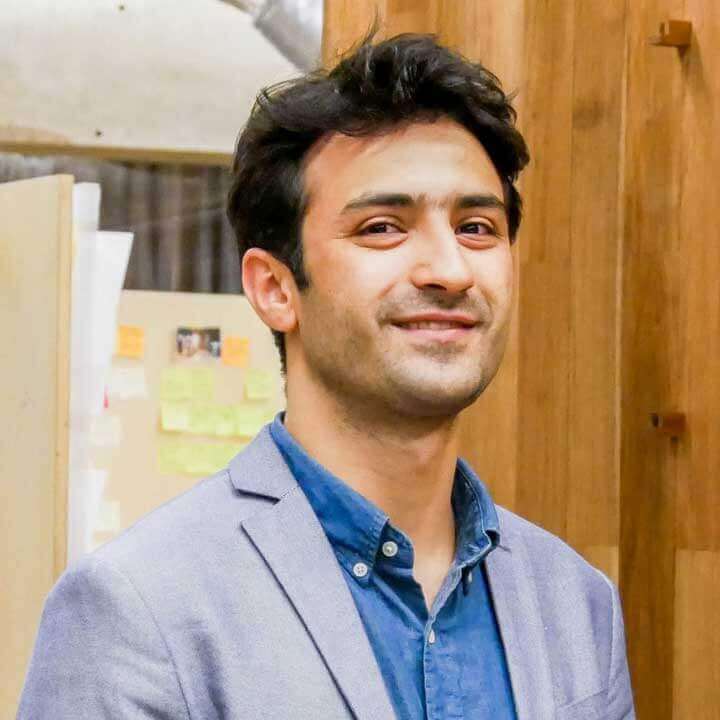
"Explore, Learn, and Create" have been my life theme for the past ten years. After graduating from my Computer Science bachelor's degree back in Syria 2010, I decided to carry on my postgraduate studies in Japan with an interest in learning about robotics and virtual reality. I found KMD as a great educational environment that converged both technology and design thinking, which was a unique approach in comparison with purely engineering schools. I joined KMD as a master's student in 2013, followed by a Ph.D. program in 2015 which I finished in 2018. My journey there didn't finish yet then, as I had the opportunity to join the school as an assistant professor for two brilliant years, working as a researcher and as an educator.
Persuading my explorative and creative passions, I decided to move to the industry to explore the world of business and deployment. In April 2020 I joined AvatarIn Inc., a new startup in Tokyo, as a director taking part in leading the development of a service-oriented avatars platform, which my research theme back at KMD focused on this topic. We aim to reshape the medium of communication, and taking major steps in deploying a massive network of service avatars.
(This article was written in March 2021.)
Persuading my explorative and creative passions, I decided to move to the industry to explore the world of business and deployment. In April 2020 I joined AvatarIn Inc., a new startup in Tokyo, as a director taking part in leading the development of a service-oriented avatars platform, which my research theme back at KMD focused on this topic. We aim to reshape the medium of communication, and taking major steps in deploying a massive network of service avatars.
(This article was written in March 2021.)
TITLE Where everything started
Kei Hiroi
Japan
CAREER Enrolled in April 2009; Completed master’s degree in March 2011 / Enrolled in April 2011; Completed doctoral degree in March 2014
Kei Hiroi
Japan
CAREER Enrolled in April 2009; Completed master’s degree in March 2011 / Enrolled in April 2011; Completed doctoral degree in March 2014
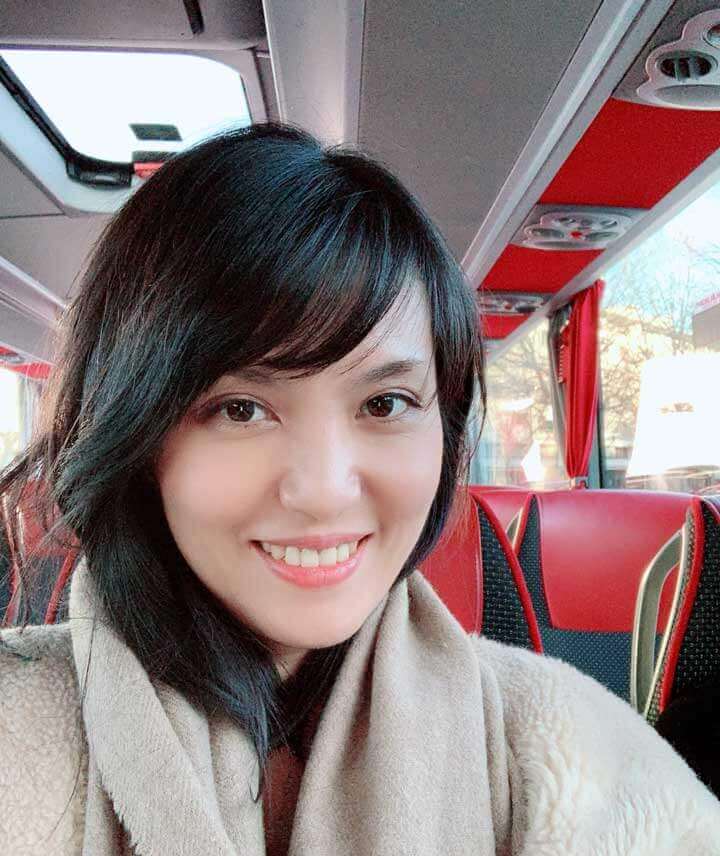
When I entered KMD, I had an only vague idea of what I would like to do. I didn't know how to achieve, and how to appeal my idea to others. I joined the NetworkMedia project, experienced various events, and had the opportunity to interact with people from various fields. The best thing at KMD is that I have more career options to forge my own path in life, and I learned how to rethink ideas fundamentally, reconstruct to exciting ones, and realize them myself.
Currently, I work as an associate professor at the Disaster Prevention Research Institute, Kyoto University, to research and develop disaster mitigation systems and analysis technologies. KMD is a place to open up our possibilities and give us the power to realize our dream. This experience is still very helpful. I hope that the experience of KMD could be connected to your future success for those who wish to enroll in KMD.
(This article was written in March 2021.)
Currently, I work as an associate professor at the Disaster Prevention Research Institute, Kyoto University, to research and develop disaster mitigation systems and analysis technologies. KMD is a place to open up our possibilities and give us the power to realize our dream. This experience is still very helpful. I hope that the experience of KMD could be connected to your future success for those who wish to enroll in KMD.
(This article was written in March 2021.)
TITLE IT engineer → KMD → Space exploration
Shintaro Hashimoto
Japan
CAREER Enrolled in April 2014; Completed master’s degree in March 2016
Shintaro Hashimoto
Japan
CAREER Enrolled in April 2014; Completed master’s degree in March 2016

I have been engaged in a wide range of work including mathematical optimization, spacecraft design, and security research, in addition to project launches at the Japan Aerospace Exploration Agency (JAXA). At first glance, this perhaps seems an unlikely career path to have branched out into after studying at KMD. I began contracted development of websites from when I was at elementary school. During university student, became entrepreneur receiving investment from a venture capital, going on to enroll at KMD with aspirations of creating a new media. However, what I was interested in was the security of web development that I had cultivated. Although this constituted a significant change in the direction of my research, the KMD faculty were readily receptive and provided personal connections with experts at the forefront of the field to me. Moreover, supervisor is traditionally another field teacher, but I also received support as academic advisor from two engineering academics. I learned the joys of research life while at KMD, which is what ultimately led me to my present occupation. I think this is the sense in which the KMD approach is imbued with diversity. When I proposed a VR project at my current job, it was the faculty at KMD who helped me find my way toward its realization. I feel that KMD has always dealt with me in this diverse manner both while I was enrolled at the school, and of course, even after I graduated.
(This article was written in March 2021.)
(This article was written in March 2021.)
TITLE How to Make a Not Technology Driven Innovation
Mai Orikasa
Japan
CAREER Enrolled in April 2015; Completed mater’s degree in March 2017
Mai Orikasa
Japan
CAREER Enrolled in April 2015; Completed mater’s degree in March 2017
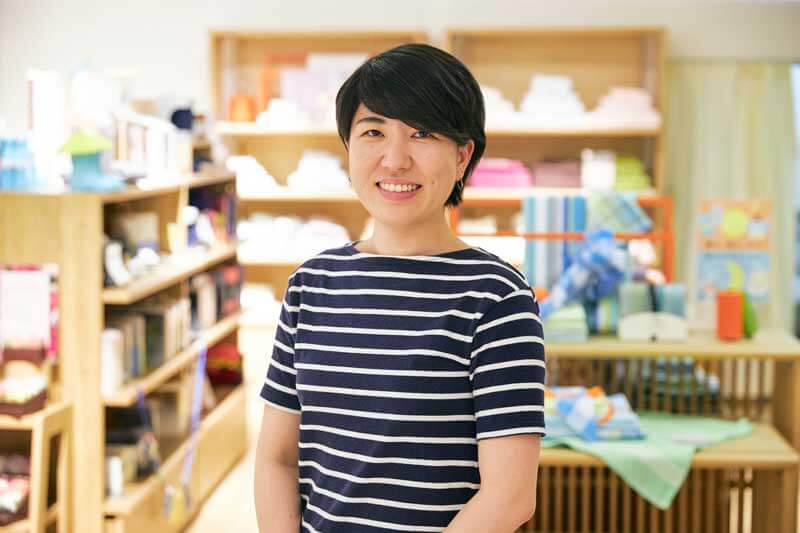
I studied product design and branding at Keio University SFC, and learned how interesting it is to reevaluate fields for which the value of design has yet to be explored through a design lens. I entered KMD with the keywords of bodily extensions and prosthetic legs, which I had been involved in as an undergraduate student. I took part in a Real Project to create a new cultural milieu and community called Sports Creation (Superhuman Sports Project).
We tend to think that the starting point for innovation is making things, but KMD helped me realize that innovation can undoubtedly be located in the moments when relationships form between people or when intangible culture begins to burgeon.
I have moved fields into the manufacture of bedding, and “sleep” now constitutes my work. Although at a manufacturer that produces tangible products, I am involved in product strategy and marketing in order to redefine “what it means to sleep.” Each day I put into practice what I learned at KMD on the frontlines of a business for which the point where ordinary people and “sleep” meet cannot be treated merely in terms of consumption, from creating a base for sleep consultation, through to Sleep Tech projects utilizing digital technologies and new approaches to athletic conditioning.
(This article was written in March 2020.)
We tend to think that the starting point for innovation is making things, but KMD helped me realize that innovation can undoubtedly be located in the moments when relationships form between people or when intangible culture begins to burgeon.
I have moved fields into the manufacture of bedding, and “sleep” now constitutes my work. Although at a manufacturer that produces tangible products, I am involved in product strategy and marketing in order to redefine “what it means to sleep.” Each day I put into practice what I learned at KMD on the frontlines of a business for which the point where ordinary people and “sleep” meet cannot be treated merely in terms of consumption, from creating a base for sleep consultation, through to Sleep Tech projects utilizing digital technologies and new approaches to athletic conditioning.
(This article was written in March 2020.)
TITLE Good design is good business
Boris Jitsukata
Germany
CAREER Enrolled in September 2012; Completed master‘s degree in September 2014
Boris Jitsukata
Germany
CAREER Enrolled in September 2012; Completed master‘s degree in September 2014
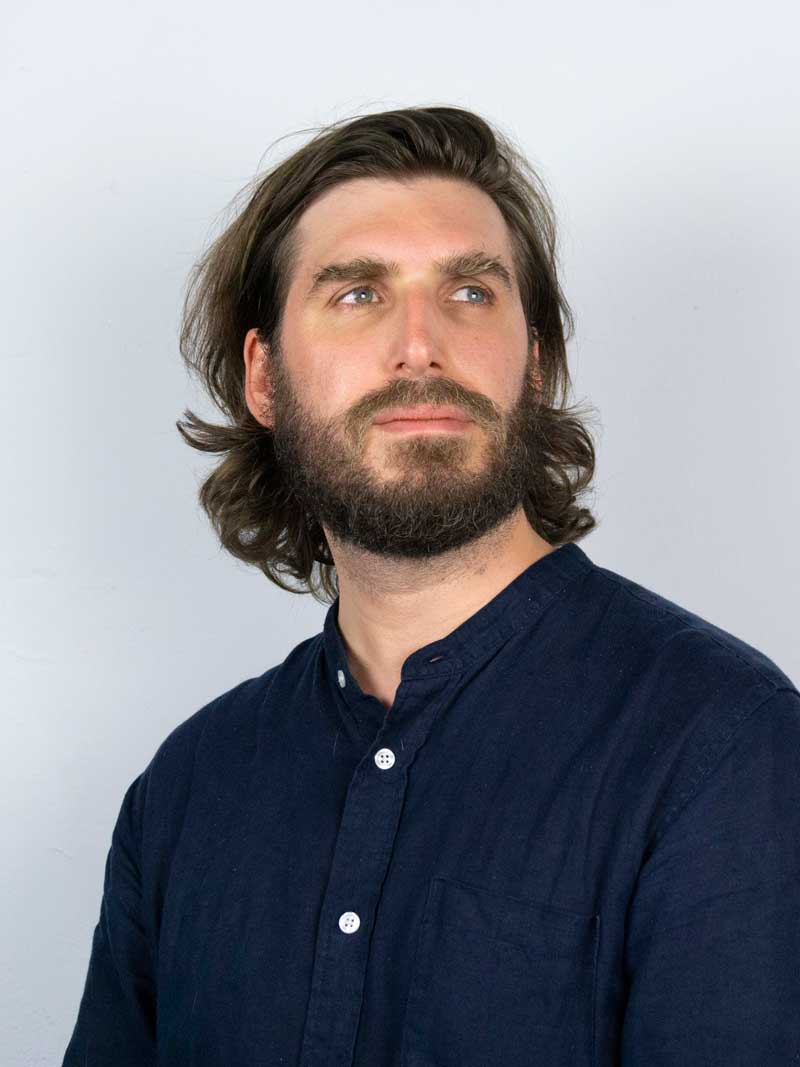
Back in Highschool everyone told me not to study design as it supposedly would be difficult to get a well paid job later. So I decided to study business administration for my undergrads instead. Back then there was no program like KMD.
Only later the combination of business and design became more common. Today it is impossible to separate the two.
When I joined KMD in 2012, Keio actually just became a partner university in the CEMS MIM (Master’s in International Management) Programme - as the very first design school.
For me it was fantastic that I could graduate within 2 years with both a master’s in International Management and a master’s in Media Design. It was also around that time when I joined early-stage Tokyo-based design firm Goodpatch.
Fast forward 6.5 years later I am still with Goodpatch, which became Japan’s leading design firm with globally over 170 employees. Today in my role as an executive board director I oversee the global business with studios in Berlin, München and Paris. We help our clients to become more successful through design.
In the company I aim to re-create the inspiring atmosphere of grad school where everyone is building, tinkering and sharing something.
(This article was written in March 2020.)
Only later the combination of business and design became more common. Today it is impossible to separate the two.
When I joined KMD in 2012, Keio actually just became a partner university in the CEMS MIM (Master’s in International Management) Programme - as the very first design school.
For me it was fantastic that I could graduate within 2 years with both a master’s in International Management and a master’s in Media Design. It was also around that time when I joined early-stage Tokyo-based design firm Goodpatch.
Fast forward 6.5 years later I am still with Goodpatch, which became Japan’s leading design firm with globally over 170 employees. Today in my role as an executive board director I oversee the global business with studios in Berlin, München and Paris. We help our clients to become more successful through design.
In the company I aim to re-create the inspiring atmosphere of grad school where everyone is building, tinkering and sharing something.
(This article was written in March 2020.)
TITLE Where Innovators are Born
Haruka Mera
Japan
CAREER Enrolled in April 2010; Completed master’s degree in March 2012
Haruka Mera
Japan
CAREER Enrolled in April 2010; Completed master’s degree in March 2012
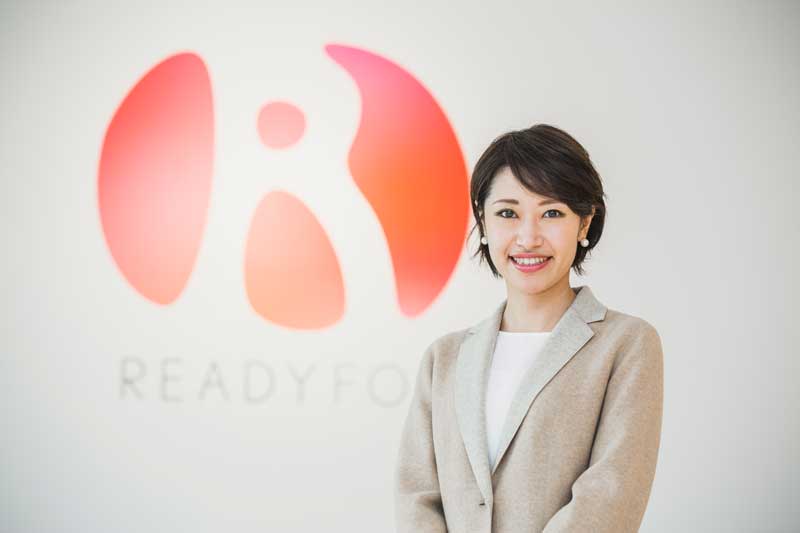
“It doesn’t matter what, just go and see!” This is what I was told by Professor Furukawa, my research advisor at KMD.
At the end of April, just after being admitted to KMD, I had the chance to go to Silicon Valley for a week. Here, I was able to meet outstanding entrepreneurs from all over the world. It was fascinating to see these professionals who are entrepreneurs that create future possibilities, and I too wanted to become someone who creates something at Silicon Valley. I was overwhelmed with this feeling.
Right after returning to Japan, I met with Professor Furukawa, who had interviewed me for the entrance exam, and I spoke to him of my desire to study abroad at Stanford University in Silicon Valley. That’s when he told me to “just go and see,” which is what I did.
I returned to KMD six months later and set up READYFOR, the first crowdfunding service in Japan, and it has now grown into a company that employs around 120 people. The vision of READYFOR is “to create a world where everyone can realize whatever they want to do.”
When I wanted a new challenge, it was KMD that spurred me on and led me to making it happen, and for that I am truly grateful.
(This article was written in March 2020.)
At the end of April, just after being admitted to KMD, I had the chance to go to Silicon Valley for a week. Here, I was able to meet outstanding entrepreneurs from all over the world. It was fascinating to see these professionals who are entrepreneurs that create future possibilities, and I too wanted to become someone who creates something at Silicon Valley. I was overwhelmed with this feeling.
Right after returning to Japan, I met with Professor Furukawa, who had interviewed me for the entrance exam, and I spoke to him of my desire to study abroad at Stanford University in Silicon Valley. That’s when he told me to “just go and see,” which is what I did.
I returned to KMD six months later and set up READYFOR, the first crowdfunding service in Japan, and it has now grown into a company that employs around 120 people. The vision of READYFOR is “to create a world where everyone can realize whatever they want to do.”
When I wanted a new challenge, it was KMD that spurred me on and led me to making it happen, and for that I am truly grateful.
(This article was written in March 2020.)
TITLE Making awesome things with awesome people
Daisuke Yukita
Japan
CAREER Enrolled in April 2015; Completed master’s degree in September 2017
Daisuke Yukita
Japan
CAREER Enrolled in April 2015; Completed master’s degree in September 2017
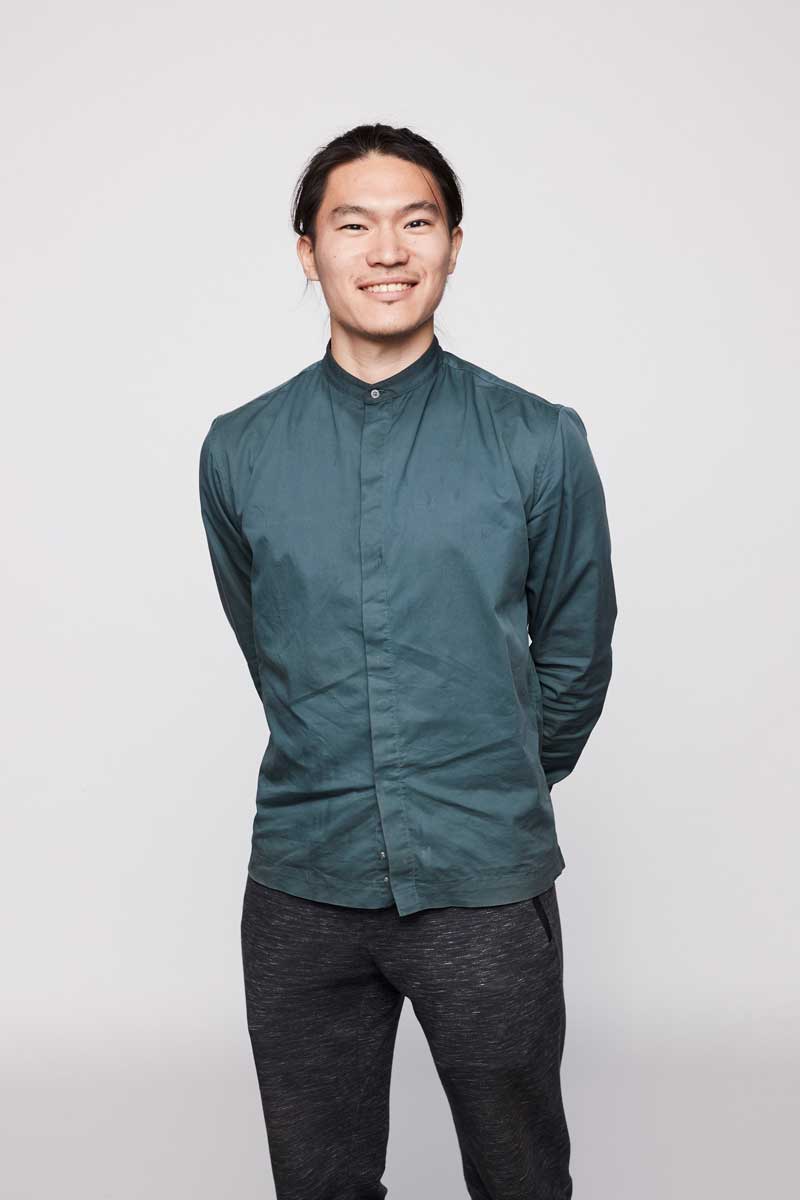
I studied computer science at university, and as much as I enjoyed learning it I also realized that my true interest lies not in “how” to make things, but in “why” and “what” to make. It was then that I learned that design is the tool that can tackle such questions, which led to finding out about the Global Innovation Design program. During GID, all I needed to care about was making awesome things with awesome people, which was a truly inspiring and fruitful experience. After coming back to KMD, I continued to make everything that I could get my hands on along with fellow KMD students, desperately hoping that whatever we design would make a positive impact on someone out there.
Currently I work as an Interaction Designer at IDEO, but what I do for work every day has not changed since then. Together with designers of diverse skill sets, we tackle the question of “why” and “what” to make, then prototype our ideas in every way possible to bring it to life. The most valuable lesson I learned at KMD is the utter joy and power of making, and I aim to spread that joy to empower as many people as I can.
(This article was written in March 2020.)
Currently I work as an Interaction Designer at IDEO, but what I do for work every day has not changed since then. Together with designers of diverse skill sets, we tackle the question of “why” and “what” to make, then prototype our ideas in every way possible to bring it to life. The most valuable lesson I learned at KMD is the utter joy and power of making, and I aim to spread that joy to empower as many people as I can.
(This article was written in March 2020.)
TITLE How My Journey Started
Jiahui Zhou
China
CAREER Enrolled in September 2014; Completed master’s degree in March 2017
Jiahui Zhou
China
CAREER Enrolled in September 2014; Completed master’s degree in March 2017

During my university years in China, I was majoring in Chemical Engineering. I soon realized Engineering was not my passion, but I developed a strong interest for system thinking. That’s when I went to the states and got to know about Design Thinking. I was working with students from all over the world, and was so fascinated by the chemistry a diverse team created when they work towards a shared value. So, when I decided to pursue a Master in Design, I knew I was on the search for a nontraditional environment, and that’s how I joined KMD.
During my years in KMD, I had the opportunity to work with people from different educational backgrounds, speaking different languages, growing up in diverse cultures. This precious experience in my academic years, taught me to work with diversity, and cope with complexity. I was also very lucky to join the GID program, during which we travelled to London and New York. The GID experience gave me a broader view of design which was a contrast from traditional craftsmanship to front-end speculative design.
I currently work in a Strategic Design Agency, helping large-scale Japanese organizations optimize their user experience, develop new business, and prototype their future vision. This exciting work comes with great complexity at the same time. Thanks to the valuable experience I gained from KMD, I am more confident and comfortable to tackle different kind of challenges I face everyday, and always move forward.
(This article was written in March 2020.)
During my years in KMD, I had the opportunity to work with people from different educational backgrounds, speaking different languages, growing up in diverse cultures. This precious experience in my academic years, taught me to work with diversity, and cope with complexity. I was also very lucky to join the GID program, during which we travelled to London and New York. The GID experience gave me a broader view of design which was a contrast from traditional craftsmanship to front-end speculative design.
I currently work in a Strategic Design Agency, helping large-scale Japanese organizations optimize their user experience, develop new business, and prototype their future vision. This exciting work comes with great complexity at the same time. Thanks to the valuable experience I gained from KMD, I am more confident and comfortable to tackle different kind of challenges I face everyday, and always move forward.
(This article was written in March 2020.)
TITLE Raising the “batting average” of successfully creating something from nothing and extending the reach of the “hit ball” to increase our presence
Moe Kobayashi
Japan
CAREER Enrolled in April 2014; Completed master’s degree in March 2016
Moe Kobayashi
Japan
CAREER Enrolled in April 2014; Completed master’s degree in March 2016

While I was studying at Keio University's Shonan Fujisawa Campus (SFC), I learned how enjoyable concept design is, starting with nothing to create something, and became engrossed. Although I created numerous concept designs, it was rare to produce something I was satisfied with, or which received recognition from others. It was very much a “product of chance.”
How can this “batting average” be raised knowingly and not by chance? It was when fretting over this that I came across “design thinking” and the Keio University Graduate School of Media Design (KMD).
At KMD, you take on the challenge of creating something from nothing together with people who have a diverse range of viewpoints and experiences, receiving a lot of stimulation. This allowed me to receive the training necessary to increase my “batting average” for creating successful designs. Moreover, being able to learn about the “form” of design thinking also had a big impact. I began to accept and trust my bodily feelings more over what my head was telling me, leading to more creative and fulfilling outputs.
Now, after graduating and working at an advertising agency, I established a traditional Chinese medicine lifestyle brand called “DAYLILY.” I started the company together with Yiting Wang from Taiwan whom I met at KMD, and we are struggling each day to become a brand that represents Asia. From here on out, I want to keep challenging myself to extend the reach of our “hit ball” to further strengthen our presence.
(This article was written in March 2019.)
How can this “batting average” be raised knowingly and not by chance? It was when fretting over this that I came across “design thinking” and the Keio University Graduate School of Media Design (KMD).
At KMD, you take on the challenge of creating something from nothing together with people who have a diverse range of viewpoints and experiences, receiving a lot of stimulation. This allowed me to receive the training necessary to increase my “batting average” for creating successful designs. Moreover, being able to learn about the “form” of design thinking also had a big impact. I began to accept and trust my bodily feelings more over what my head was telling me, leading to more creative and fulfilling outputs.
Now, after graduating and working at an advertising agency, I established a traditional Chinese medicine lifestyle brand called “DAYLILY.” I started the company together with Yiting Wang from Taiwan whom I met at KMD, and we are struggling each day to become a brand that represents Asia. From here on out, I want to keep challenging myself to extend the reach of our “hit ball” to further strengthen our presence.
(This article was written in March 2019.)
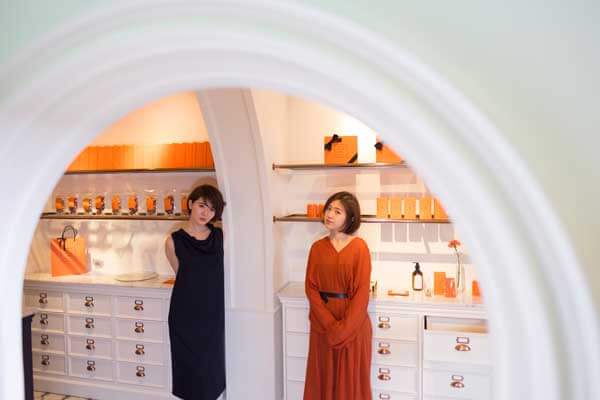
TITLE Sharing the Outcomes of Regional Revitalization Tested in Local Communities
Takashi Oe
Japan
CAREER Enrolled in April 2008; Completed master’s degree in March 2010
Takashi Oe
Japan
CAREER Enrolled in April 2008; Completed master’s degree in March 2010
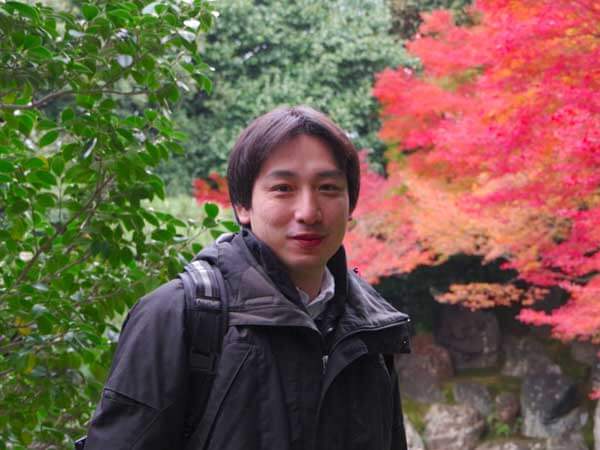
I joined KMD as a working adult, after experienced coordinating various projects leveraging IT to improve operations and facilitate innovative productions at a foreign consulting and a leading manufacturer of household electronics company.
In KMD, I established the specifics of my research theme in discussion with KMD faculty and project members with various backgrounds taking in technology, policy, and design, while researching the relationship between policy and industry as part of support activities for the policy recommendation group “Policy Watch.” We successfully elaborated a verification process in a form which closely resembled real world conditions through prototyping using a Real Project.
As one of the affiliated researchers of KMD today; “Regional revitalization by leveraging industrial and cultural vitality” is my project main focus. The project is now becoming beyond the academic research, but it gives us a chance to involve a project from launching startups to verify the outcomes. We established the first satellite office in Sabae City, Fukui Prefecture. This is our “hub station” to carry out researches on protocols to create markets for traditional crafts and eyewear which use materials such as lacquerware. We leverage craftsmanship side-by-side with local craftspeople to create the products to which we “aspire”, but which also have “market potential,” proposing products such as lacquerware tumblers and iPhone cases that integrate traditional coating techniques into modern lifestyle scenarios.
(This article was written in March 2019.)
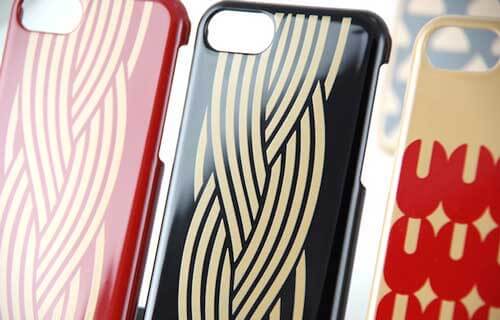
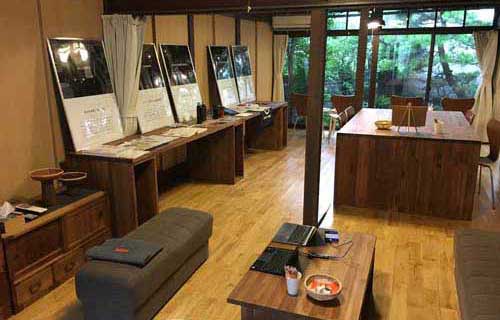
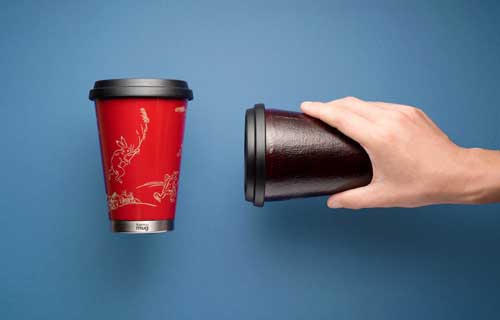
In KMD, I established the specifics of my research theme in discussion with KMD faculty and project members with various backgrounds taking in technology, policy, and design, while researching the relationship between policy and industry as part of support activities for the policy recommendation group “Policy Watch.” We successfully elaborated a verification process in a form which closely resembled real world conditions through prototyping using a Real Project.
As one of the affiliated researchers of KMD today; “Regional revitalization by leveraging industrial and cultural vitality” is my project main focus. The project is now becoming beyond the academic research, but it gives us a chance to involve a project from launching startups to verify the outcomes. We established the first satellite office in Sabae City, Fukui Prefecture. This is our “hub station” to carry out researches on protocols to create markets for traditional crafts and eyewear which use materials such as lacquerware. We leverage craftsmanship side-by-side with local craftspeople to create the products to which we “aspire”, but which also have “market potential,” proposing products such as lacquerware tumblers and iPhone cases that integrate traditional coating techniques into modern lifestyle scenarios.
(This article was written in March 2019.)



TITLE Where I have reinvented myself
Felipe Pontes
Brazil
CAREER Enrolled in September 2014; Completed master's degree in September 2016
Felipe Pontes
Brazil
CAREER Enrolled in September 2014; Completed master's degree in September 2016
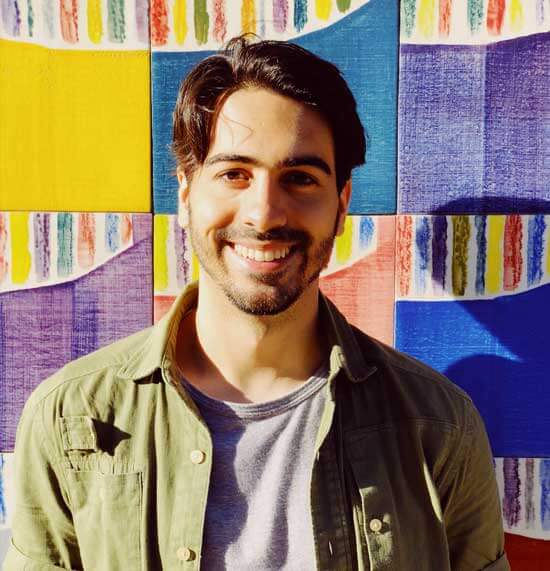
I have joined KMD with three clear goals: to change my career, experience a completely different culture, and learn how to work in an international environment. Luckily, all objectives were accomplished. Back home, in Brazil, I have worked for six years as a magazine reporter after majoring in Journalism. As time passed by, I realized that I needed a career change to keep motivated. Deep down, I wanted to become a service designer.
This was no easy task. Service design is an emerging field, and it is hard to find schools that teach it directly or indirectly. But I was lucky again to come across KMD and realizing that it could help me achieve my dream. I have studied there from 2014 to 2016, thanks to a full Japanese government scholarship. During two years, I have managed to publish a thesis related to service design, learned to become a reliable professional in my new area and how to do business in Japan.
I have eventually joined Neuromagic, a Tokyo-based consultancy and co-founded its Service Design Group. The department is still very young, but it already managed to support several large companies in Japan. My team is specialized in short, medium and long-term consulting interventions using design thinking methodologies to help clients launch better products and services. Not only that, we constantly give lectures about our field to businesses and universities. It feels good to put into practice the knowledge acquired thanks to KMD, its enthusiastic professors and excellent infrastructure.
(This article was written in March 2019.)
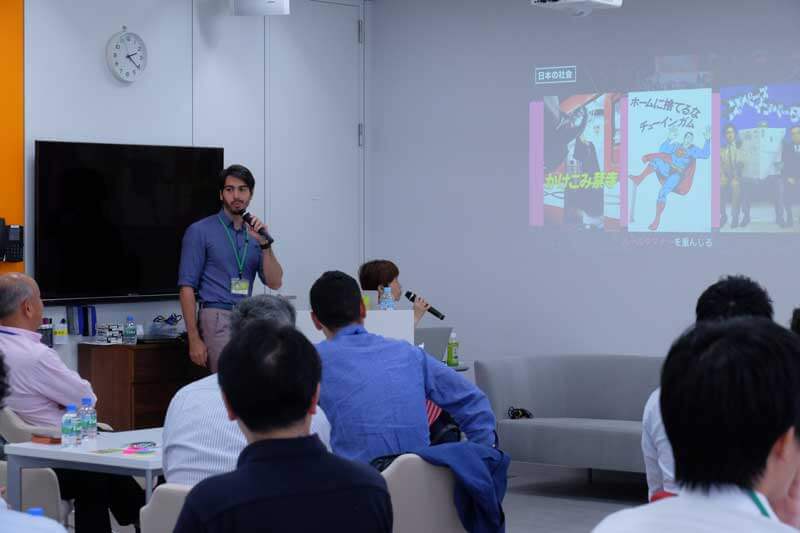
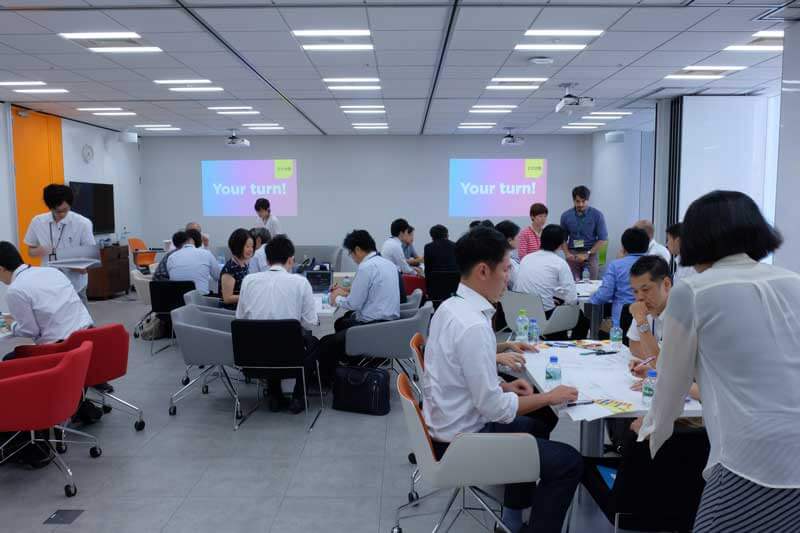
This was no easy task. Service design is an emerging field, and it is hard to find schools that teach it directly or indirectly. But I was lucky again to come across KMD and realizing that it could help me achieve my dream. I have studied there from 2014 to 2016, thanks to a full Japanese government scholarship. During two years, I have managed to publish a thesis related to service design, learned to become a reliable professional in my new area and how to do business in Japan.
I have eventually joined Neuromagic, a Tokyo-based consultancy and co-founded its Service Design Group. The department is still very young, but it already managed to support several large companies in Japan. My team is specialized in short, medium and long-term consulting interventions using design thinking methodologies to help clients launch better products and services. Not only that, we constantly give lectures about our field to businesses and universities. It feels good to put into practice the knowledge acquired thanks to KMD, its enthusiastic professors and excellent infrastructure.
(This article was written in March 2019.)


TITLE A Place Linking Research with Business
Shinichi Fujikawa
Japan
CAREER Enrolled in April 2013; Completed doctoral degree in September 2017
Shinichi Fujikawa
Japan
CAREER Enrolled in April 2013; Completed doctoral degree in September 2017

Although I worked for a long time as a developer in the web industry, I wanted to acquire the intellectual skills to design web services by myself and had been thinking about entering a graduate school. The sale of the web service I had been running created the opportunity for me to enroll in the doctoral program at the Graduate School of Media Design (KMD).
I currently work at BASE, Inc., a company that offers a platform called “BASE” which enables customers to operate an internet shop free of charge. I joined the executive board as the Chief Technology Officer (CTO) while enrolled at KMD. I have also been focusing on recruiting developers, and I wrote my dissertation on research that produces a trust score for a developer’s skills based on a social network service that is used by developers called GitHub. Internet-based trust scores has garnered greater attention in recent years, and I was able to immediately put the knowledge I gained from my research into practice in my daily work.
I draw on the supervision style of my lecturers for management as well. I learned a style of supervision which reviews the output of subordinates who have been entrusted with individual problems as a method that ensures they rigorously think things over. I enjoyed the privilege of being a working student at KMD in a program that influences my job in this way.
(This article was written in March 2019.)
I currently work at BASE, Inc., a company that offers a platform called “BASE” which enables customers to operate an internet shop free of charge. I joined the executive board as the Chief Technology Officer (CTO) while enrolled at KMD. I have also been focusing on recruiting developers, and I wrote my dissertation on research that produces a trust score for a developer’s skills based on a social network service that is used by developers called GitHub. Internet-based trust scores has garnered greater attention in recent years, and I was able to immediately put the knowledge I gained from my research into practice in my daily work.
I draw on the supervision style of my lecturers for management as well. I learned a style of supervision which reviews the output of subordinates who have been entrusted with individual problems as a method that ensures they rigorously think things over. I enjoyed the privilege of being a working student at KMD in a program that influences my job in this way.
(This article was written in March 2019.)
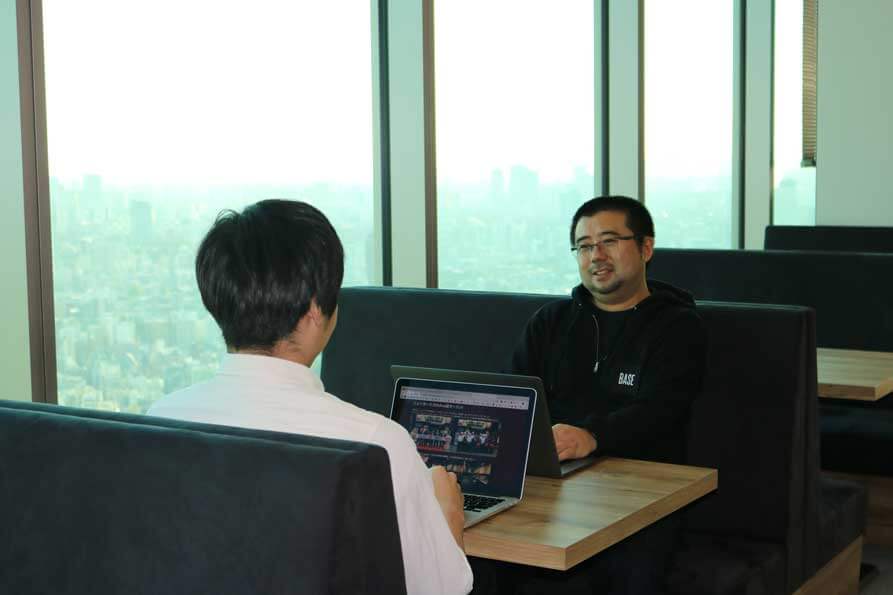
TITLE To seek, to define and to practice design
Niya Kabir
Canada
CAREER Enrolled in September 2012; Completed master’s degree in March 2015
Niya Kabir
Canada
CAREER Enrolled in September 2012; Completed master’s degree in March 2015
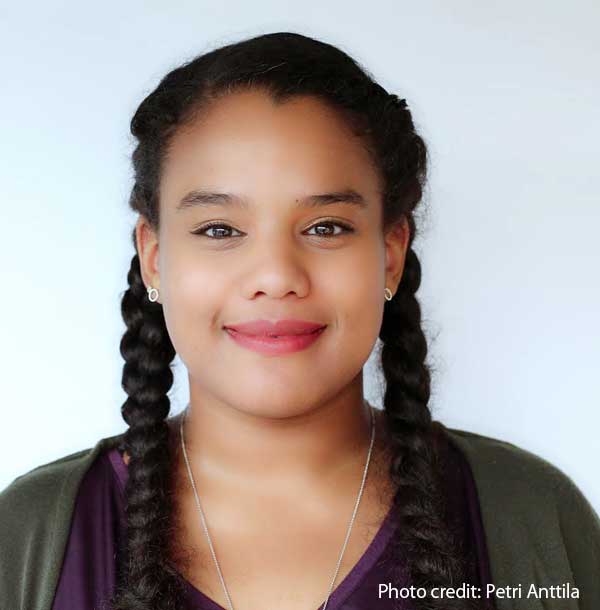
Before entering KMD fall of 2012, I graduated from the University of Toronto (class of 2011) as a Human Computer Interaction Specialist. The time between entering KMD for my Masters and graduating from my undergraduate studies, I worked part time assisting my old professors and also explored design practices in business. It was through my interactions with international students and even entrepreneurs that led me to seek out an international perspective to design research and synthesis practices. I was and still am motivated to be a designer who can work globally. I wanted to gain the skills necessary to evaluate and assess problems and opportunities, across borders and within varying cultural and social context. I would ask myself:
"How can I break away from a western dominated mindset to a way of thinking and ultimately understanding that would be borderless and flexible?"
"Or how might I gain not only the necessary skills, but also tools that I could utilize to enable design to impact society?"
It was questions like these that led me to seek out my Masters in Japan.
My decision to enter KMD, opened up main doors. For instance, joining as the first batch of GID, where I explored other design methods and challenged myself to conducting research in collaboration with a diversely skilled group of individuals.
Since graduating, I have been part of building Slush Tokyo (Slush Asia), through bringing together change makers, key industry players and different community builders together to create a thriving startup ecosystem. During my 4 years with Slush I also worked as a freelancer with startups and teams to introduce where design meets business in practice. Also, I had the great opportunity to work at a corporate venture capital for 1 year, before I moved on to focus back into design practices in business within a design agency.
Most recently, I have been working on building a company - N. A. K. Studios - focused on becoming a design partner for different stakeholders within the startup ecosystem. The goal is to collaborate and build cases on how design can impact business, beyond just visually. With the evolving design practices and the growing number of design methods and tools available, there isn’t a one fits all way to solve problems or uncover opportunities. As such, N. A. K. is aiming to be an environment, where together, founders/startups/corporates can formulating the best design practices for their given context.
(This article was written in March 2019.)
"How can I break away from a western dominated mindset to a way of thinking and ultimately understanding that would be borderless and flexible?"
"Or how might I gain not only the necessary skills, but also tools that I could utilize to enable design to impact society?"
It was questions like these that led me to seek out my Masters in Japan.
My decision to enter KMD, opened up main doors. For instance, joining as the first batch of GID, where I explored other design methods and challenged myself to conducting research in collaboration with a diversely skilled group of individuals.
Since graduating, I have been part of building Slush Tokyo (Slush Asia), through bringing together change makers, key industry players and different community builders together to create a thriving startup ecosystem. During my 4 years with Slush I also worked as a freelancer with startups and teams to introduce where design meets business in practice. Also, I had the great opportunity to work at a corporate venture capital for 1 year, before I moved on to focus back into design practices in business within a design agency.
Most recently, I have been working on building a company - N. A. K. Studios - focused on becoming a design partner for different stakeholders within the startup ecosystem. The goal is to collaborate and build cases on how design can impact business, beyond just visually. With the evolving design practices and the growing number of design methods and tools available, there isn’t a one fits all way to solve problems or uncover opportunities. As such, N. A. K. is aiming to be an environment, where together, founders/startups/corporates can formulating the best design practices for their given context.
(This article was written in March 2019.)
TITLE The strength to live as an artist
Minori Nagashima
Japan
CAREER Enrolled in April 2010; Completed master’s degree in March 2012
Minori Nagashima
Japan
CAREER Enrolled in April 2010; Completed master’s degree in March 2012
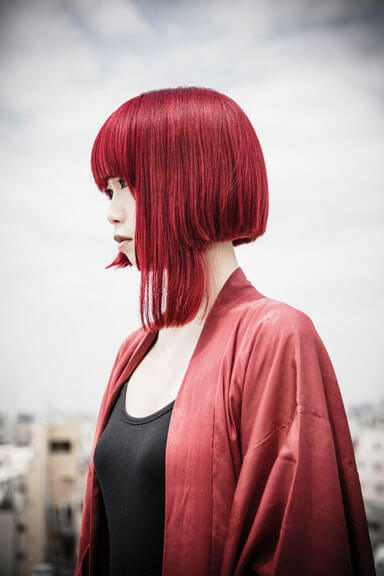
I am active in the world of art and music. In addition to composition and arrangement, I take part in many concerts as a keyboardist. Recently, I also produced music for a show at Japan Fashion Week in Tokyo. Drawing on my experiences of producing various artworks including “teamLab Island - Learn and Play! Future Park -,” I also direct artworks and exhibitions as a freelance director.
I majored in music as an undergraduate and enrolled at KMD in order to learn how to make a living using my skills. At KMD, one can learn hands-on not only about making things, but also about how to put these to use in society. The experiences I gained at KMD feed into my ability to conceive, create, and disseminate artworks in the real world. As an independent artist, not only do I create art, but I oversee everything from contracts to management by myself. If one has the ability to grasp things from multiple angles, one has the strength to live freely without being constrained by anything.
(This article was written in March 2018.)
I majored in music as an undergraduate and enrolled at KMD in order to learn how to make a living using my skills. At KMD, one can learn hands-on not only about making things, but also about how to put these to use in society. The experiences I gained at KMD feed into my ability to conceive, create, and disseminate artworks in the real world. As an independent artist, not only do I create art, but I oversee everything from contracts to management by myself. If one has the ability to grasp things from multiple angles, one has the strength to live freely without being constrained by anything.
(This article was written in March 2018.)
TITLE Implementing one’s ideas in society through research and entrepreneurship
Erika Okude
Japan
CAREER Enrolled in April 2011; Completed master’s degree in March 2013
Erika Okude
Japan
CAREER Enrolled in April 2011; Completed master’s degree in March 2013

Before entering KMD, I majored in interactive design at the Keio University Faculty of Environment and Information Studies. For my graduation project, I created an installation artwork that projected ripples by sensing where raindrops fell on the surface of water. My motivation for progressing to KMD was wanting, based on this experience, to learn skills for tackling everyday problems from a broader perspective and for launching my ideas in the real world. My research project at KMD was themed on taking pictures and creating a visual experience of parenting in the digital age. I feel I gained the ability to design concepts aligned with my project subjects based on in-depth ethnographies.
After graduating, I started a design company with a friend from an art university, launching the character brand “Tetra Style” and holding workshops as part of an activity called “otomedengei-bu” (girl's electronic accessory club). We also have a smart crime-prevention buzzer for women called “shippo kōru” (tail call) for a project we started recently. We engage in product development while following the “design thinking” process to develop original and attractive products which leverage digital technology to ensure safety.
(This article was written in March 2018.)
After graduating, I started a design company with a friend from an art university, launching the character brand “Tetra Style” and holding workshops as part of an activity called “otomedengei-bu” (girl's electronic accessory club). We also have a smart crime-prevention buzzer for women called “shippo kōru” (tail call) for a project we started recently. We engage in product development while following the “design thinking” process to develop original and attractive products which leverage digital technology to ensure safety.
(This article was written in March 2018.)
TITLE Aiming for next-generation innovations through the implementation of industry-academia partnerships
Naoya Takei
Japan
CAREER Enrolled in April 2011; Completed doctoral degree in March 2017
Naoya Takei
Japan
CAREER Enrolled in April 2011; Completed doctoral degree in March 2017
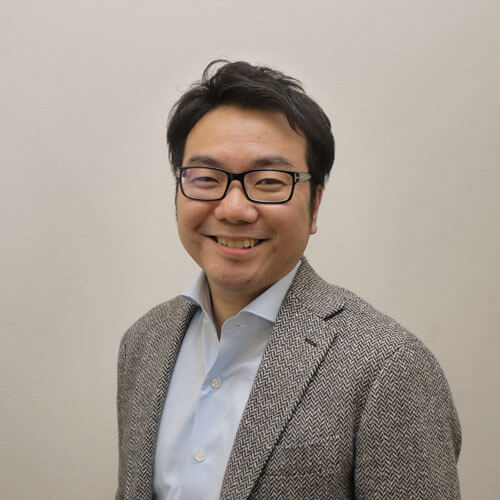
I entered KMD with questions on how mature companies should approach triggering next-level innovations. Having been involved in product development at a manufacturer, I became more aware of this problem and grew interested in the method of design thinking at KMD. After entering KMD, I was involved from the inception of a project for promoting next-level innovation at NKC (Nakanishi Metal Works Co., Ltd.), a corporation with stable technical capacities. While this took four years, in 2018 we finally reached the point of commercializing a service called “agbee” that benefits farmers in the outskirts of urban areas through the use of partner robots. When commercializing a product, one encounters very different problems when thinking about what first needs to be done, in other words the issue of creating 1 from 0, to the subsequent issues involved in making 1 into 10 or 10 into 100. I specifically attribute my ability to engage with these real-world problems to KMD and the support I got from professors.
Drawing on this experience, I am currently supporting the development of innovative solutions at various companies. I spend each day productively engaged with finding practical solutions to the questions that first prompted me to attend KMD.
(This article was written in March 2018.)
Drawing on this experience, I am currently supporting the development of innovative solutions at various companies. I spend each day productively engaged with finding practical solutions to the questions that first prompted me to attend KMD.
(This article was written in March 2018.)
TITLE A place of co-creation
Yuko Kawano
Japan
CAREER Enrolled in April 2011; Completed master’s degree in March 2013
Yuko Kawano
Japan
CAREER Enrolled in April 2011; Completed master’s degree in March 2013
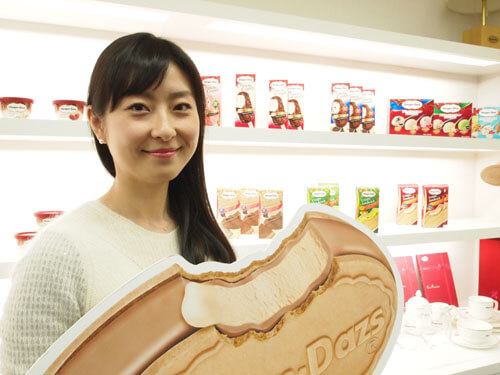
I currently work in the product development at the marketing headquarters of Haagen-Dazs Japan.Incorporated. KMD promotes the co-creativity of the distinct domains of the arts and sciences, and I am keenly reminded of the importance of this at work.
It takes around two years to create one product. Even if a good concept and prototype has been developed, it would be meaningless without actual production in the factory. The co-creativity and balance of artistic elements and scientific aspects are indispensable to the process of tying the idea together with the fact toward the real production.
I wanted to study again about corporate branding and marketing, so I decided to enroll at KMD after two years of working. I carried out research focused on creating shared value (strategic CSR directly related to business operations) while attending KMD. It was a big sensation for me to enter the academic environment which is the complete opposite from the domestic environment of a Japanese corporation which I used to be, and there were also chances to encounter with many unique and inspiring people with unique habits that I had never before encountered. Even though there was some initial travail, this experience has now become an invaluable asset. There is an expression “to be the best, one must learn from the best.” I think KMD is the best place to learn directly from the leading figures of various fields.
(This article was written in March 2018.)
It takes around two years to create one product. Even if a good concept and prototype has been developed, it would be meaningless without actual production in the factory. The co-creativity and balance of artistic elements and scientific aspects are indispensable to the process of tying the idea together with the fact toward the real production.
I wanted to study again about corporate branding and marketing, so I decided to enroll at KMD after two years of working. I carried out research focused on creating shared value (strategic CSR directly related to business operations) while attending KMD. It was a big sensation for me to enter the academic environment which is the complete opposite from the domestic environment of a Japanese corporation which I used to be, and there were also chances to encounter with many unique and inspiring people with unique habits that I had never before encountered. Even though there was some initial travail, this experience has now become an invaluable asset. There is an expression “to be the best, one must learn from the best.” I think KMD is the best place to learn directly from the leading figures of various fields.
(This article was written in March 2018.)
TITLE Bridging the gap between Research and Product Design for helping mankind
Charith Fernando
Sri Lanka
CAREER Enrolled in September 2008; Completed master’s degree in September 2010 /
Enrolled in September 2010; Completed doctoral degree in September 2013
Charith Fernando
Sri Lanka
CAREER Enrolled in September 2008; Completed master’s degree in September 2010 /
Enrolled in September 2010; Completed doctoral degree in September 2013
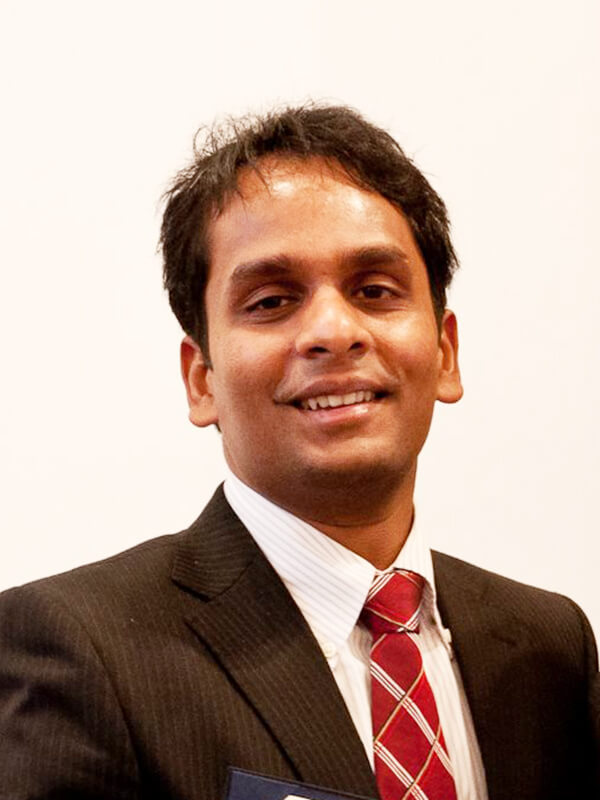
I entered KMD at the first fall batch intake in 2008. Before Joining KMD, I majored in Electronic Engineering, Computer Science Enginering, and Robotics Engineering. During my KMD life, I belonged to Reality Media Project (Masters) and Embodied Media Project (PhD.). During KMD life, I learned the important the collaborative work, multi-cultural and multi-disciplinary teamwork. Also, I was able to improve my Japanese, product design skills, idea pitch and presentation skills. After finishing my PhD study, I wanted to bring my work to the next level and decided to Join KMD faculty as a Senior Assistant Professor. I lead the Telexistence project (inside & outside KMD) as the first step of bridging the gap between research work and industrial collaborations. After 4 years I decided to spin-off my work into my own start-up and achieve my dream goal.
Today, I work as Chief Technological Officer (CTO) of Telexistence Inc. (https://tx-inc.com/) where I manage a very talented engineering team sharing the same interest of industrialize telexistence technology to dramatically change lives, organizations, and society. One of our main streams of business involves creating business opportunity by lowering cost of human transportation and action of human actually being there. I have gained a lot from KMD, this someday I hope to collaborate and support KMD with my assets.
(This article was written in March 2018.)
Today, I work as Chief Technological Officer (CTO) of Telexistence Inc. (https://tx-inc.com/) where I manage a very talented engineering team sharing the same interest of industrialize telexistence technology to dramatically change lives, organizations, and society. One of our main streams of business involves creating business opportunity by lowering cost of human transportation and action of human actually being there. I have gained a lot from KMD, this someday I hope to collaborate and support KMD with my assets.
(This article was written in March 2018.)
TITLE Standing at the crossroads of design and technology
Kim Huisun
Korea
CAREER Enrolled in April 2010; Completed master’s degree in March 2012
Kim Huisun
Korea
CAREER Enrolled in April 2010; Completed master’s degree in March 2012
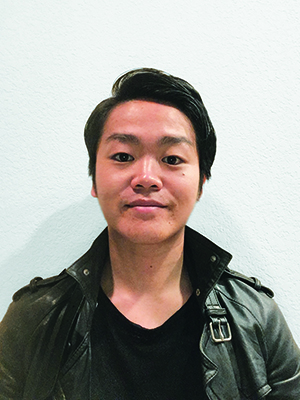
I’m currently engaged in concept design and interaction design in order to create next-generation products for Sony. One example is the Motion Sonic Project that was recently unveiled to the public. The objective was to design an embodied experience that augments the human body with sound. By redesigning the relationship between humans and sound, we aim to impact society by delivering a new sound experience.
Before joining KMD, I majored in computer science and learning engineering, but I began to wonder how I could design experiences that truly fascinate people. That’s why I decided to join KMD. At KMD, I worked on the Media Furniture Project that challenged us to redesign the furniture as media. Through the project, I acquired the design skills to realize the concept and experience through iterations of ethnography, ideation, and prototype. Also, I was able to hone my presentation skills to offer new value to the society. The experiences in KMD built my foundation for creation at the intersection of design and technology.
(This article was written in March 2017.)
Before joining KMD, I majored in computer science and learning engineering, but I began to wonder how I could design experiences that truly fascinate people. That’s why I decided to join KMD. At KMD, I worked on the Media Furniture Project that challenged us to redesign the furniture as media. Through the project, I acquired the design skills to realize the concept and experience through iterations of ethnography, ideation, and prototype. Also, I was able to hone my presentation skills to offer new value to the society. The experiences in KMD built my foundation for creation at the intersection of design and technology.
(This article was written in March 2017.)
TITLE Learning, sharing, and enjoying
Hiromi Uwabo
Japan
CAREER Enrolled in April 2013; Completed master‘s degree in March 2015
Hiromi Uwabo
Japan
CAREER Enrolled in April 2013; Completed master‘s degree in March 2015
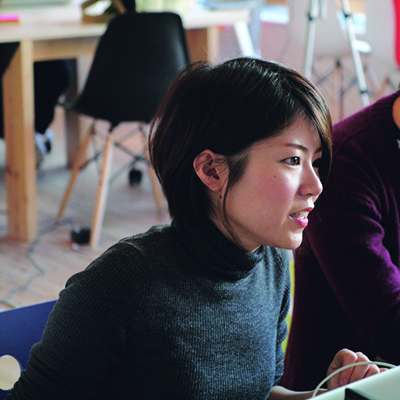
At KMD, I conducted research in the Global Education Project to create a place where people who want to teach can gather via IT and learn from each other. I still vividly remember feeling deeply moved by the extraordinary ties that transcended age and borders through the building of an online platform, and conducting multiple-base workshops, mostly in Asia, as well as the engagement between project members.
I am now teaching network-related training courses at a human resource development/training service company with the aspiration of having more people sense the potential and importance of network technologies that materialize diverse connections. Every time I teach a training course with students from differing backgrounds, I give a lot of thought to,“How can I communicate in a way that is fun and easy to understand?”I see grim or bored students at the start of the session morph into engaged learners after receiving flashes of inspiration or comprehension, and this motivates me to learn more. My goal is to use my "antenna" to keep learning, to share with others what I have learned, and to have everyone enjoy this together. Everything I learned and everyone I met at KMD all connect to who I am today.
(This article was written in March 2017.)
I am now teaching network-related training courses at a human resource development/training service company with the aspiration of having more people sense the potential and importance of network technologies that materialize diverse connections. Every time I teach a training course with students from differing backgrounds, I give a lot of thought to,“How can I communicate in a way that is fun and easy to understand?”I see grim or bored students at the start of the session morph into engaged learners after receiving flashes of inspiration or comprehension, and this motivates me to learn more. My goal is to use my "antenna" to keep learning, to share with others what I have learned, and to have everyone enjoy this together. Everything I learned and everyone I met at KMD all connect to who I am today.
(This article was written in March 2017.)
TITLE The largest reward is the connections
Ryunosuke Takahashi
Japan
CAREER Enrolled in April 2010; Completed master‘s degree in March 2012
Ryunosuke Takahashi
Japan
CAREER Enrolled in April 2010; Completed master‘s degree in March 2012
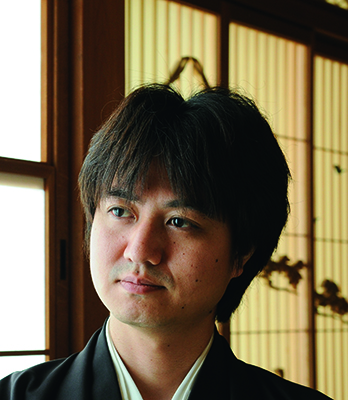
I am currently serving as director at the Contents innova- tion Program (CiP) Association. CiP’s mission is to develop a digital + content industry area in the Takeshiba district of Tokyo as part of its redevelopment, which is scheduled to be complete in 2020. As director, I am busy every day negotiating and holding discussions with CiP members and others in industry, government, and academia to bring the project to fruition.
At KMD, my research theme was communications and broadcasting policy. Because KMD has different tracks, such as design, technology, management, and policy, there is a diverse mix of people and research themes that would not ordinarily be grouped in the same program. The perceptions and ideas in this environment were very stimulating. I was also provided opportunities to engage with leading experts in various fields outside of KMD. I believe my largest reward from KMD was the connections I made through research activities. I rely on those connections for my work at CiP also. In the Takeshiba project, I’m making full use of what I gained at KMD. Please check out our achievement.
(This article was written in March 2017.)
At KMD, my research theme was communications and broadcasting policy. Because KMD has different tracks, such as design, technology, management, and policy, there is a diverse mix of people and research themes that would not ordinarily be grouped in the same program. The perceptions and ideas in this environment were very stimulating. I was also provided opportunities to engage with leading experts in various fields outside of KMD. I believe my largest reward from KMD was the connections I made through research activities. I rely on those connections for my work at CiP also. In the Takeshiba project, I’m making full use of what I gained at KMD. Please check out our achievement.
(This article was written in March 2017.)
TITLE The power of collaboration
Yuta Sugiura
Japan
CAREER Enrolled in April 2008; Completed master‘s degree in March 2010 / Enrolled in April 2010; Completed doctoral degree in March 2013
Yuta Sugiura
Japan
CAREER Enrolled in April 2008; Completed master‘s degree in March 2010 / Enrolled in April 2010; Completed doctoral degree in March 2013
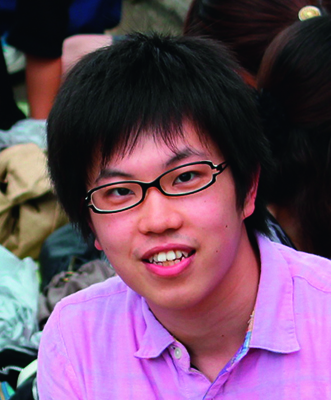
I left the program I was in to enter KMD in its year of establishment, and after obtaining a doctorate, I became a Project Assistant Professor. At KMD, I worked in the Reality Media Project to develop habitant behavior measurement systems and displays to fit into living environments. When I was studying engineering, I usually created things alone. But at KMD, I had more opportunities to develop things in collaboration with colleagues from different backgrounds, harnessing our various fields of expertise. This enabled me to experience creating things that were difficult to make alone. Also, I was averse to English conversation when I first entered KMD, but with so many international students in such a global environment, my English really improved.
I am now a research associate in the Department of Infor- mation and Computer Science at Keio University’s Faculty of Science and Technology. I research collaboration, which I realized was important when I was at KMD, and hope to support this with technology. I am now researching IoT and virtual reality with space that can be designed
through human collaboration.
(This article was written in March 2017.)
I am now a research associate in the Department of Infor- mation and Computer Science at Keio University’s Faculty of Science and Technology. I research collaboration, which I realized was important when I was at KMD, and hope to support this with technology. I am now researching IoT and virtual reality with space that can be designed
through human collaboration.
(This article was written in March 2017.)
TITLE Think while running
Miki Kunitomo
Japan
CAREER Enrolled in April 2013; Completed master‘s degree in March 2015
Miki Kunitomo
Japan
CAREER Enrolled in April 2013; Completed master‘s degree in March 2015
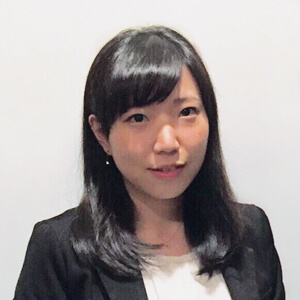
At KMD, I learned to discern what I must do by determining the essence of a matter, and also that I can try anything if I decide to. While there, I researched information device management systems using AR technologies as part of the Network Media Project. I had a degree in design before enrolling in KMD, and absolutely no knowledge of technology. But with the help of the many people I met through KMD, I was able to gain knowledge as my research progressed.
KMD offers opportunities to collaborate with many people. From this experience, I learned the importance of two things: to determine the essence of a matter and think about what I must do and what I am uniquely capable of, and then to simply take action based on this. I think this was possible because KMD provides an environment where we can think while running, even if we don’t understand everything. Now that I’ve graduated, this realization serves as the foundation of my work as a system engineer in the communications industry.
(This article was written in March 2017.)
KMD offers opportunities to collaborate with many people. From this experience, I learned the importance of two things: to determine the essence of a matter and think about what I must do and what I am uniquely capable of, and then to simply take action based on this. I think this was possible because KMD provides an environment where we can think while running, even if we don’t understand everything. Now that I’ve graduated, this realization serves as the foundation of my work as a system engineer in the communications industry.
(This article was written in March 2017.)
TITLE Guild of my daily work
Gustavo Dore Rodrigues
Brazil
CAREER Enrolled in September 2009; Completed master‘s degree in September 2011
Gustavo Dore Rodrigues
Brazil
CAREER Enrolled in September 2009; Completed master‘s degree in September 2011

Currently, I am the CEO of Motify (http://motify.work). As a pioneer of HR(Human Resources)technology, through e-learning based on Habit Design, we aim to create environments where people learn to be leaders and to help each other grow. I coordinate a team of 12 people around the globe, with staff in Japan, Brazil, Ukraine, Sweden, and the US, and the number of countries continues to increase. Running the company remotely has allowed me to leave Tokyo and live in Kamakura with my wife and our daughter.
Before coming to KMD, I worked in a marketing in Brazil. I saw KMD as a chance to change my career from humanities to a technology field. I grasped that chance with all my strength and had two of the busiest and most exciting years of my life. At KMD, I drew on my marketing background and joined the Event Production team. I then joined the OIKOS project with the Media Furniture team, under Professor Okude, where I learned the product/concept creation process that still guides me in my daily work.
In the eight years I have been in Japan, I have worked for Sony as a VAIO product planner and at Recruit as a UX designer for several services. The connections and the knowledge I gained at KMD are what made it possible. I was invited to Sony after meeting a few employees during my time at KMD. Later, when I was planning to change jobs, I also consulted with a KMD sempai and worked side by side with him for several months.
(This article was written in March 2017.)
Before coming to KMD, I worked in a marketing in Brazil. I saw KMD as a chance to change my career from humanities to a technology field. I grasped that chance with all my strength and had two of the busiest and most exciting years of my life. At KMD, I drew on my marketing background and joined the Event Production team. I then joined the OIKOS project with the Media Furniture team, under Professor Okude, where I learned the product/concept creation process that still guides me in my daily work.
In the eight years I have been in Japan, I have worked for Sony as a VAIO product planner and at Recruit as a UX designer for several services. The connections and the knowledge I gained at KMD are what made it possible. I was invited to Sony after meeting a few employees during my time at KMD. Later, when I was planning to change jobs, I also consulted with a KMD sempai and worked side by side with him for several months.
(This article was written in March 2017.)
TITLE Continuing to learn and then continually putting that learning into practice
Shino Kinoshita
Japan
CAREER Enrolled in April 2013; Completed master’s degree in March 2015
Shino Kinoshita
Japan
CAREER Enrolled in April 2013; Completed master’s degree in March 2015

I am currently involved in the design and administration of a business school at Showa Women's University that is specifically for working women as part of a female empowerment initiative. I have also participated in a number of paid and unpaid organizations and projects in which I have helped to design new human resources development systems, new educational approaches for young people, and intergenerational networks for women. The common focus in all of these projects has been "supporting people and organizations that want to take on new challenges." I am often involved in projects in different domains that run in parallel, which provide me with a bird's eye view of where the general issues lie. I truly enjoy my current style of work and the opportunity it gives me to think seriously about how I can contribute.
Before joining KMD, I was involved in HR development consulting for large companies. At KMD, I was able to learn with people of different ages, nationalities, and genders, and was inspired by professors who were, themselves, practitioners. It broadened my horizons dramatically beyond what I had done before; it taught me that it is vital to forge links between different domains and how to act and learn in ways that have an impact on this new era. KMD taught me my current approach to life and work. The pace of change in today's environment is only accelerating. I am in my late 40s, and one of the things I learned at KMD is that, regardless of age, the key to survival in the 21st century is continuing to learn and then continually putting that learning into practice.
(This article was written in March 2016.)
Before joining KMD, I was involved in HR development consulting for large companies. At KMD, I was able to learn with people of different ages, nationalities, and genders, and was inspired by professors who were, themselves, practitioners. It broadened my horizons dramatically beyond what I had done before; it taught me that it is vital to forge links between different domains and how to act and learn in ways that have an impact on this new era. KMD taught me my current approach to life and work. The pace of change in today's environment is only accelerating. I am in my late 40s, and one of the things I learned at KMD is that, regardless of age, the key to survival in the 21st century is continuing to learn and then continually putting that learning into practice.
(This article was written in March 2016.)
TITLE Creating what I need
Yumiko Murai
Japan
CAREER Enrolled in April 2008; Completed master’s degree in March 2010
Yumiko Murai
Japan
CAREER Enrolled in April 2008; Completed master’s degree in March 2010

At KMD, I was a member of the "Global Education Project" in which we worked on the design and administration of a variety of online courses and events. In my master's research, I helped to create a joint performance environment for students studying performing arts in remote locations. Today, I teach online classes about distance education at Columbia University (USA), continue my research in remote communication and learning environments, while staying involved in the administration of online classes in a number of different fields. My doctoral dissertation on the development of community perceptions and self-motivation among online learners was accepted, and in May 2015 I was awarded a EdD. There has been increased online learning opportunities in recent years, but learning from a remote location can often be a lonely and difficult experience. My work is to provide the kinds of activities and communications environments that support these learners. As a member of the first class at KMD, I gained first-hand experience developing our own learning and research environments from scratch with the professors and fellow students with diverse backgrounds. This approach of "Create what you need" has been a valuable asset, even after moving to a research institution that takes a very different approach than that of KMD.
(This article was written in March 2016.)
(This article was written in March 2016.)
TITLE The KMD ethos
Tomomi Ota
Japan
CAREER Enrolled in April 2009; Completed master’s degree in March 2011
Tomomi Ota
Japan
CAREER Enrolled in April 2009; Completed master’s degree in March 2011
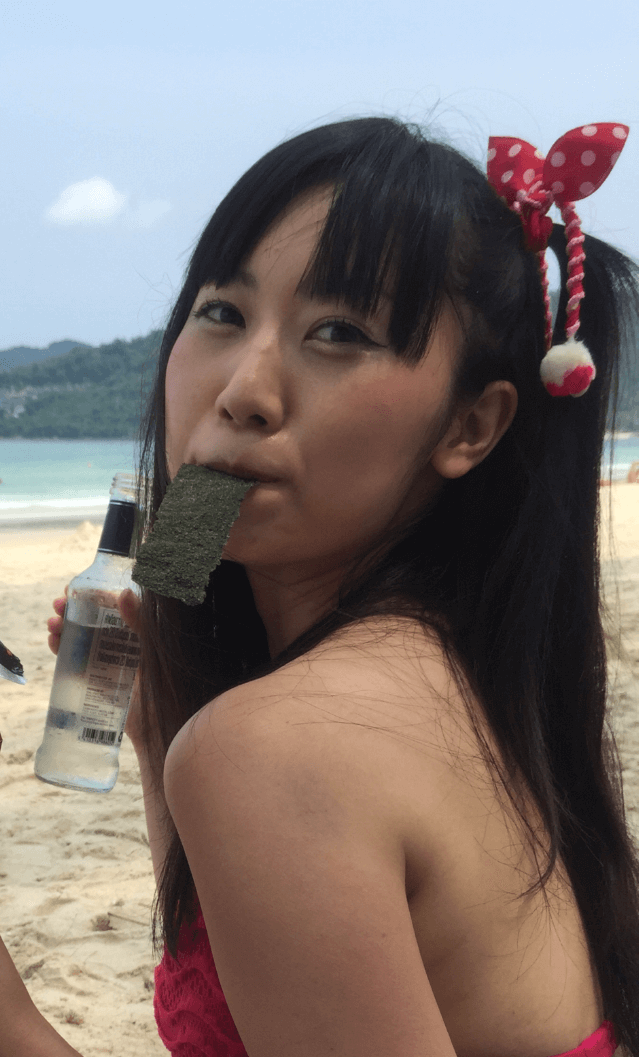
Currently, I work from morning to evening as a reporter for a company called ITmedia, and then from evening to morning on my own studying the "Micromouse" and working with the "Pepper" robot. You can see some of my work with Pepper on a YouTube channel called "pepper days." I've developed programs that caused the robot to mix natto (fermented beans), sing, dance, and even take a ride with me on the shinkansen. I recently had the opportunity to speak to the "Japan SF Convention," a gathering for science-fiction fans around Japan, at "PRESENTING JAPAN," a public-private forum to communicate Japanese culture and technology to the world, and at other events about living with a robot as a partner.
In Japan, there is an adage: "What you learn when you are young stays with you for life." I think that we receive a large part of that, a unique spirit, during our time at KMD. All of my current activities can be traced back to the KMD ethos: being straightforward and honest, understanding my core competencies, and understanding that social design and policy are always a part of technology, the part that we ourselves create. When I joined KMD, I gained many fathers. I also gained friends around the world.
(This article was written in March 2016.)
In Japan, there is an adage: "What you learn when you are young stays with you for life." I think that we receive a large part of that, a unique spirit, during our time at KMD. All of my current activities can be traced back to the KMD ethos: being straightforward and honest, understanding my core competencies, and understanding that social design and policy are always a part of technology, the part that we ourselves create. When I joined KMD, I gained many fathers. I also gained friends around the world.
(This article was written in March 2016.)
TITLE Precious experience that guided me to a start up
Nahuel Salcedo
Argentina
CAREER Enrolled in September 2013; Completed master’s degree in September 2015
Nahuel Salcedo
Argentina
CAREER Enrolled in September 2013; Completed master’s degree in September 2015

I came to KMD with the goal of exploring and learning about the future of digital signage systems. After Joining the Global Computing project, I participated on CITIUS, a multimedia signage platform capable of providing information to public buses, using environmental information in real time.
Being part of CITIUS provided me with invaluable opportunity to get first-hand experience working together with Mitsubishi Heavy Industries and with professors and researchers at the National University of Singapore.
In Argentina, I worked at several advertising agencies as a content creator. Before finishing KMD, and with the full support of the faculty, I decided to start my own business in Japan to provide audiovisual content for TV, internet and digital signage platforms.A very small team of graphic designers located both in Japan and Argentina helps me turn those concepts into reality.
During this year we have provided content for J Sports, American Express, Sky Perfect, Electronic Arts, and Nippon Baseball League among others. The content we create can be seen throughout Tokyo on giant screens in Shibuya and Shinjuku, inside train stations such as Ikebukuro, on network and cable television, and in stadiums.
(This article was written in March 2016.)
Being part of CITIUS provided me with invaluable opportunity to get first-hand experience working together with Mitsubishi Heavy Industries and with professors and researchers at the National University of Singapore.
In Argentina, I worked at several advertising agencies as a content creator. Before finishing KMD, and with the full support of the faculty, I decided to start my own business in Japan to provide audiovisual content for TV, internet and digital signage platforms.A very small team of graphic designers located both in Japan and Argentina helps me turn those concepts into reality.
During this year we have provided content for J Sports, American Express, Sky Perfect, Electronic Arts, and Nippon Baseball League among others. The content we create can be seen throughout Tokyo on giant screens in Shibuya and Shinjuku, inside train stations such as Ikebukuro, on network and cable television, and in stadiums.
(This article was written in March 2016.)
TITLE Thinking with depth, acting with strength
Yuki Shintani
Japan
CAREER Enrolled in April 2011; Completed master’s degree in March 2013
Yuki Shintani
Japan
CAREER Enrolled in April 2011; Completed master’s degree in March 2013
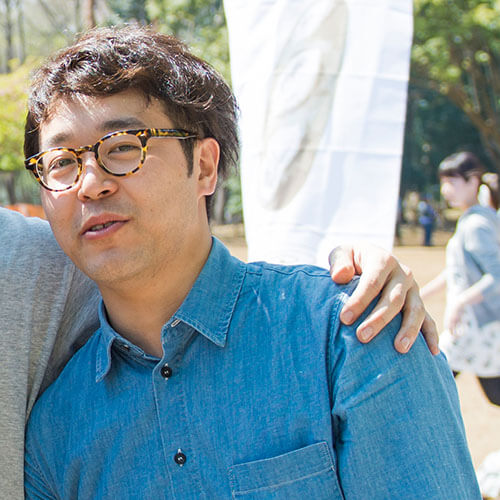
I work for an advertising agency. Until I was reassigned in August 2015 to work in strategic planning for a tire manufacturer, my primary job was creating and producing digital content for an alcoholic beverages maker. In digital content creation, the goal is to use the web and social network services to trigger discussion of a product and to convince people to feel favorably towards it. In strategic planning, you investigate what the essential attractions of the product are and how they can be communicated, formulating hypotheses and reflecting them in your strategy.
At KMD, I participated on Professor Naohito Okude’s OIKOS, and launched a new project called "Music in Community" to study the relationship between music and local communities. This resulted in Keio University creating a new credited class on music practice, so I did have some impact on society. During the project, I had an opportunity to think deeply about what the world enjoys, needs, and wants to experience, and I gained my own experience in how to push a project forward strongly enough that my plan becomes reality. My KMD experiences have had a significant impact on my current work.
(This article was written in March 2016.)
At KMD, I participated on Professor Naohito Okude’s OIKOS, and launched a new project called "Music in Community" to study the relationship between music and local communities. This resulted in Keio University creating a new credited class on music practice, so I did have some impact on society. During the project, I had an opportunity to think deeply about what the world enjoys, needs, and wants to experience, and I gained my own experience in how to push a project forward strongly enough that my plan becomes reality. My KMD experiences have had a significant impact on my current work.
(This article was written in March 2016.)
TITLE Tackling problems from a wide range of perspectives and disciplines
Masaharu Hirose
Japan
CAREER Enrolled in April 2013; Completed master’s degree in March 2015
Masaharu Hirose
Japan
CAREER Enrolled in April 2013; Completed master’s degree in March 2015
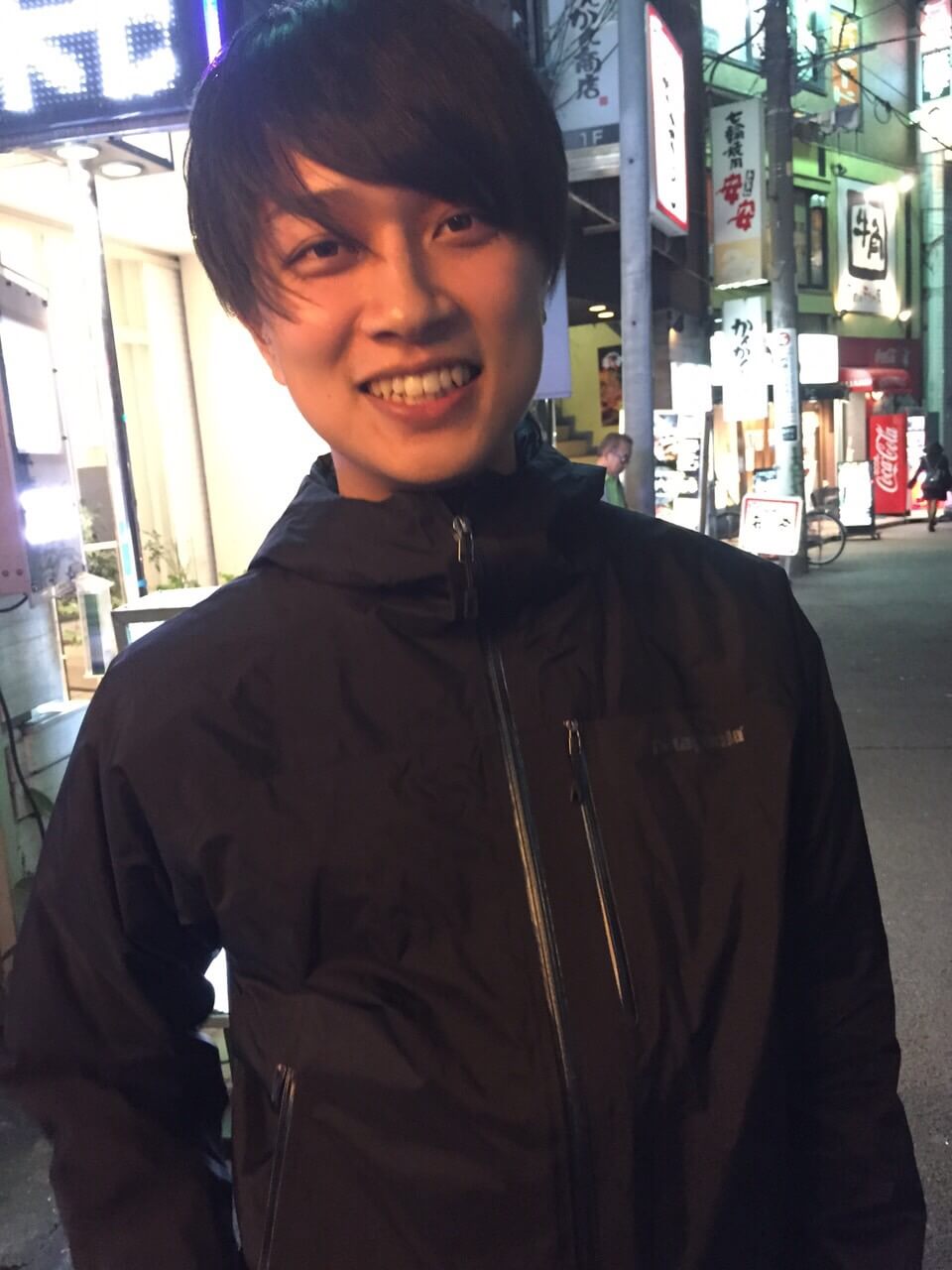
Prior to joining KMD, I graduated from the Keio University Faculty of Science and Technology with a bachelor’s degree in applied physics. As my research progressed, I began to realize that engineering problem-solving requires a multi-disciplinary approach, not just a single area of expertise. This realization led to my choice of KMD as I could study technology, design, management, and policy in well-balanced manner.
At KMD, I researched interaction design and virtual reality as a member of the "Reality Media Project". I learned about both hardware and software, and designed and verified prototypes and systems as part of my studies. This choice required courage because I was jumping into a master’s course in a completely different field from that of my undergraduate study, but my research at KMD proved to be both stimulating and fruitful. Today, I work for a semiconductor company engineering Internet of Things (IoT) systems and embedded systems. Problem-solving in systems development is never straightforward, but the approach that I learned at KMD, to tackle problems from a wide range of perspectives and disciplines, is hugely beneficial to me in my current work.
(This article was written in March 2016.)
At KMD, I researched interaction design and virtual reality as a member of the "Reality Media Project". I learned about both hardware and software, and designed and verified prototypes and systems as part of my studies. This choice required courage because I was jumping into a master’s course in a completely different field from that of my undergraduate study, but my research at KMD proved to be both stimulating and fruitful. Today, I work for a semiconductor company engineering Internet of Things (IoT) systems and embedded systems. Problem-solving in systems development is never straightforward, but the approach that I learned at KMD, to tackle problems from a wide range of perspectives and disciplines, is hugely beneficial to me in my current work.
(This article was written in March 2016.)
TITLE KMD is the best place to do something creative, innovative, and fun.
Anusha Withanage
Sri Lanka
CAREER Enrolled in September 2008; Completed master’s degree in September 2010 / Enrolled in September 2010; withdrawal from the doctoral program with the completion of course requirements in September 2013, and conferred the doctoral degree in Media Design in February 2014
Anusha Withanage
Sri Lanka
CAREER Enrolled in September 2008; Completed master’s degree in September 2010 / Enrolled in September 2010; withdrawal from the doctoral program with the completion of course requirements in September 2013, and conferred the doctoral degree in Media Design in February 2014
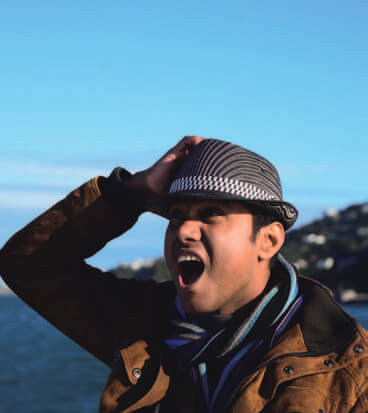
Currently, I am a post-doctoral research fellow at the SUTD-MIT International Design Center at Singapore University of Technology and Design (SUTD). My research involved Human-Computer Interaction (HCI). My main research focus was in multi-modal interfaces with a focus on haptics.
I worked on the Reality Media Project at KMD. I did theoretical research to understand the human perception of space with multi-modal information, and I also collaborated with companies, such as Toyota IT, to implement aspects of the research in the real world. What I liked most about KMD was its diversity; of expertise, of cultures, and of interests. If you have an idea, you’ll find at least one expert on it at KMD who will passionately collaborate with you. The freedom to innovate at KMD is impressive. Unlike most universities, freedom is embedded in KMD as a core value. If you are doing something creative, innovative, and fun, KMD is the best place to be.
My goal is to contribute to the development process of the next big shift how humans perceive and interact with computational machines.
(This article was written in March 2015.)
I worked on the Reality Media Project at KMD. I did theoretical research to understand the human perception of space with multi-modal information, and I also collaborated with companies, such as Toyota IT, to implement aspects of the research in the real world. What I liked most about KMD was its diversity; of expertise, of cultures, and of interests. If you have an idea, you’ll find at least one expert on it at KMD who will passionately collaborate with you. The freedom to innovate at KMD is impressive. Unlike most universities, freedom is embedded in KMD as a core value. If you are doing something creative, innovative, and fun, KMD is the best place to be.
My goal is to contribute to the development process of the next big shift how humans perceive and interact with computational machines.
(This article was written in March 2015.)
TITLE I saw a vast improvement in my expression skills at KMD.
Masato Takahashi
Japan
CAREER Enrolled in April 2009; withdrawal from the doctoral program with the completion of course requirements in March 2012
Masato Takahashi
Japan
CAREER Enrolled in April 2009; withdrawal from the doctoral program with the completion of course requirements in March 2012
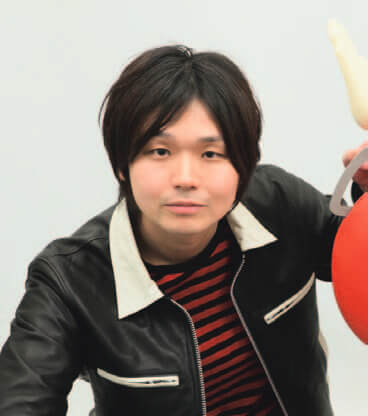
In the KMD Doctoral Program, I joined the Reality Media Project and studied entertainment computing. With the expert advice of Professor Masahiko Inami and other researchers, I was able to build numerous implementations, and through that process saw a vast improvement in my expression skills. Doing a joint project with excellent students overseas was also a valuable experience.
I currently work as a creator specializing in entertainment under the name “Bye Bye World.” I’m involved in a wide range of products and projects, including toys, installations and robots. In June 2014, I was appointed chief creator at Yoshimoto Robotics Laboratory, where I oversee and develop the official entertainment app for “Pepper,” SoftBank’s latest robot. I look forward to further explorations in entertainment and technology.
(This article was written in March 2015.)
I currently work as a creator specializing in entertainment under the name “Bye Bye World.” I’m involved in a wide range of products and projects, including toys, installations and robots. In June 2014, I was appointed chief creator at Yoshimoto Robotics Laboratory, where I oversee and develop the official entertainment app for “Pepper,” SoftBank’s latest robot. I look forward to further explorations in entertainment and technology.
(This article was written in March 2015.)
TITLE Every thought and idea has a chance to be heard and to be realized at KMD.
Chin Ching Chang
Taiwan
CAREER CAREER Enrolled in April 2010; Completed master’s degree in March 2012
Chin Ching Chang
Taiwan
CAREER CAREER Enrolled in April 2010; Completed master’s degree in March 2012

At KMD, I learned about video transmission in my work on the “Global Education” project. Through the process of observing and supporting the online classroom, which was a part of the project, I created my own idea for a research project. This research project motivated me to obtain additional web design skills.
To create something really takes time, but the best thing about KMD is that every thought and idea has a chance to be heard and to be realized. KMD is full of kind and supportive people who enjoy discussing your ideas and seek ways to help you expand on them. KMD’s focus on “learning with an open heart and continuing to take on challenges” taught me how to discover what matters to people. I’ve incorporated this philosophy in my daily work as an UI/UX designer at a surveillance software company and in my long-term goals.
(This article was written in March 2015.)
To create something really takes time, but the best thing about KMD is that every thought and idea has a chance to be heard and to be realized. KMD is full of kind and supportive people who enjoy discussing your ideas and seek ways to help you expand on them. KMD’s focus on “learning with an open heart and continuing to take on challenges” taught me how to discover what matters to people. I’ve incorporated this philosophy in my daily work as an UI/UX designer at a surveillance software company and in my long-term goals.
(This article was written in March 2015.)
TITLE What qualities do things that are loved by large numbers of people possess?
Keigo Hatayama
Japan
CAREER Enrolled in April 2011; Completed master’s degree in March 2013
Keigo Hatayama
Japan
CAREER Enrolled in April 2011; Completed master’s degree in March 2013
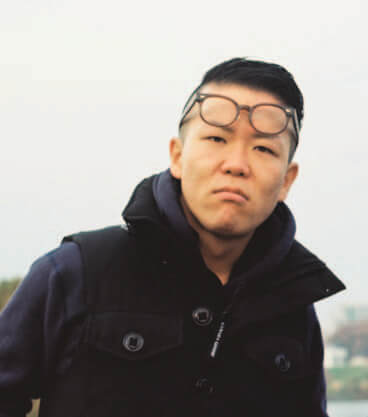
When I was at KMD, I worked with Professor Hiroyuki Kishi as a member of “Creative Industry” project to study local brands and was involved in a joint project in Onagawa, a town in Miyagi. Throughout the project, we continued to ask ourselves what was truly necessary for the local community as we planned events, conducted promotions, and established a community development company. This ultimately led to a successful event in Hibiya Park, Tokyo that drew more than 200,000 visitors. It was a very valuable experience to be involved in a project in which people came from different generations and backgrounds, and were also separated by physical distance.
I now work at an internet company as a planner. While at KMD, I was involved in a project for local brands that tried to answer the question, “What qualities do things that are loved by large numbers of people possess?” My current work may seem a bit removed from regional development, but the research I did and the projects I was involved in at KMD have given me a basis from which to work today as I think about how to develop optimum services that large numbers of customers will use. I look forward to continuing to create products and services that are used and loved by lots of people.
(This article was written in March 2015.)
I now work at an internet company as a planner. While at KMD, I was involved in a project for local brands that tried to answer the question, “What qualities do things that are loved by large numbers of people possess?” My current work may seem a bit removed from regional development, but the research I did and the projects I was involved in at KMD have given me a basis from which to work today as I think about how to develop optimum services that large numbers of customers will use. I look forward to continuing to create products and services that are used and loved by lots of people.
(This article was written in March 2015.)
TITLE To continue to explore new frontiers
Toru Miyamoto
Japan
CAREER Enrolled in April 2011; Completed master’s degree in March 2013
Toru Miyamoto
Japan
CAREER Enrolled in April 2011; Completed master’s degree in March 2013

At KMD I joined a project called “OIKOS” where I studied how to design services that would help retail store staff encourage customer to make purchases. In our study, we began by analyzing behavior, brainstorming ideas, formulating the concepts, and building prototypes. Then we took our prototypes and used them in actual retail stores to verify whether they worked. We repeated this process over and over again. It was a good experience designing something from scratch.
KMD is a very global environment that attracts people with all sorts of backgrounds. You have the opportunity to work with professors and students who are interested and active in a wide range of fields. In the Project Room, I spoke and consulted with lots of different people, which was a good experience for me.
I’m now working as a creator at an internet company where my job every day is to think about designs and interactions that will make users want to use our services more. In the future, I want to use my experiences at KMD to continue to explore new frontiers.
(This article was written in March 2015.)
KMD is a very global environment that attracts people with all sorts of backgrounds. You have the opportunity to work with professors and students who are interested and active in a wide range of fields. In the Project Room, I spoke and consulted with lots of different people, which was a good experience for me.
I’m now working as a creator at an internet company where my job every day is to think about designs and interactions that will make users want to use our services more. In the future, I want to use my experiences at KMD to continue to explore new frontiers.
(This article was written in March 2015.)
TITLE I learned by using my body and senses at KMD.
Izumi Yagi
Japan
CAREER Enrolled in April 2009; Completed master’s degree in March 2011
Izumi Yagi
Japan
CAREER Enrolled in April 2009; Completed master’s degree in March 2011
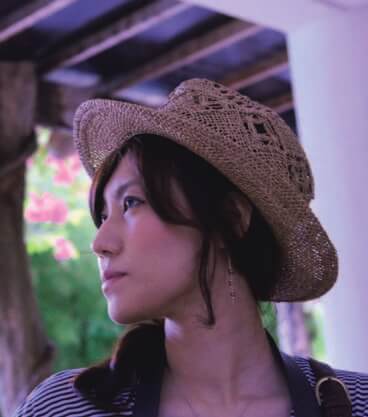
When I was at KMD, I joined a sub-project called “Media Furniture” in the “OIKOS” project, which aimed at designing user experiences involving furniture and people’s living environments. At KMD, learning was very much a process of trial and error, in which I learned by using my body and senses, rather than a mere intellectual process. Our fieldwork involved visiting ordinary homes to observe the occupants’ everyday life and creating numerous prototypes to build up a concept. It was a repeated process of reasoning and action. One of KMD’s strengths is that students of various nationalities (such as China, Sri Lanka, Brazil, and Lebanon) and backgrounds collaborated continually. With this mix of talent and fresh ideas, we achieved more together than we ever could have achieved on our own and we felt a greater sense of accomplishment too.
I now work in Taiwan as a planner with engineers and designers at an electrical manufacturer. I’d like to continue to create user experiences that will enrich people’s everyday lives. I can say that what I learned at KMD has been essential to starting my career.
(This article was written in March 2015.)
I now work in Taiwan as a planner with engineers and designers at an electrical manufacturer. I’d like to continue to create user experiences that will enrich people’s everyday lives. I can say that what I learned at KMD has been essential to starting my career.
(This article was written in March 2015.)
TITLE To pursue a global career
Moe Inaki
Japan
CAREER Enrolled in April 2011; Completed master’s degree in March 2014
Moe Inaki
Japan
CAREER Enrolled in April 2011; Completed master’s degree in March 2014

My research focus at KMD was film studies and user-generated content as part of the “Power of Motion Pictures” (now being said “CREATO!”) team. The challenging studies at KMD and CEMS provided numerous networking opportunities with students, professors, guest lecturers, and others I met there. I was inspired and influenced by the different perspectives, views, and skills of such a diverse group of people. These experiences and encounters emboldened me to pursue the career I had always dreamed of.
I currently work at Google Japan, as a community specialist on the YouTube team. I mainly manage events, community building and online communication. With a deep interest in media and technology since high school, it was always my dream to work in these fields. The phenomenal power and speed of technology has had, and continues to have, such a positive impact on my life. I will continually improve my skills and broaden my experience as I pursue a global career.
(This article was written in March 2015.)
I currently work at Google Japan, as a community specialist on the YouTube team. I mainly manage events, community building and online communication. With a deep interest in media and technology since high school, it was always my dream to work in these fields. The phenomenal power and speed of technology has had, and continues to have, such a positive impact on my life. I will continually improve my skills and broaden my experience as I pursue a global career.
(This article was written in March 2015.)
TITLE The value of design beyond formative art
Ryu Yamamoto
Japan
CAREER Enrolled in April 2010; Completed master’s degree in March 2012
Ryu Yamamoto
Japan
CAREER Enrolled in April 2010; Completed master’s degree in March 2012

I studied architectural design as an undergraduate, but my grasp of the act of design was entirely intuitive and subjective. At KMD, I learned not only about giving form to objects, but also about creating experiences that users can gain through the objects. I was involved in a project on ‶media furniture,” where we used research and ideas about actual living environments to carefully formulate concepts and turn them into furniture prototypes. We then asked users to make use of these prototypes in their day-to-day lives, and verified the results. This process brought me back to the core questions of design: why is it that we build, and what exactly is design anyway? I currently work as a product designer for Fabrica, the research center of the Italian company, Benetton. I have been able to show my work at Milano Salone and other international exhibits. The training I received at KMD provided me with a foundation for my design activities. I am now hard at work in Europe, and my activities are based on the understanding I gained at KMD of value of design in aspects that cannot be reached just with formative art.
(This article was written in March 2014.)
(This article was written in March 2014.)
TITLE Everything was completely new, that was especially why each day was fresh
Aya Okabe
Japan
CAREER Enrolled in April 2011; Completed master’s degree in March 2013
Aya Okabe
Japan
CAREER Enrolled in April 2011; Completed master’s degree in March 2013

At KMD, I was involved in a project called “OIKOS” where I researched the design of a service that allows people to easily enjoy their family photographs. I was in the Faculty of Economics as an undergraduate, and majored in international trade and development economics. At KMD, my previous research and experience was not an issue. I was allowed to take on completely new fields in which I had no prior experience. It was very interesting for me to interact with faculty who were themselves active in a wide variety of fields and willing to cross over the walls between laboratories and research areas to provide guidance. It was also very fun to remain on campus late into the night consulting and laughing with members of my project and other projects too as we did our research. (It was tough at the time though…) Today, I work as a consultant. I don’t know if I’m particularly suited for it or where exactly the satisfactions lie, but each day is something new and fresh, just like it was when I was at KMD. I encounter people from many different industries and endeavors, and there is always something that I don’t understand. I am still not sure where the future will take me, but I do know that I want to continue to advance and always search for the opportunity to take on new challenges.
(This article was written in March 2014.)
(This article was written in March 2014.)
TITLE Experience is everything
Yuta Takeuchi
Japan
CAREER Enrolled in April 2011; Completed master’s degree in March 2013
Yuta Takeuchi
Japan
CAREER Enrolled in April 2011; Completed master’s degree in March 2013

I was in an information engineering laboratory as an undergraduate, and I’ve always enjoyed using my hands to build things. At KMD, I was part of the “Reality Media” project, where we brought engineering approaches to manufacturing. At first, I just thought that we would have a lot of fun building things, but the Reality Media approach gave me fresh, new perspectives about working back from human perceptions to design the experience that you want to provide and incorporate it into a system. My research focused particularly on virtual production systems in which people could copy and paste real-world tactile sensations to easily allow others to have the same experience. Our slogan in the project was “Demo or Die,” because it was virtually impossible to communicate what our research was aiming for without people actually experiencing it. Those words were inspirational, and we created many, many prototypes. Today, I work as a technical director and planner at an advertising agency. I still value the attitude that I learned at KMD that “experience is everything”.
(This article was written in March 2014.)
(This article was written in March 2014.)
TITLE Combining the social with a personal sense of mission
Kensuke Fujishiro
Japan
CAREER Enrolled April 2011; Completed master’s degree in March 2013
Kensuke Fujishiro
Japan
CAREER Enrolled April 2011; Completed master’s degree in March 2013
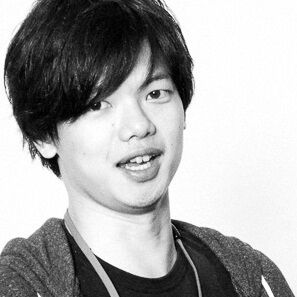
As an undergraduate, I majored in architecture, but at KMD I studied service design in a project called “Social Entertainment/Bouquet.” KMD is an environment of great diversity in terms of age, fields of endeavor, and nationalities. It is also a place where you can gain a wide range of experiences. The most vivid impression that KMD made on me was the chance I had in the GID Program to experience startup culture in San Francisco and global careers in London. While still a student, I established a design office called “prsm”, and that is what I do today. I use the principles of service design to design “spaces” before the buildings are put up. I am also involved in Global Shapers Community and TEDxTokyo, and I work as a KMD researcher. In the future, I want to take on more global projects, investigating what design can accomplish as I combine the social with my own personal sense of mission.
(This article was written in March 2014.)
(This article was written in March 2014.)
TITLE The possibility to acquire new skills and apply them in practice
Jan Rod
Czech Republic
CAREER Enrolled in April 2009; Completed doctoral degree in February 2013
Jan Rod
Czech Republic
CAREER Enrolled in April 2009; Completed doctoral degree in February 2013
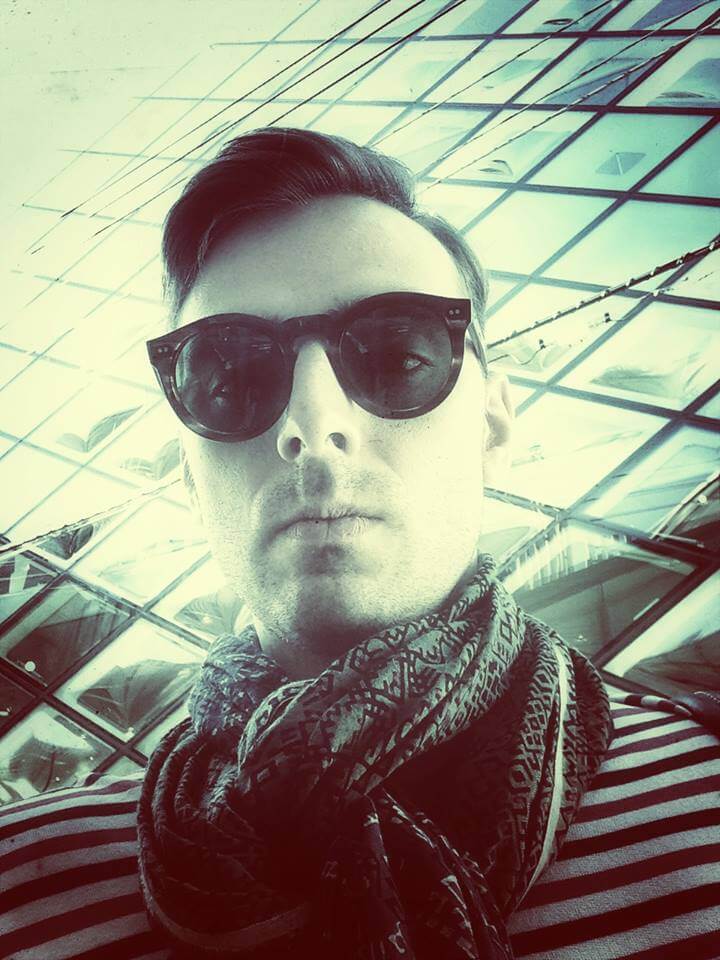
I was majoring in Philosophy and Media as an undergraduate. In KMD, my field of research was Urban Computing, and I was involved in a project called ‘Navinko’. What I liked about KMD was great group of people that come from all around the world with strong interest in Japanese culture and great staff to support the students in realizing their dreams. The most impressive point at KMD is the possibility to acquire new skills and apply them in practice. Currently I am working as an interaction design researcher to pursue innovation in interaction design of the highest quality in my future.
(This article was written in March 2014.)
(This article was written in March 2014.)
TITLE A fulfilling environment
Annisa Mahdia Pratiwi
Indonesia
CAREER Enrolled in September 2010; Completed master’s degree in September 2012
Annisa Mahdia Pratiwi
Indonesia
CAREER Enrolled in September 2010; Completed master’s degree in September 2012

In KMD, my research was to create a collaborative documentary film production supported by an advanced technology in the “Growing Documentary” Platform. The project was under the PMP Project and I successfully collaborated with other institutes around the world. My favorite memory of KMD was how all the professors were so helpful and so keen to discuss almost anything. Besides, the facilities impressed me a lot, from the technology to places to hang out, and all were supported! I currently work as a center manager at a school for autism and special children in Bogor City ‒ Indonesia, and freelance as a TV program producer and as a graphic designer. In the future, I wish to finish my documentary project for autism awareness.
(This article was written in March 2014.)
(This article was written in March 2014.)
TITLE Maintaining a strong will for creation
Fabien Delmotte
France
CAREER Enrolled in April 2009; Completed master’s degree in March 2011
Fabien Delmotte
France
CAREER Enrolled in April 2009; Completed master’s degree in March 2011
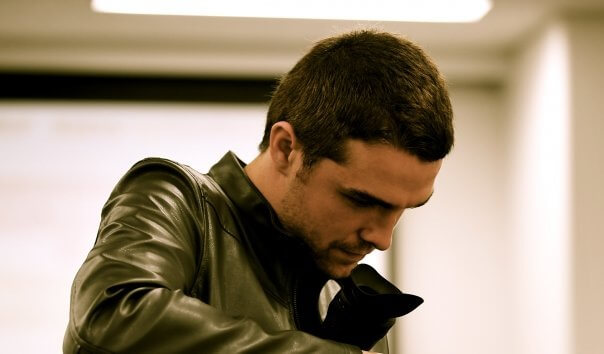
I am currently working for an ad agency as an art director. As an undergraduate, my major was international business. At KMD, I conducted research on 4K digital cinemas; I enjoyed collaborating towards a common goal with people from various backgrounds and experiences. The work I achieved at KMD wasn't significantly impressive, but I strongly believe that it was a necessary step toward what I am working on today. I don't know what my future holds, but I do know I dearly hold the will to create. I will remain committed to creative activities to convey ideas and emotions to others.
(This article was written in March 2014.)
(This article was written in March 2014.)
TITLE Creating services and products I believe in
Daisuke Ishikawa
Japan
CAREER Enrolled in April 2009; Completed master’s degree in March 2011
Daisuke Ishikawa
Japan
CAREER Enrolled in April 2009; Completed master’s degree in March 2011
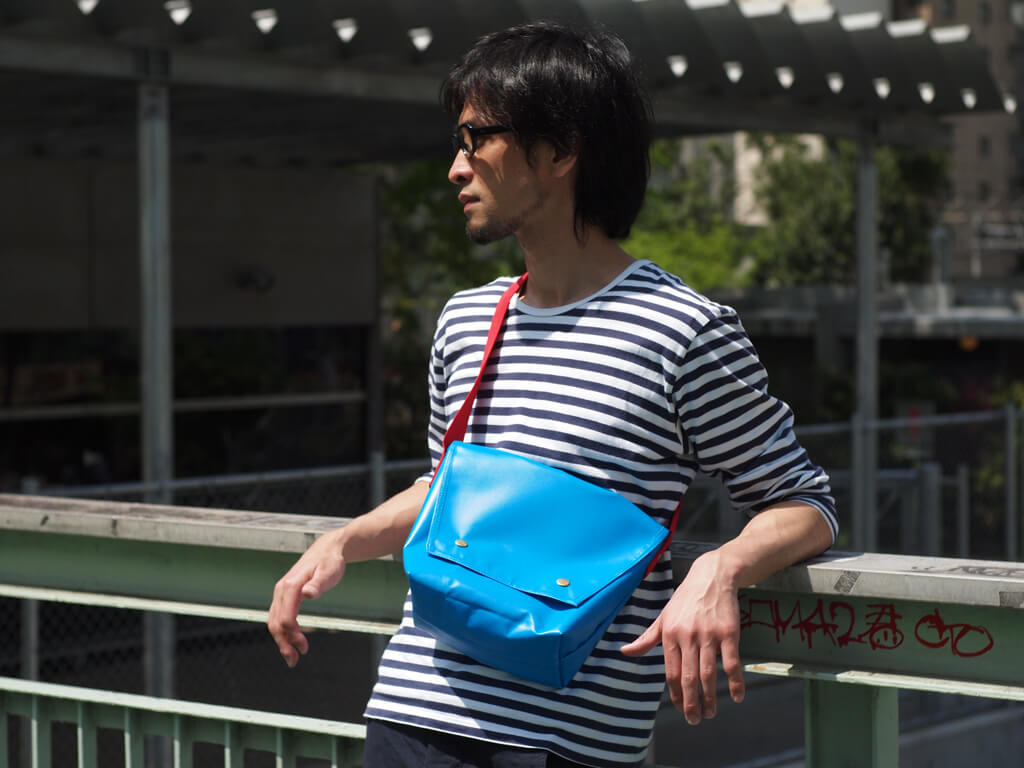
My individual style has remained consistent since I entered KMD. I believe in creating things I personally believe are wonderful, and yet what I create should be loved by my friends and accepted universally.
For my project, I made LED lighting that changes the ambience of human habitats in everyday life. My interest was motivated by the contrast between special and ordinary moments, a contrast that has been part of Japanese tradition from ancient times. Considering the traditional contrast, I focused on how lighting affects our lives in contemporary Japanese houses. For example, we should be able to change the lighting as well as the table setting when we have a dinner party. This goes far beyond pressing a button to light a room. In the same sense as changing a table cloth, dishes and preparing foods and drinks for guests, I invented lampshades that change lighting. When changing lampshades, tone and lightness/darkness of the light also change accordingly.
In a later project, KMD classmates and I set up a new brand called ‘semi (cicada)’ under the concept of extending the lifetime of designed products. We have designed and sold products such as bags and gadget cases made from old department store banners and ads. This project is still ongoing after graduating from KMD, fulfilling our challenge to set up successful businesses.
(This article was written in March 2013.)
For my project, I made LED lighting that changes the ambience of human habitats in everyday life. My interest was motivated by the contrast between special and ordinary moments, a contrast that has been part of Japanese tradition from ancient times. Considering the traditional contrast, I focused on how lighting affects our lives in contemporary Japanese houses. For example, we should be able to change the lighting as well as the table setting when we have a dinner party. This goes far beyond pressing a button to light a room. In the same sense as changing a table cloth, dishes and preparing foods and drinks for guests, I invented lampshades that change lighting. When changing lampshades, tone and lightness/darkness of the light also change accordingly.
In a later project, KMD classmates and I set up a new brand called ‘semi (cicada)’ under the concept of extending the lifetime of designed products. We have designed and sold products such as bags and gadget cases made from old department store banners and ads. This project is still ongoing after graduating from KMD, fulfilling our challenge to set up successful businesses.
(This article was written in March 2013.)
TITLE Realizing projects that impact people’s lives
Wei Liang Lin
Singapore
CAREER Enrolled in September 2009; Completed master’s degree in September 2011
Wei Liang Lin
Singapore
CAREER Enrolled in September 2009; Completed master’s degree in September 2011
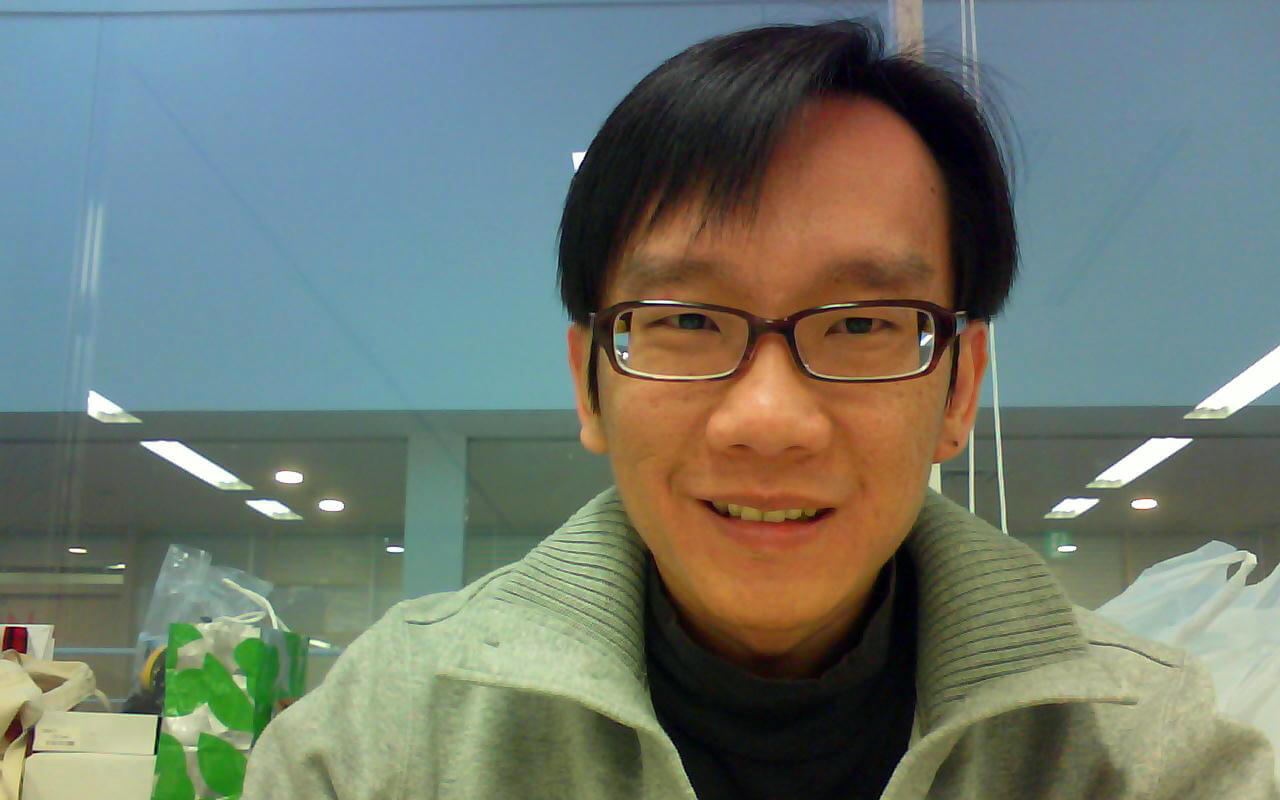
I studied industrial design and worked for a design consultancy for several years, however, I wanted to do more than just sketching and making mock-ups. I wished to create innovative products. Whilst I was thinking of setting up my own business, I found KMD and decided to go back to study.
At KMD, I joined the Reality Media Project run by Prof. Masahiko Inami. I did a project called ‘Phantom Runner’ to record a runner’s performance and let one’s past “phantom” run alongside the runner to track improvement. I also researched sensors and human computer interaction designs.
Now I work for a company called T.Ware and am involved with design research and development. I developed a product named ‘T. Jacket’ for children with autism and other sensory needs. Right now I’m developing other wearable haptic products for new markets.
(This article was written in March 2013.)
At KMD, I joined the Reality Media Project run by Prof. Masahiko Inami. I did a project called ‘Phantom Runner’ to record a runner’s performance and let one’s past “phantom” run alongside the runner to track improvement. I also researched sensors and human computer interaction designs.
Now I work for a company called T.Ware and am involved with design research and development. I developed a product named ‘T. Jacket’ for children with autism and other sensory needs. Right now I’m developing other wearable haptic products for new markets.
(This article was written in March 2013.)
TITLE Ultimate goal of my research
Tomonari Nomura
Japan
CAREER Enrolled in April 2010; Completed master’s degree in March 2012
Tomonari Nomura
Japan
CAREER Enrolled in April 2010; Completed master’s degree in March 2012
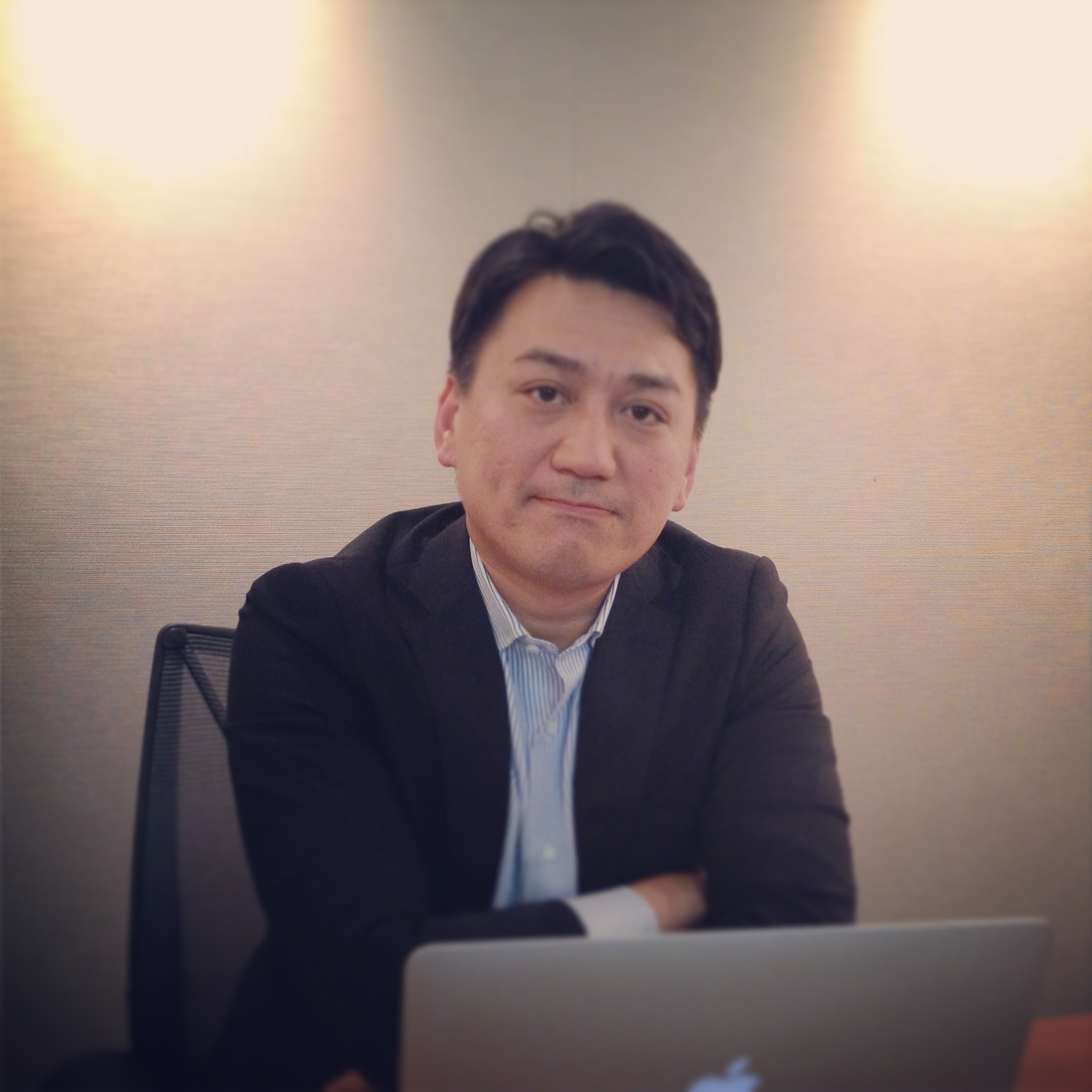
In my twenties, I set up a couple of new businesses. I experienced success and failure and found that being a manager and entrepreneur is extremely hard. I realized that I wanted to be part of the new media field that is impacting society. KMD was one of my motivations in the search for a new career.
Entering KMD, I wanted to work on projects that would be good businesses after graduation, however, when I joined a project led by Prof. Ichiya Nakamura, I realized that research on digital textbooks could have a great impact on society. The project was about organizing a consortium to develop digital media environments for primary school education. I never had an interest in this field before, but my indifference was because the Japanese educational system uses a one-size-fits-all approach, rather than supporting individual differences. At the same time, I developed a platform of distributing music as a personal research project.
Right now, I work for a US research company and analyze digital media and mobile phone markets. I work together with other analysts overseas and conduct projects abroad.
(This article was written in March 2013.)
Entering KMD, I wanted to work on projects that would be good businesses after graduation, however, when I joined a project led by Prof. Ichiya Nakamura, I realized that research on digital textbooks could have a great impact on society. The project was about organizing a consortium to develop digital media environments for primary school education. I never had an interest in this field before, but my indifference was because the Japanese educational system uses a one-size-fits-all approach, rather than supporting individual differences. At the same time, I developed a platform of distributing music as a personal research project.
Right now, I work for a US research company and analyze digital media and mobile phone markets. I work together with other analysts overseas and conduct projects abroad.
(This article was written in March 2013.)
TITLE Design research aimed at practical use in the real world
Yuichiro Kage
Japan
CAREER Enrolled in April 2009; Completed master’s degree in March 2011
Yuichiro Kage
Japan
CAREER Enrolled in April 2009; Completed master’s degree in March 2011
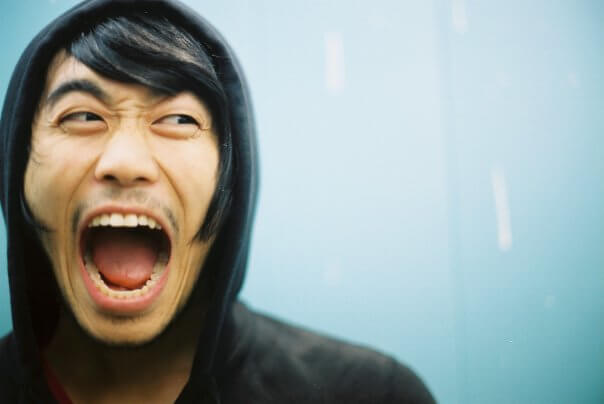
At KMD, I designed an application for the iPhone called Navinko and studied its practical use in research to make walking and riding a bicycle more fun. Now I work for a company called Recruit Life Style and design new user interfaces for software used by private users and companies. My experiences at KMD were invaluable and gave me the foundation for my current work.
(This article was written in March 2013.)
(This article was written in March 2013.)
TITLE Working by hand and thinking simultaneously
Takuya Isogai
Japan
CAREER Enrolled in April 2010; Completed master’s degree in March 2012
Takuya Isogai
Japan
CAREER Enrolled in April 2010; Completed master’s degree in March 2012
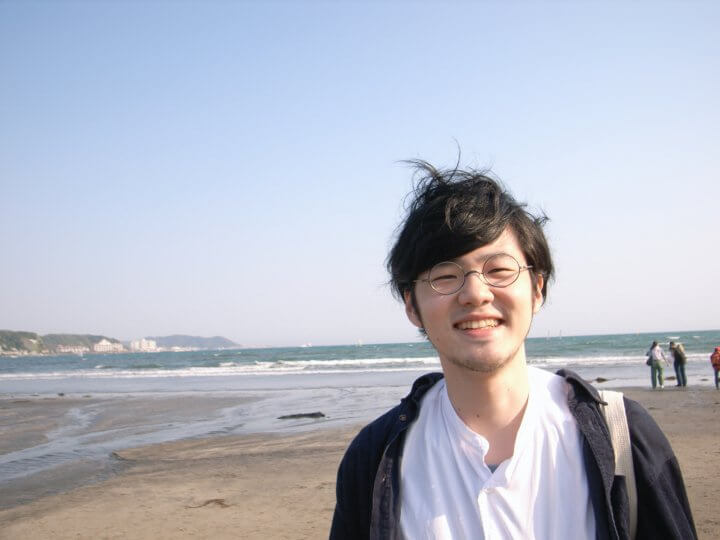
I studied Art History as an undergraduate. At the same time, I was involved in fashion design businesses in relation to brand management. My passion was to grasp how design itself operates in connection with society and this was the reason I decided to study at KMD. I researched medical service design at KMD, collaborating with a hospital and a medical institution. I accompanied nurses, made prototypes of services, and tested them thoroughly on the premises.
I currently work for a company, Recruit Life Style, and am responsible for setting up new services for clients as an engineer. My experiences at KMD, such as learning to understand conditions on the premises, along with using my hands and thinking at the same time, serve as the foundation for my current work.
(This article was written in March 2013.)
I currently work for a company, Recruit Life Style, and am responsible for setting up new services for clients as an engineer. My experiences at KMD, such as learning to understand conditions on the premises, along with using my hands and thinking at the same time, serve as the foundation for my current work.
(This article was written in March 2013.)
TITLE My experience at KMD as a foundation for becoming an entrepreneur
Akihiro Ichimura
Japan
CAREER Enrolled in April 2008; Completed master’s degree in March 2010
Akihiro Ichimura
Japan
CAREER Enrolled in April 2008; Completed master’s degree in March 2010
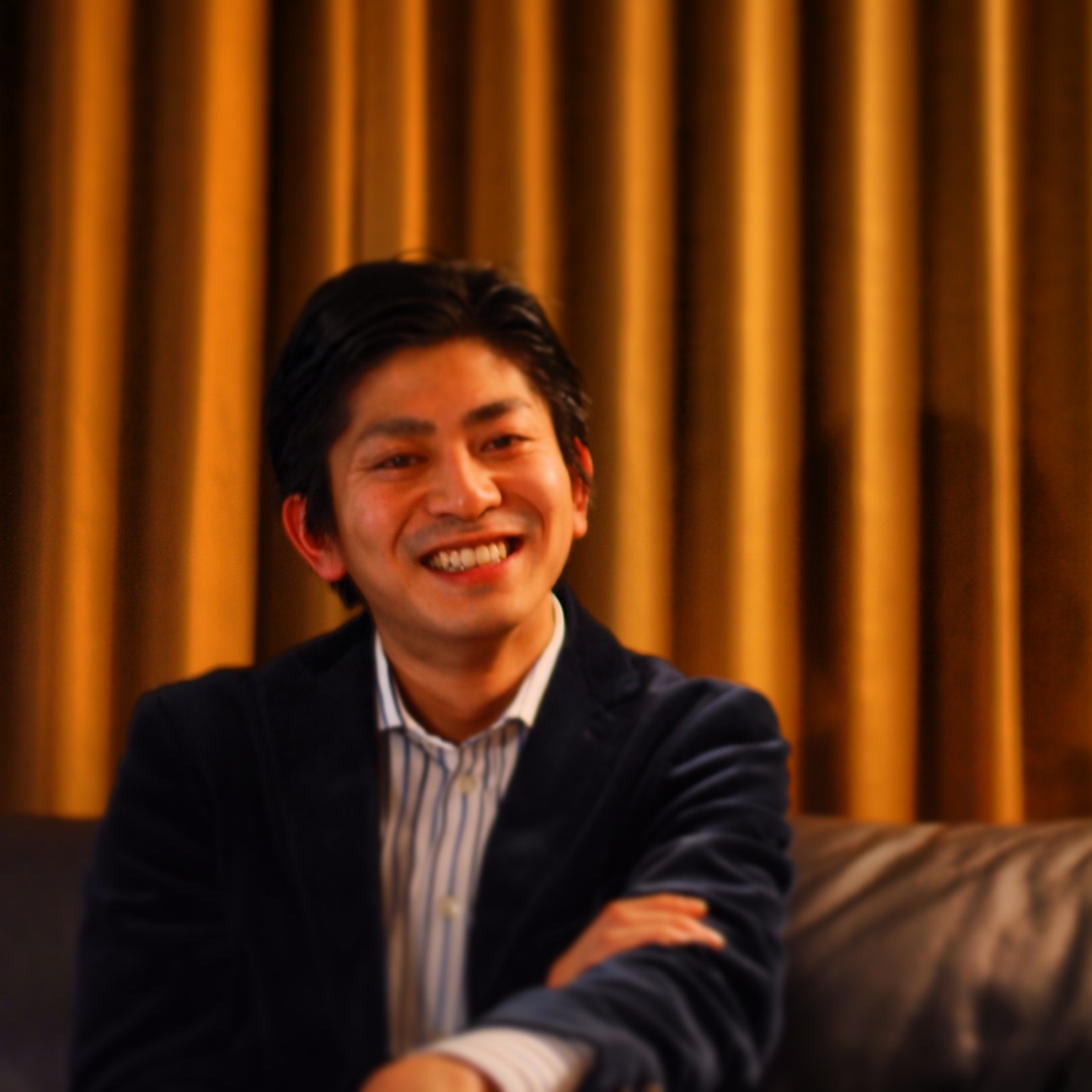
I was really impressed by KMD faculty members’ marked individuality when I attended a KMD information session. I felt strongly that the KMD “Real Project” would be my key to compete in society. At KMD, under Prof. Sam Furukawa and Prof. Hiro Kishi. I learned methods of analysis and the ability to take action to realize projects. The Real Project requires us to conduct field work research in the real world. By listening to users’ voices and figuring out their actual needs, we design and provide useful services. It is not too much to say that my experience in the project at KMD has become my foundation now.
After KMD, I set up a company called Live Styles Inc., where I manage and operate a system ‘tixee’ that sells tickets directly to smart phones. Tixee provides a platform for small event companies, who normally do not use major ticket agencies, but are now able to sell tickets easily.
KMD is a unique approach and learning experience, different from an MBA program and other graduate schools. I developed a large network of people, including classmates and faculty. I still keep in touch with professors and look forward to meeting more people who will change the world together.
(This article was written in March 2013.)
After KMD, I set up a company called Live Styles Inc., where I manage and operate a system ‘tixee’ that sells tickets directly to smart phones. Tixee provides a platform for small event companies, who normally do not use major ticket agencies, but are now able to sell tickets easily.
KMD is a unique approach and learning experience, different from an MBA program and other graduate schools. I developed a large network of people, including classmates and faculty. I still keep in touch with professors and look forward to meeting more people who will change the world together.
(This article was written in March 2013.)
TITLE The great importance of working together and working by hand
Chihiro Sato
Japan
CAREER Enrolled in April 2008; Completed master’s degree in March 2010 / Enrolled in April 2010; withdrawal from the doctoral program with the completion of course requirements in March 2013
Chihiro Sato
Japan
CAREER Enrolled in April 2008; Completed master’s degree in March 2010 / Enrolled in April 2010; withdrawal from the doctoral program with the completion of course requirements in March 2013
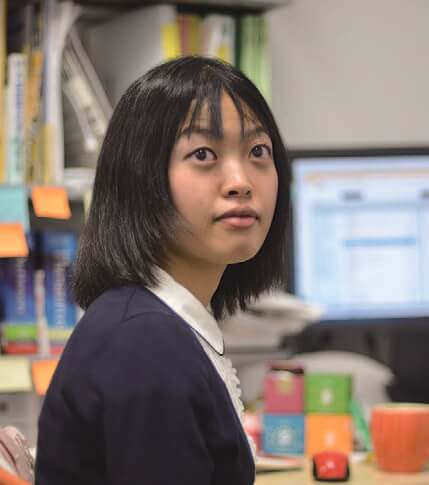
I was studying piano in New York during my childhood days, but for my bachelor’s degree in university, I studied economic geography; analyzing structures of urban cities. My passion, however, was to create something new with my own hands. I decided to join the first batch of KMD when I first noticed it on the poster on the Yamanote line. Even though I was barely able to use a laptop computer in the beginning, I learned to develop a system to build up a virtual map of my own interest using a portable device with multiple sensors, thanks to the great support by the project team members. I realized the importance of supporting each other as a team, to keep challenging and not to give up, and to create something new with our own hands. The process of creating something new was not just fun but painful as well, yet I decided to continue my studies as my Doctoral degree.
As my Doctoral works, I returned to my familiar passion of music and set up a project using music for designing environments. In the first year, my team and I worked on creating prototypes and proposed our project to various potential clients. After several presentations I met a partner company to work together with, and it was the moment I felt my research come to fruition.
Currently, my research is continuing with a shopping complex, working as the project director of the design of spaces, paths, and routes by using sounds to encourage customers to come and purchase goods in malls. My aim is to create a new design style of shopping malls that actually works in the business field.
(This article was written in March 2013.)
As my Doctoral works, I returned to my familiar passion of music and set up a project using music for designing environments. In the first year, my team and I worked on creating prototypes and proposed our project to various potential clients. After several presentations I met a partner company to work together with, and it was the moment I felt my research come to fruition.
Currently, my research is continuing with a shopping complex, working as the project director of the design of spaces, paths, and routes by using sounds to encourage customers to come and purchase goods in malls. My aim is to create a new design style of shopping malls that actually works in the business field.
(This article was written in March 2013.)
TITLE My Experiences in the Real Projects Continue to Serve Me Well
Daisuke Horiguchi
Japan
CAREER Enrolled in April 2008; Completed master’s degree in March 2010
Daisuke Horiguchi
Japan
CAREER Enrolled in April 2008; Completed master’s degree in March 2010
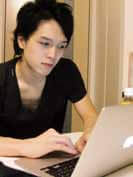
I chose KMD because I wanted to use my undergraduate research in the real world. The opportunity to participate in a real world project made it possible.
At KMD, I joined the “Policy Watch” project under Professor Hiroyuki Kishi. We created a video site that asked experts in politics and policy to explain policy and political trends to young people over the Internet. We worked with other media like “MSN Sankei” and “Diamond Online” to expand our viewer base and improve our recognition. We even expanded beyond the net. Each year we have an event where users can meet face to face and form a stronger community.
One of the best things about KMD is being involved in projects with people who have business experiences.
Most projects are very successful because the members’ different backgrounds add depth to the project.
I launched “Exim LLC” before I graduated from KMD. Our slogan is “using new media to design new experiences". We focus on new media development, web design, and web consulting. My experience in the KMD Real Projects build, handle, and fix. I am confident that if you repeat this process enough, you will create something great, and that confidence is an enormous asset. At Exim LLC, our design focuses on integrating the “three elements” of web, real interactions, and other media. We also try to ensure that the two basic elements of entertainment—value and convenience—are achieved. This is what I learned in the Real Projects, and I create new products and services with this I mind. I hope to create media and experiences that bring smiles to users’ faces.
(This article was written in March 2012.)
At KMD, I joined the “Policy Watch” project under Professor Hiroyuki Kishi. We created a video site that asked experts in politics and policy to explain policy and political trends to young people over the Internet. We worked with other media like “MSN Sankei” and “Diamond Online” to expand our viewer base and improve our recognition. We even expanded beyond the net. Each year we have an event where users can meet face to face and form a stronger community.
One of the best things about KMD is being involved in projects with people who have business experiences.
Most projects are very successful because the members’ different backgrounds add depth to the project.
I launched “Exim LLC” before I graduated from KMD. Our slogan is “using new media to design new experiences". We focus on new media development, web design, and web consulting. My experience in the KMD Real Projects build, handle, and fix. I am confident that if you repeat this process enough, you will create something great, and that confidence is an enormous asset. At Exim LLC, our design focuses on integrating the “three elements” of web, real interactions, and other media. We also try to ensure that the two basic elements of entertainment—value and convenience—are achieved. This is what I learned in the Real Projects, and I create new products and services with this I mind. I hope to create media and experiences that bring smiles to users’ faces.
(This article was written in March 2012.)
TITLE My Experience at KMD as a Foundation for Contributing to the World
Mizue Hayashi
Japan
CAREER Enrolled in April 2008; Completed master’s degree in March 2010
Mizue Hayashi
Japan
CAREER Enrolled in April 2008; Completed master’s degree in March 2010

I studied architecture as an undergraduate. I was involved in a project to design a hospital that provides care for the terminally ill. As I worked, I realized that the design of the physical structure restricted the experiences available to the patients and their families. This raised many questions in my mind. I decided to get involved in service design at KMD and to focus on design that can adapt flexibly to people’s lives, in particular.
I joined the “Medical Project” under Professor Naohito Okude and did fieldwork in collaboration with a university hospital, doctors association, and local practitioners to identify the challenges faced by local health care. For example, I accompanied doctors who provide home medical care on their visits, observed what they did and tried to identify the latent issues that the doctor, patient, family, and others were perhaps not yet aware of themselves. I then applied the design thinking approach to analyze my findings and designed an application to encourage collaboration among everyone involved in home medical care, as well as a web service to support patients after their discharge. We established a consortium in partnership with companies and began to roll out the services that we designed to the general public.
I currently work in an NTT lab in a group that wants to utilize the data collected in M2M interactions (communications between computers) for the betterment of the community and society at large. Right now I am analyzing the features of group communications and developing the technologies required to facilitate and energize real-world communities. In the future, I hope to develop technology for the health care and nursing fields, and to use that technology to create services.
The knowledge I gained at KMD has given me the foundation from which to achieve my goal of contributing to the world.
(This article was written in March 2012.)
I joined the “Medical Project” under Professor Naohito Okude and did fieldwork in collaboration with a university hospital, doctors association, and local practitioners to identify the challenges faced by local health care. For example, I accompanied doctors who provide home medical care on their visits, observed what they did and tried to identify the latent issues that the doctor, patient, family, and others were perhaps not yet aware of themselves. I then applied the design thinking approach to analyze my findings and designed an application to encourage collaboration among everyone involved in home medical care, as well as a web service to support patients after their discharge. We established a consortium in partnership with companies and began to roll out the services that we designed to the general public.
I currently work in an NTT lab in a group that wants to utilize the data collected in M2M interactions (communications between computers) for the betterment of the community and society at large. Right now I am analyzing the features of group communications and developing the technologies required to facilitate and energize real-world communities. In the future, I hope to develop technology for the health care and nursing fields, and to use that technology to create services.
The knowledge I gained at KMD has given me the foundation from which to achieve my goal of contributing to the world.
(This article was written in March 2012.)
TITLE Ability to Provide Solutions from Design Perspectives
Dore Gustavo
Brazil
CAREER Enrolled in September 2009; Completed master’s degree in September 2011
Dore Gustavo
Brazil
CAREER Enrolled in September 2009; Completed master’s degree in September 2011
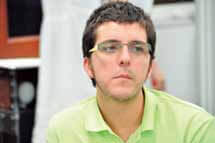
Before I enrolled, I was involved in marketing in Brazil. At KMD, I worked under Professor Masa Inakage and Professor Naohisa Ohta in the “Event Production” project. When Professor Naohito Okude launched a project on “Media Furniture”, I joined it too.
In the “Event Production” project, we researched new methods for events that use technology to increase the satisfaction and enjoyment of participants. There were many people from outside KMD involved as well, which gave me a valuable opportunity to interact with the Japanese business community. From my 2nd year onward, I concentrated on the “Media Furniture” project, where we used design thinking as the starting point for the creation of “furniture that can be used as media.” I studied both design and programming, but the most valuable part was learning to think like a designer. Among my best experiences after completion has been the realization that, when confronted with obstacles in my work, I can provide solutions from the perspective of a designer. KMD attracts interesting people from a wide variety of backgrounds. It expands your ideas and gives you a great network.
I currently work for Sony in product planning for the “VAIO” line. Next year, a new generation will be launched, and they contain some of my ideas. Manufacturers are always looking for new ideas and processes. I hope to use the design thinking process that I learned at KMD to create new methods for innovation in media.
(This article was written in March 2012.)
In the “Event Production” project, we researched new methods for events that use technology to increase the satisfaction and enjoyment of participants. There were many people from outside KMD involved as well, which gave me a valuable opportunity to interact with the Japanese business community. From my 2nd year onward, I concentrated on the “Media Furniture” project, where we used design thinking as the starting point for the creation of “furniture that can be used as media.” I studied both design and programming, but the most valuable part was learning to think like a designer. Among my best experiences after completion has been the realization that, when confronted with obstacles in my work, I can provide solutions from the perspective of a designer. KMD attracts interesting people from a wide variety of backgrounds. It expands your ideas and gives you a great network.
I currently work for Sony in product planning for the “VAIO” line. Next year, a new generation will be launched, and they contain some of my ideas. Manufacturers are always looking for new ideas and processes. I hope to use the design thinking process that I learned at KMD to create new methods for innovation in media.
(This article was written in March 2012.)
TITLE It’s Real, and that’s What Makes it Exciting
Marlin Lao Tambowon
Indonesia
CAREER Enrolled in September 2008; Completed master’s degree in March 2011
Marlin Lao Tambowon
Indonesia
CAREER Enrolled in September 2008; Completed master’s degree in March 2011
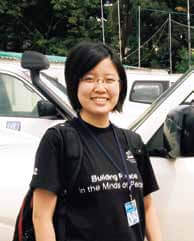
After I completed my undergraduate studies, I wanted to attend an international institution that focused on education. I chose KMD for my Master’s because I was interested in education that makes use of multimedia and information and communications technology (ICT).
In the “Global Education Project” under Professor Keiko Okawa, we worked in collaboration with School of Internet Asia (SOI Asia) to research remote education and e-learning over satellite-based Internet. I learned with whom to collaborate on a global scale to provide support to people in remote locations. I built on that to create a project to use story formats to teach Portuguese to elementary school children in East Timor. We opened a portal site to create a structure for cooperation with Portuguese speakers located around the world.
The best thing about KMD is the experience of Real Projects.
Rather than just books and computers, you get out into the real world for your research and you create concrete products and services. The fact that it is real makes it that much more exciting.
I am currently a junior project assistant in the “Engineering, Science Technology and Informatics Unit” (EST). I work in cooperation with universities in the Asia-Pacific region to create e-learning and remote education services at the higher education level. In the future, I want to continue to be involved with international organizations creating educational opportunities for developing countries. I hope to contribute to the reform of the educational system in Indonesia, my home country.
(This article was written in March 2012.)
In the “Global Education Project” under Professor Keiko Okawa, we worked in collaboration with School of Internet Asia (SOI Asia) to research remote education and e-learning over satellite-based Internet. I learned with whom to collaborate on a global scale to provide support to people in remote locations. I built on that to create a project to use story formats to teach Portuguese to elementary school children in East Timor. We opened a portal site to create a structure for cooperation with Portuguese speakers located around the world.
The best thing about KMD is the experience of Real Projects.
Rather than just books and computers, you get out into the real world for your research and you create concrete products and services. The fact that it is real makes it that much more exciting.
I am currently a junior project assistant in the “Engineering, Science Technology and Informatics Unit” (EST). I work in cooperation with universities in the Asia-Pacific region to create e-learning and remote education services at the higher education level. In the future, I want to continue to be involved with international organizations creating educational opportunities for developing countries. I hope to contribute to the reform of the educational system in Indonesia, my home country.
(This article was written in March 2012.)
TITLE Working with such a Wide Range of People Improves Your Social Skills
Lan-Lan Ma
Taiwan
CAREER Enrolled in September 2009; Completed master’s degree in September 2011
Lan-Lan Ma
Taiwan
CAREER Enrolled in September 2009; Completed master’s degree in September 2011
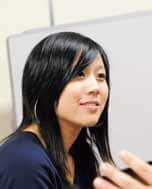
I had always wanted to be involved with people from different cultural and professional backgrounds in Tokyo. I enrolled in KMD because I wanted to improve my skills in marketing and project management as well as my social skills.
At KMD, my studies focused on project management and human-computer interaction (HCI). I participated in the “CUTE Center” that examined the relationships between toys and digital life. In our project, we used an SNS platform to design the “Pettymo” interactive toy. Our goal was to improve safety for children online as well as in the real world.
I now work at HTC, a smartphone manufacturer, as a producer in the design studio. My job is to oversee the entire lifecycle beginning with concept development, and to provide simple, clear explanations of product concepts and requirements to the design, development, and quality assurance units. I look forward to increasing my depth of understanding in areas such as user experience design, mobile interfaces, and communications design. I also want to study how mobile technology can be used in human resources development and childhood education.
(This article was written in March 2012.)
At KMD, my studies focused on project management and human-computer interaction (HCI). I participated in the “CUTE Center” that examined the relationships between toys and digital life. In our project, we used an SNS platform to design the “Pettymo” interactive toy. Our goal was to improve safety for children online as well as in the real world.
I now work at HTC, a smartphone manufacturer, as a producer in the design studio. My job is to oversee the entire lifecycle beginning with concept development, and to provide simple, clear explanations of product concepts and requirements to the design, development, and quality assurance units. I look forward to increasing my depth of understanding in areas such as user experience design, mobile interfaces, and communications design. I also want to study how mobile technology can be used in human resources development and childhood education.
(This article was written in March 2012.)




